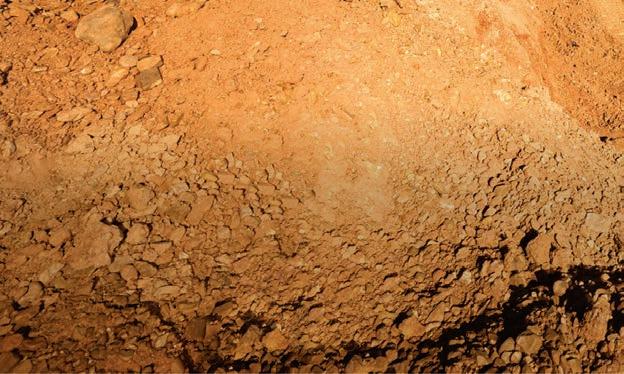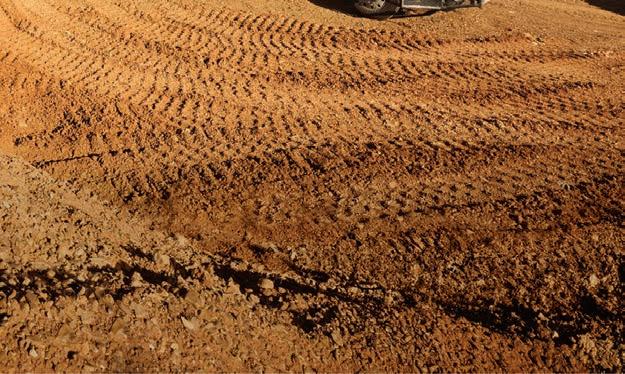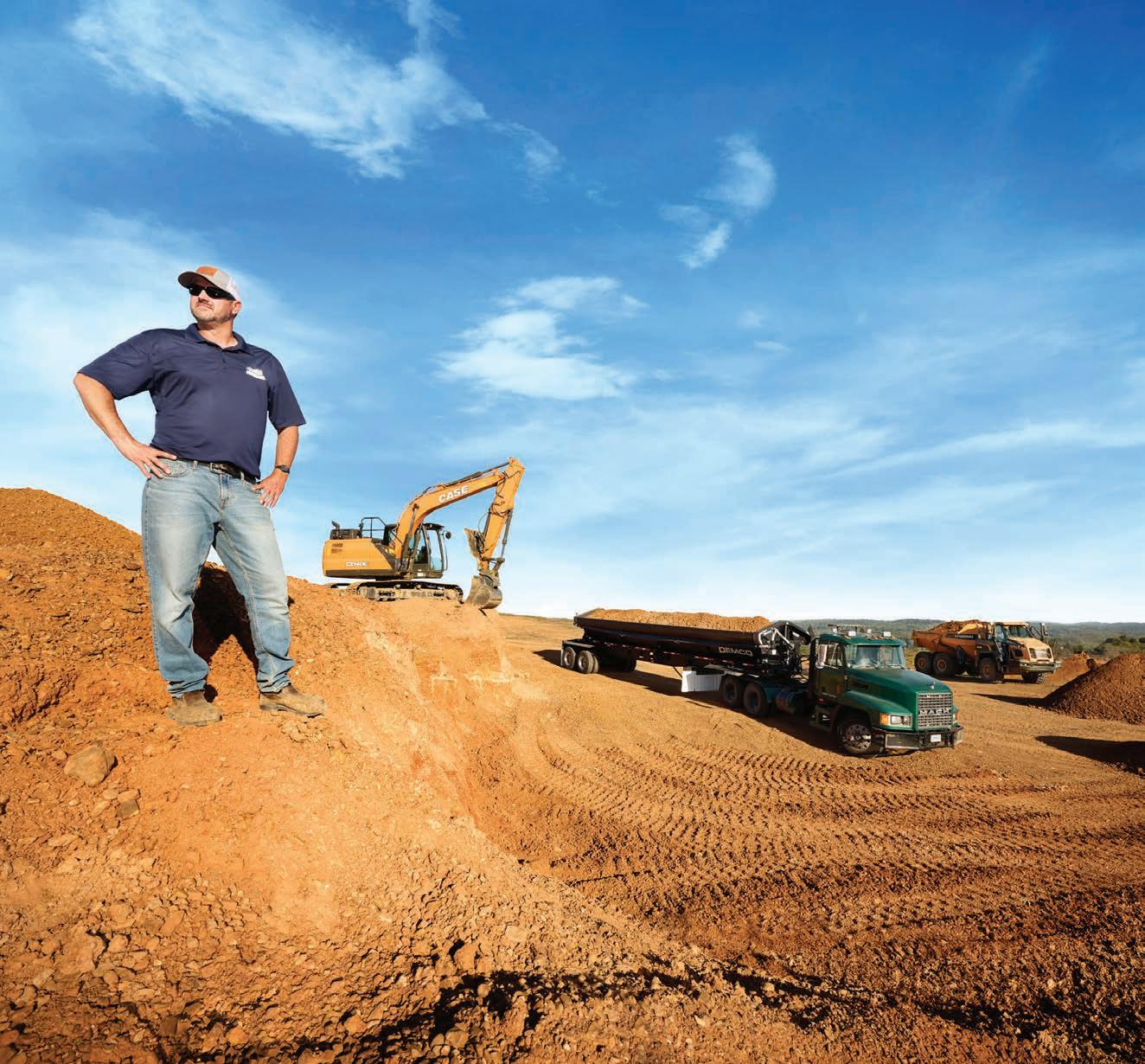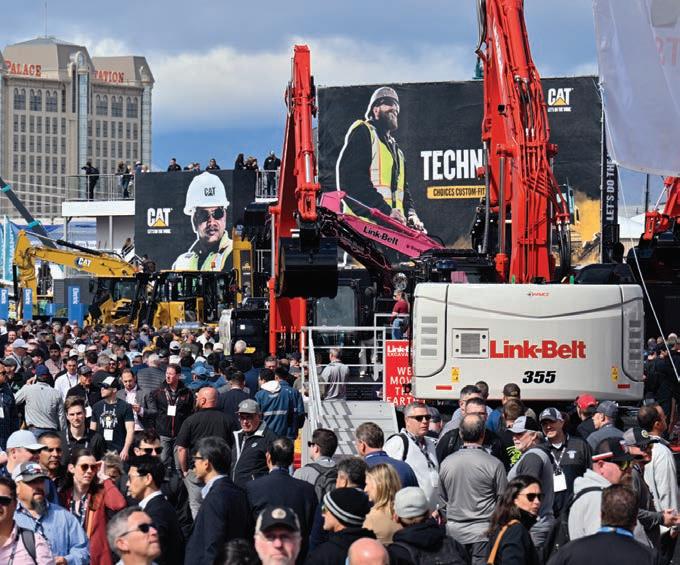












Haver & Boecker Niagara delivers exceptional results through fascinating engineering p10


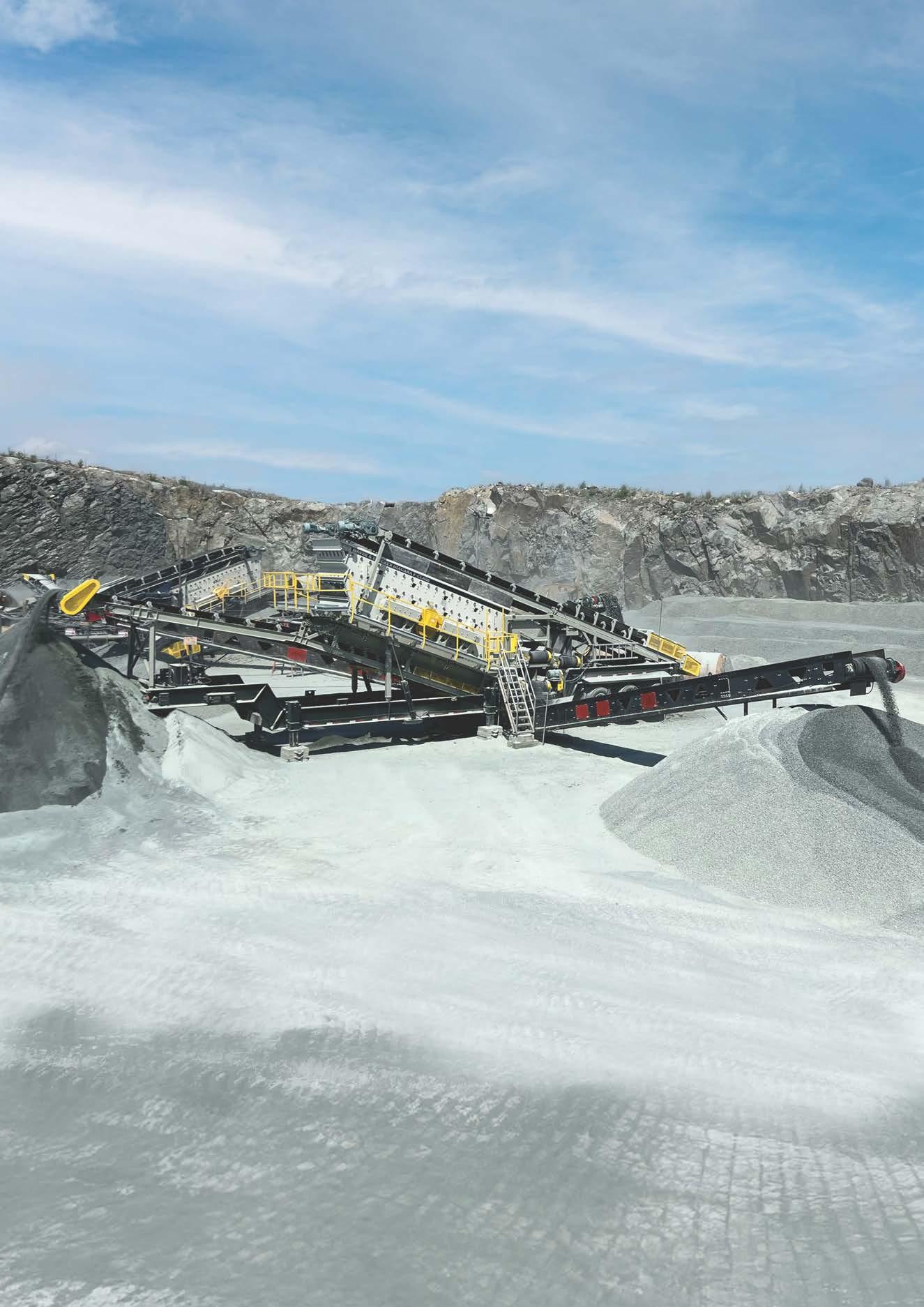







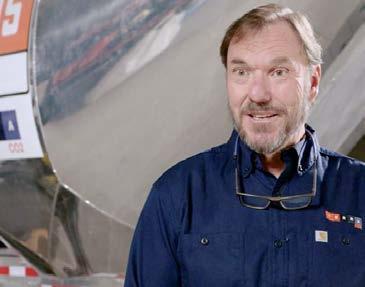




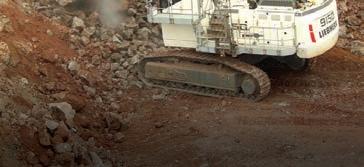
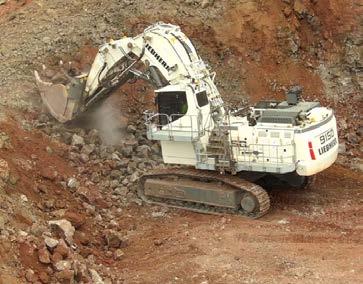




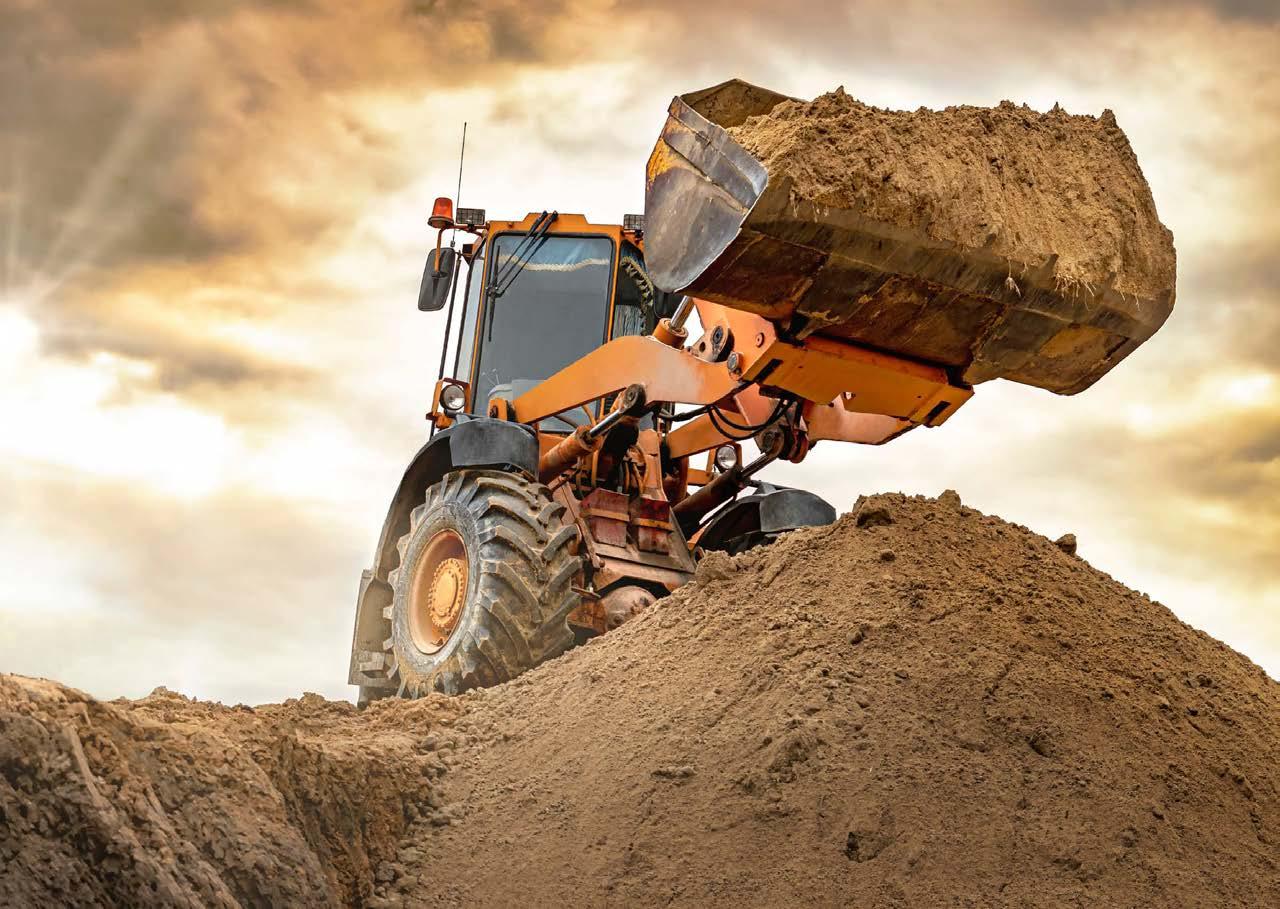
“As we look at advanced machines and
we need people that want to learn and grow with the technology.”

Tales from a greener building materials industry. 06 INDUSTRY NEWS
The latest news and updates from around the US quarry and aggregates sector. 06 NSSGA
The latest updates and activities from the National Stone Sand & Gravel Association for its members.
54
All the key events and trade shows in the quarrying and aggregates world.


Eccentric screening technology can support productivity and e ciency in quarry operations.
Terra CO2 CEO Bill Yearsley discusses the company's rise and future plans.
How Liebherr US supported Hawaii’s largest concrete producer.
How ABB is challenging conceptions in the motor manufacturing market.
Paolo Zambianchi discusses how Holcim Italy is embracing technology.
McLanahan and SunEnviro open the doors for an industry open house event.
CDE showcases its latest water management solution in action.
The latest updates and innovations from global loading equipment manufacturers.
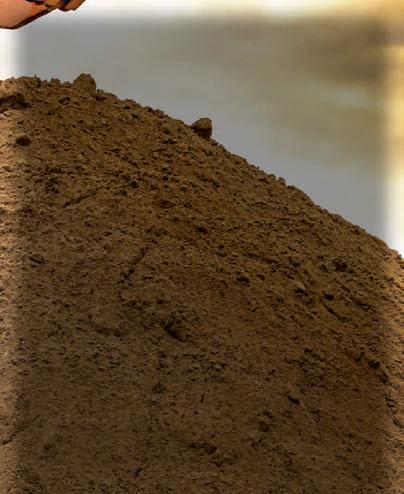

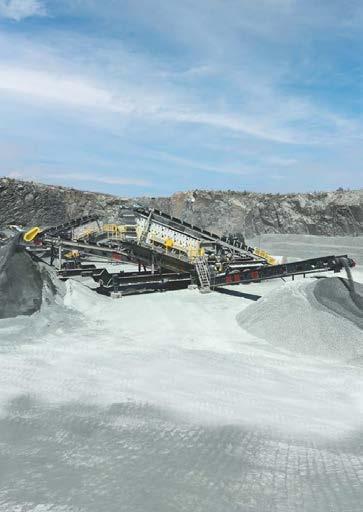








48
50
52






From new haulers to successful case studies, hauling manufacturers take centrestage. 42
The latest equipment is unveiled in the crushing and screening sector.
Rockbreakers and drill rigs are increasingly prominent in the quarrying and aggregates sector with impressive results. 46
Develon’s machinery continues to impress in quarrying operations.
The unsung heroes of the quarrying operation, the latest tyre developments
Volvo CE showcases its range of digital solutions for quarries.
The latest updates ahead of the North American trade show’s return in 2026.
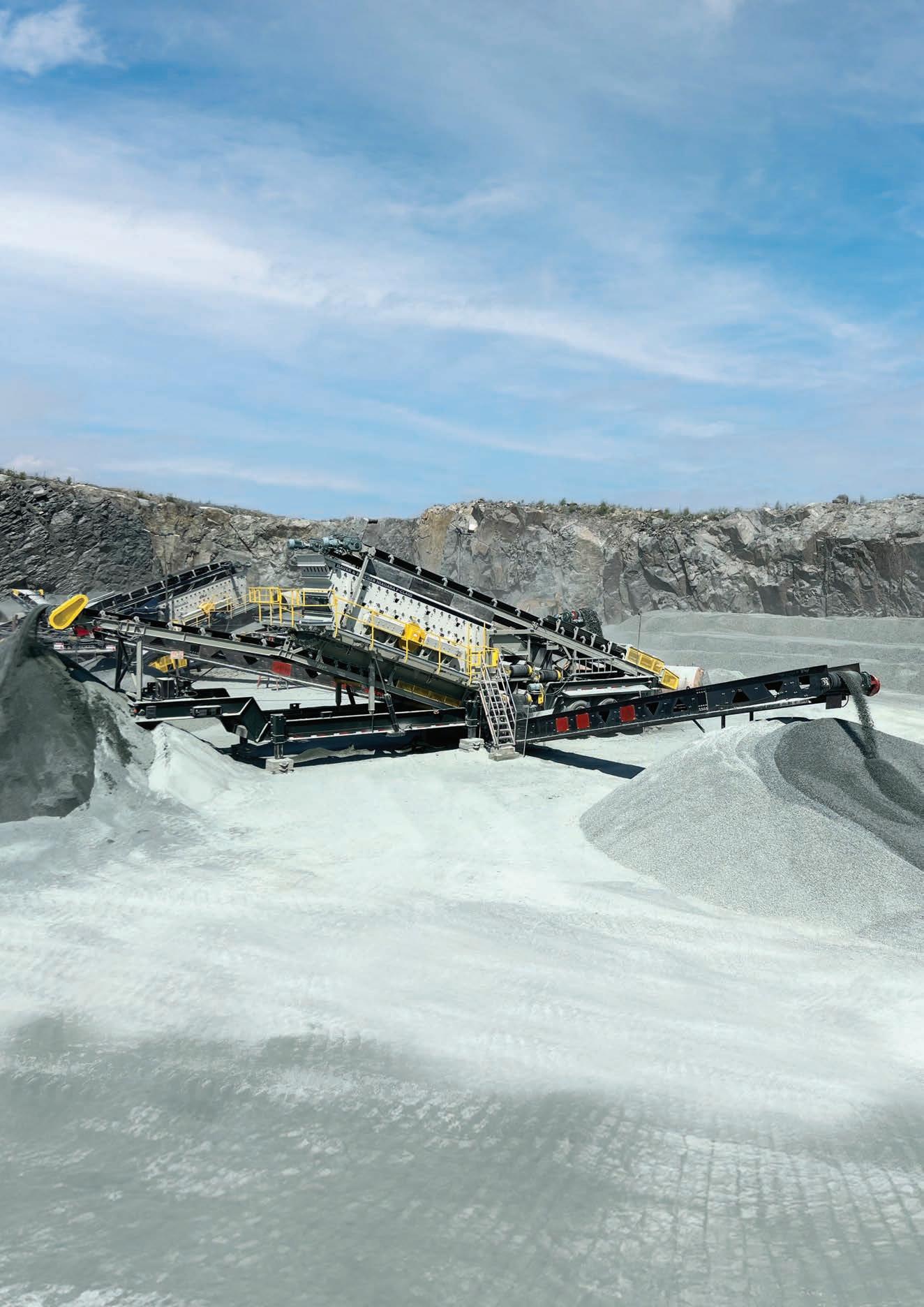

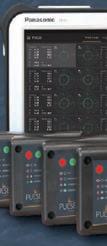

















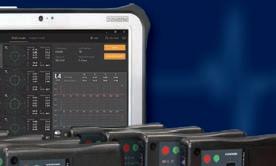
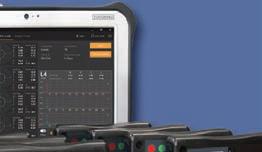


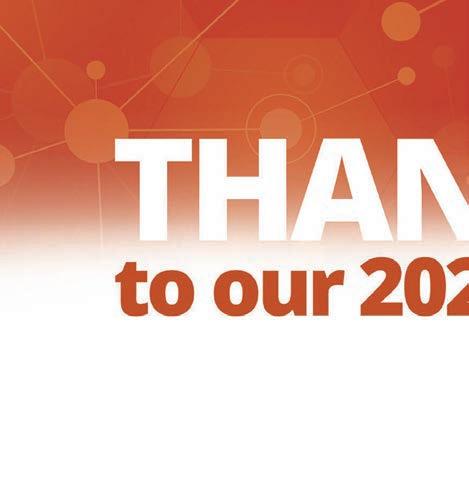


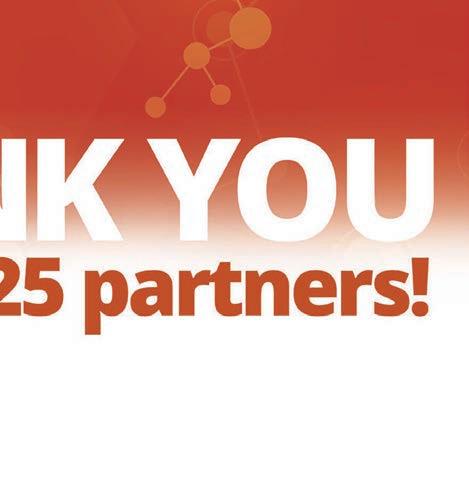








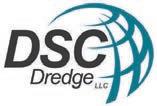

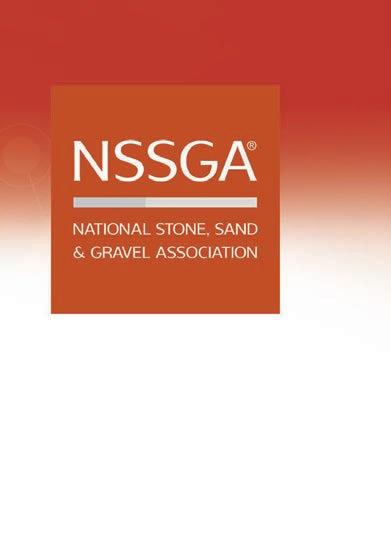



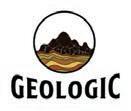













HEAD OFFICE
Prime Global Publishing Capitol Square 4–6 Church Street Epsom, KT 17 4NR
EDITOR
Guy Woodford +44 (0) 7879 408 069 guy.woodford@primeglobalpublishing.com
ASSISTANT EDITOR
Adam Daunt adam.daunt@primeglobalpublishing.com
BUSINESS DEVELOPMENT MANAGER
Les Ilyefalvy +61 423 177 966 les.ilyefalvy@primeglobalpublishing.com
CHAIRMAN
John Murphy
CHIEF EXECUTIVE OFFICER
Christine Clancy
GROUP MANAGING EDITOR
Paul Hayes
CLIENT SUCCESS MANAGER
Janine Clements +61 432 574 669 janine.clements@primeglobalpublishing.com
ART DIRECTOR
Michelle Weston
COVER IMAGE CREDITS Haver & Boecker Terra CO2 NSSGA Liebherr USA SUBSCRIPTIONS subscriptions@primeglobalpublishing.com
No part of this publication may be reproduced in any form whatsoever without the express written permission of the publisher. Contributors are encouraged to express their personal and professional opinions in this publication, and accordingly views expressed herein are not necessarily the views of Prime Global Publishing. From time to time statements and claims are made by the manufacturers and their representatives in respect of their products and services. Whilst reasonable steps are taken to check their accuracy at the time of going to press, the publisher cannot be held liable for their validity and accuracy.
PUBLISHED BY Prime Global Publishing
AGGREGATES BUSINESS USPS: is published six times a year.
PRINT: ISSN 2051-5766
ONLINE: ISSN 2057-3405
PRINTED BY: Warners (Midlands) PLC


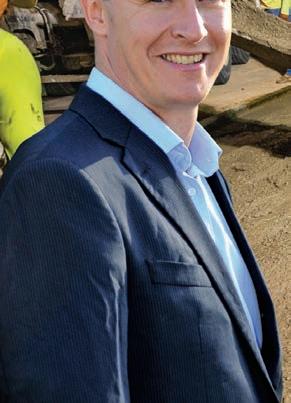
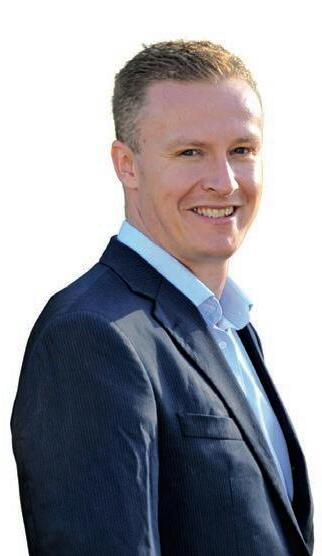


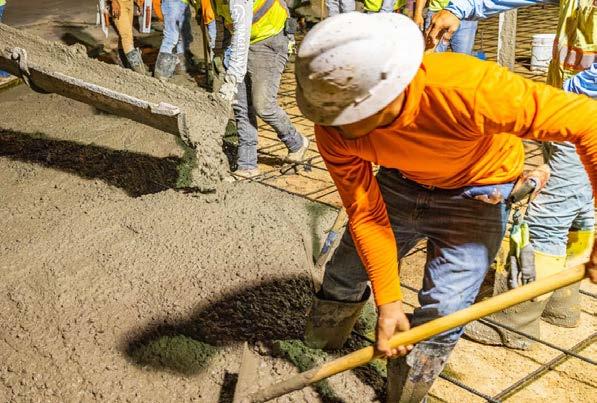
t was very interesting to read a post on LinkedIn by Ecocem, a major European provider of high-performance, low-carbon cement technologies, that cement produced in the US has one of the highest carbon footprints globally, due to the use of more clinker – the most CO2 -intensive component of cement –than most other regions.
Ecocem stated that the average clinker-tocement ratio in America is 0.88. Globally, the gure is 0.76, and in the EU, India, and China, it typically ranges from 0.64 to 0.76. As a result, Ecocem noted the emissions intensity of US cement in 2019 was approximately 20 per cent higher than that of other major producers.
Among the many stories I have been working on in recent weeks for Aggregates Business America are two in-depth interviews with senior gures at Terra CO2 and Fortera, two ambitious US-based start-ups specialising in low-carbon cement technology.
North America is catching up with Europe in its embrace of greener building materials, with a mixture of new legislation and increasing customer preference for low-carbon products fuelling rising demand.
Inside this issue, you will read about the rapid rise of Terra CO2, as told by charismatic chief executive of cer Bill Yearsley. After securing signi cant investment in its innovative supplementary cementitious materials (SCM) as alternatives to Portland cement and y ash products, including from Breakthrough Energy Ventures (BEV), the climate fund of American businessman and philanthropist Bill Gates, the company recently began building its future commercial facilities.
Terra CO2 is establishing a commercial processing facility in the Dallas-Fort Worth market, capable of producing up to 240,000 tonnes per year of its SCM products. The funding will also expand the company’s of ces and industrial facilities, as well as develop commercial projects and new cementitious products.
Utilising local feedstocks from existing aggregate mines and works within existing industry infrastructure, Terra CO2’s second
product, OPUS Zero, is currently undergoing active concrete trials, and Yearsley said this will serve as a full replacement for Portland cement.
“Yes, we are a climate company, but we are a construction materials company rst. We aim to create products that people will buy, regardless of whether there is a climate bene t. The fact that Terra’s cementitious materials also offer signi cant carbon mitigation is an additional advantage for the built environment. It’s the icing on the cake,” he told Aggregates Business America
My interview with Fortera chief executive of cer Ryan Gilliam will appear in the November-December 2025 issue of Aggregates Business America
In early August, Graymont and Fortera con rmed the details of a strategic partnership agreement, which will leverage Graymont’s lime production operations to produce Fortera’s ReAct low-carbon cement. Simultaneously, Graymont’s network of manufacturing infrastructure and supply chain will help accelerate the deployment of Fortera’s technology.
As Gilliam noted, cement is the glue in concrete, with concrete the second most consumed thing on Earth after water, with cement also responsible for 8 per cent of the world’s CO2 emissions.
As such, low-carbon building material technology specialists, such as Fortera, are working increasingly closely with industry champions, including the Global Cement & Concrete Association (GCCA), as well as the corporate venture capital and open innovation units of international building material groups, to achieve commercial viability at scale for their solutions.
I love the ambition of Colorado-based Terra CO2 and California-based Fortera. In both cases, ambition is backed by major funding from building materials industry partners and venture capital investors.
It will not be long until other North American start-ups, like Terra CO2 and Fortera, capture the attention of the Stateside building materials market. GW guy.woodford@primeglobalpublishing.com
Shippensburg.


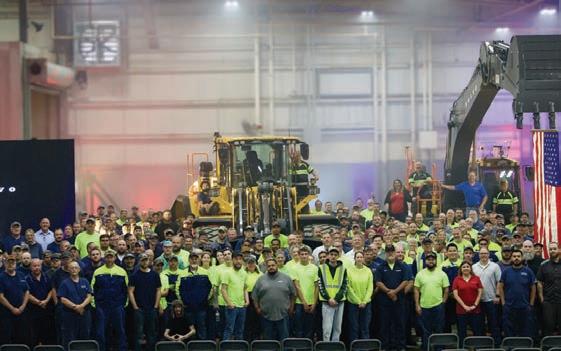
Volvo Construction Equipment (Volvo CE) is making a signi cant investment to expand production in North America as part of a worldwide project. For crawler excavators, three main sites will see approximately $261 million invested to expand crawler excavator production, meeting growing customer demands, mitigating supply chain risks, and reducing reliance on long-distance logistics. These sites include Shippensburg, Pennsylvania, USA; Changwon, South Korea; and a location in Sweden.
In Shippensburg, Volvo CE will not only add crawler excavator production but also expand wheeled loader production to include large wheeled loaders. Currently, soil and asphalt compactors, as well as mid-size wheeled loaders, are manufactured at the Shippensburg factory.
Updates will be made to the existing space within the factory to install assembly lines, integrate more automation technologies into the manufacturing process, and train employees, with the goal
of being production-ready by the rst half of 2026.
Head of Volvo CE Melker Jernberg said that in a rapidly evolving market, strategically enhancing production capacity and exibility will allow the original equipment manufacturer (OEM) to meet current and future customer demands more effectively.
“We must respond to growing demand, and we’re excited to expand our facilities to serve our customers better,” he said. “This investment underscores our commitment to quality and innovation, allowing us to deliver even greater value.”
By expanding production capabilities in key markets, Volvo CE will reduce dependency on any single site and become less reliant on long-distance logistics. Supply chain risks will also be mitigated by expanding domestic supplier bases, allowing the OEM to manage any economic or regulatory challenges more nimbly.
Jernberg said that fostering collaboration with local
suppliers and customers will better position the company for sustained growth and innovation, without compromising the company’s high standards.
“Bringing excavator production to North America and growing the range of wheel loader models built here has always been part of our long-term industrial plan, so it’s exciting to nally share this news with our employees, dealers and customers,” Volvo CE head of region for North America Scott Young said.
“This increase in production capacity means that over 50 per cent of our North American machine supply can be built here in Shippensburg, resulting in shorter lead times while also creating opportunities for supplier growth.”
Volvo CE acquired the Shippensburg site in 2007 from Ingersoll Rand and relocated its regional headquarters there in 2012. In addition to recent investments, Volvo CE will invest approximately $40 million locally over the next ve years.
Granite has secured two acquisitions to expand its presence in the North American construction materials sector.
Granite has acquired Warren Paving and Papich Construction, which provides it with additional aggregate reserves and resources, including quarries, asphalt plants, and paving and civil construction operations.
“We are excited to welcome Warren Paving and Papich Construction. Their management teams have strong track records of success, and we look forward to combining our businesses,” Granite president and chief executive of cer Kyle Larkin said.
“These acquisitions mark another signi cant step forward as we continue to grow our industry–leading, vertically-
integrated business. With our strong cash generation and robust acquisition pipeline, I expect to continue to grow our home markets through bolt-on transactions and expansion into new markets.”
The acquisitions expand Granite’s aggregate reserves and resources by 30 per cent, with a 27 per cent increase in its annual aggregate production.
Warren Paving operates in the Mississippi River and Gulf Coast regions, including one quarry, one sand and gravel operation, 11 aggregate yards, three asphalt plants, and a eet of 168 owned and leased barges. The assets add to Granite’s plant network across Mississippi.
Papich Construction has a reputation for delivering infrastructure projects, including
road, rail, and highway construction. The company supplies both internal projects and third-party customers with a full suite of asphalt and aggregates products, including sand, gravel, and crushed rock. The acquisition includes a gravel mine, two quarries and two asphalt plants. Barclays served as the exclusive nancial advisor to Granite on the acquisition of
Warren Paving. A&O Shearman served as legal advisor to Granite on the acquisitions of Warren Paving and Papich Construction.
“These acquisitions are in line with our capital allocation strategy and reinforce our focus on driving sustainable, longterm value creation for our shareholders,” Granite executive vice president and chief nancial of cer Staci Woolsey said.



Heidelberg Materials North America has unveiled its Heidelberg Materials Remote Optimisation Center (HROC), which is expected to play a key role in its cement plants.
The HROC initiative will see Heidelberg Materials North America implement new technologies that will support real-time analytics and automation in its cement plant network.
The initiative was first mentioned as part of the company’s Capital Markets Day.
“With HROC, we strive to empower our plants with centralised expertise to deliver transformational growth and sustainability improvement,” HROC vice president Angeles Garza said.
“This will be made possible by implementing advanced levels of optimisation, the standardised adoption of new technologies and advanced process control.”
According to the US construction materials producer, HROC will support its managers achieve
Heidelberg Materials



better outcomes with outage planning, reliability, quality, process engineering and control room operations. The company has said it will have flow-on e ects with more sustainable energy use.
“We believe that the future of plant operations lies in knowledge exchange, new technologies and digital solutions as well as standardised execution. Knowledge sharing from a remote center fosters collaboration, accelerates
problem-solving, and spreads best practices faster than ever before,”
Heidelberg Materials North America said in its release.
“By improving e ciency, we are unlocking measurable gains—not just in reliability and cost, but in reducing CO₂ emissions through smarter, more sustainable energy use.
“Heidelberg Materials has assembled a talented team to drive this initiative and is excited about the journey ahead.”
Silvi Materials has confirmed a definitive agreement to acquire all of Eagle Rock Concrete’s assets and operations.
The deal means Eagle Rock Concrete will operate as Eagle Rock Concrete, a Silvi Materials Company.
Eagle Rock Concrete, based in North Carolina as a readymix concrete producer, expands Silvi Materials’ presence into the Southeastern construction market.
Eagle Rock’s nine highproduction ready-mix plants will be added to Silvi’s network.
“This is more than a business transaction — it’s the continuation of a legacy,” Eagle Rock Concrete president Jay Loftin said. “Silvi Materials brings deep operational expertise, powerful logistics capabilities, and a genuine respect for the culture we’ve built. We’re excited for what we can accomplish together.”
The AEM Manufacturing Express has concluded its month-long tour of the equipment manufacturing capital of America, Texas. The tour, which launched on 1 August in Mount Pleasant and nished on Friday, 29 August, in Houston, travelled to 22 manufacturers across 17 Texas cities, celebrating the 345,000 men and women of the Texas equipment manufacturing industry – more than any other state.
This month’s tour followed last year’s historic and award-winning tour, which spanned 22 states and 80 facilities. Across the 22 Texas stops, over a dozen local, state, and federal lawmakers took facility tours, joined in celebratory events, and heard directly from industry workers.
“From visits to family-owned manufacturers to global brands, this month’s tour was a strong reminder of the far-reaching impact of our industry,” AEM president and chief executive of cer Megan Tanel said.



“We were grateful to put a spotlight on the people that make our industry stronger. Every worker we met along the tour has a story, and those stories deserve to be told.”
Each stop of the tour invited attendees to play the ‘Manufacturing Challenge,’ an interactive game testing knowledge of the equipment manufacturing industry, for a chance to win giveaways.
Attendees were also invited to become advocates for the industry by joining AEM’s national grassroots campaign, I Make America.
“As the equipment manufacturing capital of America, Texas leads by example: investing in its workforce, understanding the promise of American manufacturing, and championing pro-growth policies,” AEM senior
vice president of government and industry relations Kip Eideberg said.
“Our month-long tour was about celebrating this success, and most importantly, the people that work behind the scenes.
From welders to engineers, the equipment manufacturing industry is only as strong as its people, and this tour was about recognising their role in making America – and the world.”
Government a airs sta from the NSSGA, NAPA and NRMCA speak before the joint Hill Day at the
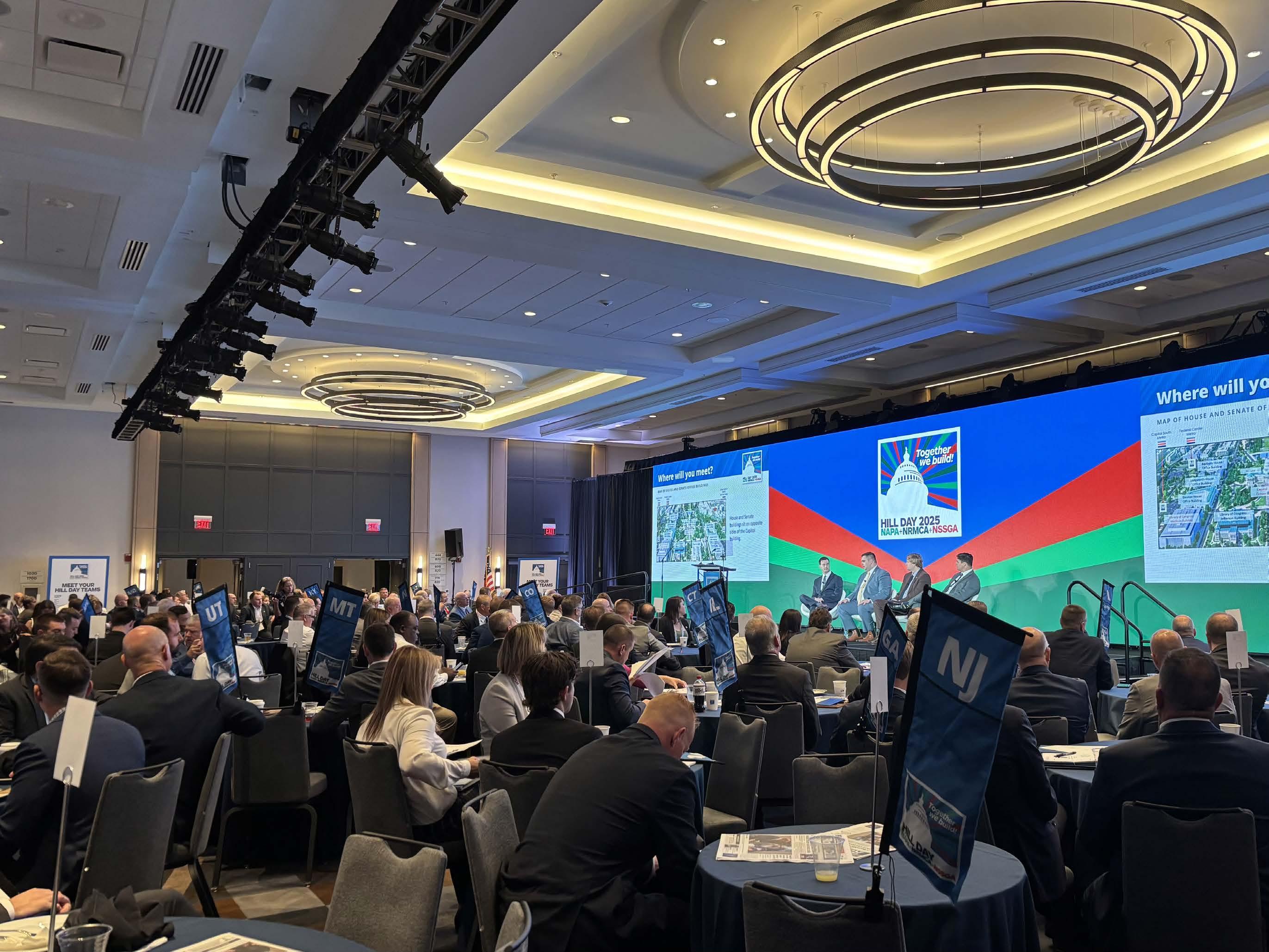
National Stone, Sand & Gravel Association (NSSGA) lead communications coordinator Will Carlson updates members on the organisation’s latest activities.
The National Stone, Sand & Gravel Association (NSSGA) provides a forum for the aggregates industry to connect, exchange ideas and grow as an industry. Much of this connection takes place at our annual events.
In fact, NSSGA’s annual events are one of the most valuable bene ts our association offers. And, from our Young Leaders Annual Meeting to the Leadership Summit, NSSGA provides events for members in every career stage and industry sector.
Two of our largest and most important annual events are the Legislative & Policy Forum (LPF) in the fall and the Annual Convention in the spring. Both events feature several days of programming and attract hundreds of attendees.
The NSSGA’s LPF is the association’s annual event focused on advocacy in our nation’s capital.
Each year, our members meet in Washington, DC, to conduct the business of our association and share the story of our industry with elected of cials. This year’s LPF took place from September 16 to 19 and attracted over 340 attendees from nearly every state in the US.
Over four days, our members came together to discuss challenges and opportunities, and to advocate for the industry before Congress.
Once again, NSSGA was joined by members of the National Asphalt Pavement Association (NAPA) and the National Ready Mixed Concrete Association (NRMCA) for our annual joint Hill Day on September 18. Participants met with members of Congress and their staff to share our industry priorities for the upcoming surface transportation reauthorisation bill. NSSGA’s government relations team, together with counterparts from NAPA and NRMCA, were on hand to lead attendees through every part of the advocacy process and educate key
policymakers on important issues. At the end of the day, attendees had the opportunity to mingle with members of Congress and their staff at a well-attended reception on Capitol Hill. In just one day, Hill Day attendees completed more than 350 meetings with lawmakers and their staff.
Along with our Hill Day programming, LPF included general sessions featuring messages from industry leaders and government of cials, committee meetings, and a breakout session on environmental justice. Attendees heard from Sean McMaster of the US Department of Transportation, Jim Tymon of the American Association of State Highway and transportation of cials and other leading transportation voices. The LPF is also when NSSGA announces the winners of its annual Awards of Excellence. Out of over 200 applicants, 25 producer member facilities were recognised for excellence in community relations, environmental responsibility and workplace safety.

The next Legislative & Policy Forum will take place September 20-23, 2026.
Annual Convention and CONEXPO-CON/AGG
Looking ahead, the next NSSGA Annual Convention will take place March 1-4, 2026, at the Fontainebleau in Las Vegas, Nevada. This event attracts hundreds of attendees for general sessions and insightful keynotes, committee meetings and the opportunity to build meaningful industry connections.
The annual convention always features engaging general sessions with speakers from a variety of backgrounds.
Previous convention speakers have ranged from sports legends like Cal Ripken Jr. and Joe Theismann, to music stars including
2025 Annual Convention
attracted over 600 attendees.
The Warren Brothers, to scienti c experts like neuroscientist Dr Helena Boschi. This time, we will welcome NFL hall of famer Terry Bradshaw as our keynote speaker.
Whether the topic is entrepreneurship, leadership or even brain science, each session offers important lessons to advance your business and career.
The annual convention also provides breakout sessions open to all attendees, where subject matter experts and industry leaders discuss our biggest challenges, share new ideas, and demonstrate innovative technologies. Examples of past sessions include “harnessing solar power for the aggregates industry” and “becoming an effective grassroots advocate,” with more engaging content planned for 2026.
Beyond general and breakout sessions, the annual convention involves networking receptions, events for young leaders, meetings on workforce development and sustainability, updates from NSSGA’s government and regulatory affairs team and more.

The 2026 Annual Convention will coincide with CONEXPO-CON/AGG. Held every three years, CONEXPO-CON/AGG is North America’s largest construction trade show. Registration for CONEXPO-CON/AGG 2026, taking place March 3-7 at the Las Vegas Convention Center, is already open. Visit conexpoconagg.com to learn more. AB
For more information, please visit nssga.org or contact meetings@nssga.org.
Haver & Boecker Niagara processing equipment technology manager, Duncan High, discusses how technology can optimise a quarry’s e ciency and productivity.
Global demand for aggregates and mining materials is expected to continue rising, with the construction aggregates market projected to grow from US$444.7 billion in 2024 to $796.3 billion by 2034. That’s a lot of material, which means producers need ef cient equipment to meet speci cation and turn a meaningful pro t.
Every tonne of material must go over at least one vibrating screen, so ensuring the equipment’s ef ciency is critical to an operation’s success.
The good news is that there are technologies available today that can help increase or improve screening productivity. Integrating cutting-edge systems, such as eccentric screening technology, state-ofthe-art screen media, and diagnostic tools, can prevent blinding, pegging, carry over, or contamination, thereby improving screening performance, productivity, and pro ts.

Heighten screening action
Vibrating screens engineered with a double eccentric shaft assembly maintain a constant stroke to prevent g-force uctuations during material surging. The double eccentric shaft design forces the screen body to follow the movement of the shaft. While the shaft travels up, the counterbalance weights move in the opposite direction and create a force equal to what is generated by the body.
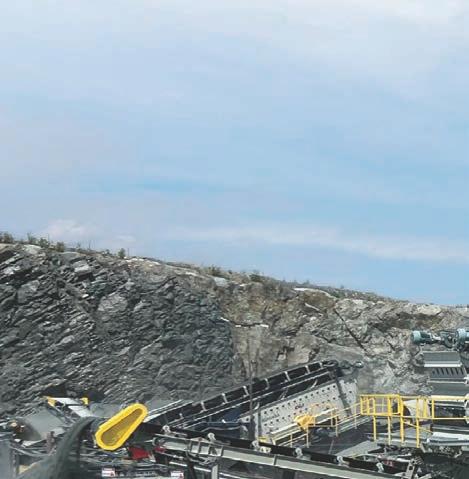
As a result, the forces cancel each other out, maintaining a consistent positive stroke that handles material volume spikes without losing momentum.
One producer in Western Canada quickly saw the bene ts of switching to double eccentric screening technology when they replaced two horizontal vibrating screens with one double eccentrically driven, four-bearing, inclined portable screening plant.
Changing their equipment helped eliminate surging, blinding, pegging, and material contamination challenges, while increasing production by 25 per cent.
Reduce damaging vibrations
A vibrating screen’s operation can have a signi cant impact on the surrounding environment of a machine. The metal springs on a traditional concentric vibrating screen, for example, can be noisy to operate.
chassis, when used with portable equipment, which protects the integrity of the machine.

This metal-to-metal movement, whether up and down or side to side, can cause excessive noise and vibration. To resolve this problem, double eccentric technology utilises shear rubber mounts that are strategically designed to minimise lateral movement.
The rubber mounts reduce noise while maintaining smoother operation, even in extreme circumstances such as overloading, surging and starting or stopping under load.
The use of eccentric technology virtually eliminates vibration in the structure, or
This means producers can potentially utilise multiple eccentric vibrating screens within a single structure, thereby boosting productivity. Attempting to operate multiple concentric machines in a structure, however, could create vibrations that are damaging enough not only to affect the quality of production negatively but also to open the door to safety risks and possible downtime.
A leading phosphate producer in North America — producing nearly 8 million tonnes per year — increased screening area by 60 per cent by transitioning to double eccentric equipment. The mine features a six-story screening plant that houses multiple vibrating screens, which operate continuously. Multistory screen houses are common in the industry, but they can pose structural concerns due to the vibrating screens’ size, capacity, and force. Opting for double eccentric technology eliminated those concerns.
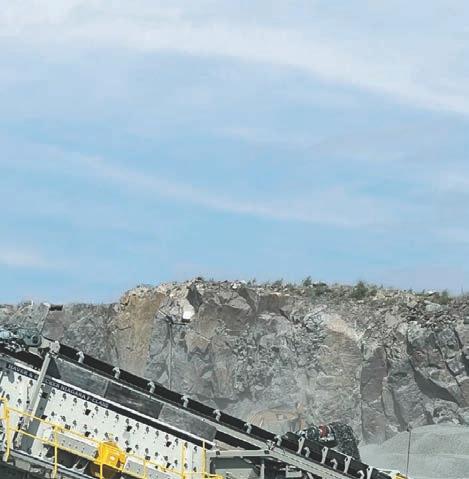
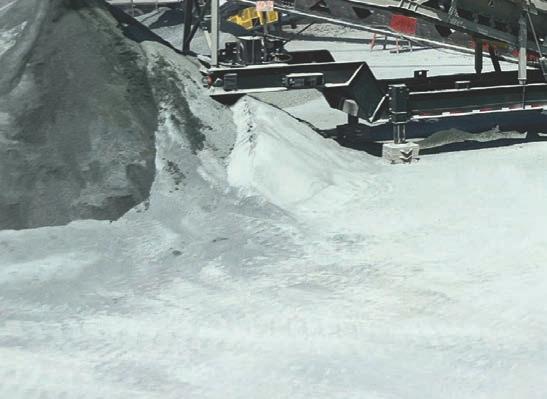
Expanding screening capabilities
As the demand for exible processing solutions grows, portable screening plants have become increasingly important in mining and aggregates operations. These mobile systems allow producers to bring screening capabilities directly to the source, reducing material handling and setup time. When paired with eccentric drive technology, portable plants

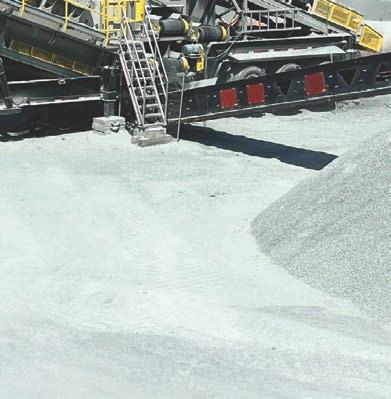
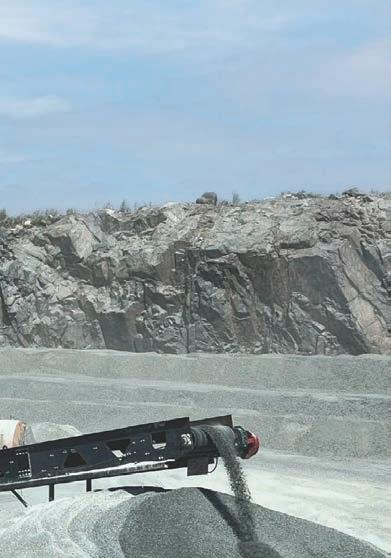

can maintain high screening ef ciency while minimising structural vibration.
This combination supports safer operation and enables the use of multiple vibrating screens on a single chassis, even in challenging environments. The result is a more adaptable screening solution that meets production goals without compromising performance or safety.
Combining the use of advanced eccentric screening technology with the best screen media for the application is a recipe for success. Speci cally, polyurethane screen media can be a valuable asset to any operation seeking to prevent blinding and pegging while enhancing material strati cation and extending wear life.
Polyurethane media offers the best combination of open area and wear life for both wet and dry applications. In particular, polyurethane screen media that is poured open cast can result in a wear life that is one-and-a-half to two times longer than that of injection-moulded products. Open-cast polyurethane permanently hardens when cured, maintaining its chemical properties and improving wear life.
Alternatively, injection-moulded screen media can soften when temperatures rise, resulting in shorter wear life. Polyurethane screen media also features tapered openings to reduce the risk of blinding and pegging.
The solution to improving material strati cation lies in nding the ideal mix of screen media types to ensure all phases of screening work correctly. A screen media company that offers a variety of screen media types can help evaluate how material moves through the three stages of screening, from layered to basic to sharp, to provide recommendations on the best screen media for a speci c application. Producers can customise the screen deck by choosing screen media that maximises productivity for each phase by blending the best combination of open area and wear life.
A vibrating screen requires regular maintenance checks to operate optimally. Vibration analysis and diagnostic systems designed speci cally for vibrating screens by original equipment manufacturers (OEM) are reliable tools for maintaining the continued

ef ciency and longevity of screening machines. To ensure optimal productivity, operations can partner with an OEM that specialises not only in manufacturing equipment but also offers additional diagnostic tools, product-speci c knowledge, and years of engineering experience.
Utilising vibration analysis software, for example, enables mining and aggregates operations to monitor a vibrating screen’s performance in real-time, detecting problems before they lead to diminished performance, decreased ef ciency, and increased operating costs. The most robust systems incorporate eight wireless sensors that magnetically fasten to key areas of a vibrating screen, measuring orbit, acceleration, deviations, and other important data points that indicate the machine's condition. The sensors send realtime information wirelessly to be analysed, ideally by an OEM-certi ed service technician who can provide a detailed summary and recommendations. Some manufacturers utilise vibration analysis technology to provide impact testing, also known as a bump test, which ensures proper machine calibration and promotes ef cient operation. Impact testing involves striking the machine at key points with a dead blow hammer while the machine is off. Vibration analysis sensors are placed at key locations on the vibrating
Blinding, pegging, carryover, and contamination can be prevented.

By integrating eccentric screening technology, state-of-the-art screen media, and diagnostic tools, blinding, pegging, carryover, and contamination can be prevented.
screen while a technician tests the natural frequency of a machine. Based on the results, engineers can adjust machine parameters to prevent operating in resonance, which can reduce productivity, cause damage to vibrating screens, and pose safety risks. It is essential to note that the natural frequency can shift over time as components are repaired or replaced; therefore, the impact test should be conducted regularly. By incorporating impact testing into an operation’s regular maintenance routine, producers can ensure optimum screening performance and equipment reliability.
Another advanced diagnostic tool is condition monitoring, which is designed to monitor the health of vibrating screens using modern algorithms and arti cial intelligence. The system utilises permanent sensors that monitor the equipment 24/7 to capture real-time information and provide alerts via e-mail immediately upon the rst sign of a potential problem. By constantly monitoring the accelerations of the vibrating screen, certain systems can even forecast the equipment’s dynamic condition in regular intervals of 48 hours, ve days and four weeks. With consistent use, condition monitoring software will accurately identify and predict critical issues, advising when to schedule maintenance and what to focus on during that planned downtime. By using diagnostic programs to conduct regular analysis and engaging in predictive and preventive maintenance, operations will experience minimised downtime through faster problem-solving, lower repair costs, and increased peace of mind.
The development of the double eccentric screen and other screening technologies provides operations with innovative and costeffective ways to increase their pro ts and ef ciency. By integrating the right equipment, screen media, and vibration analysis systems, producers can achieve more uptime, higherquality results, increased productivity, and greater pro ts. AB



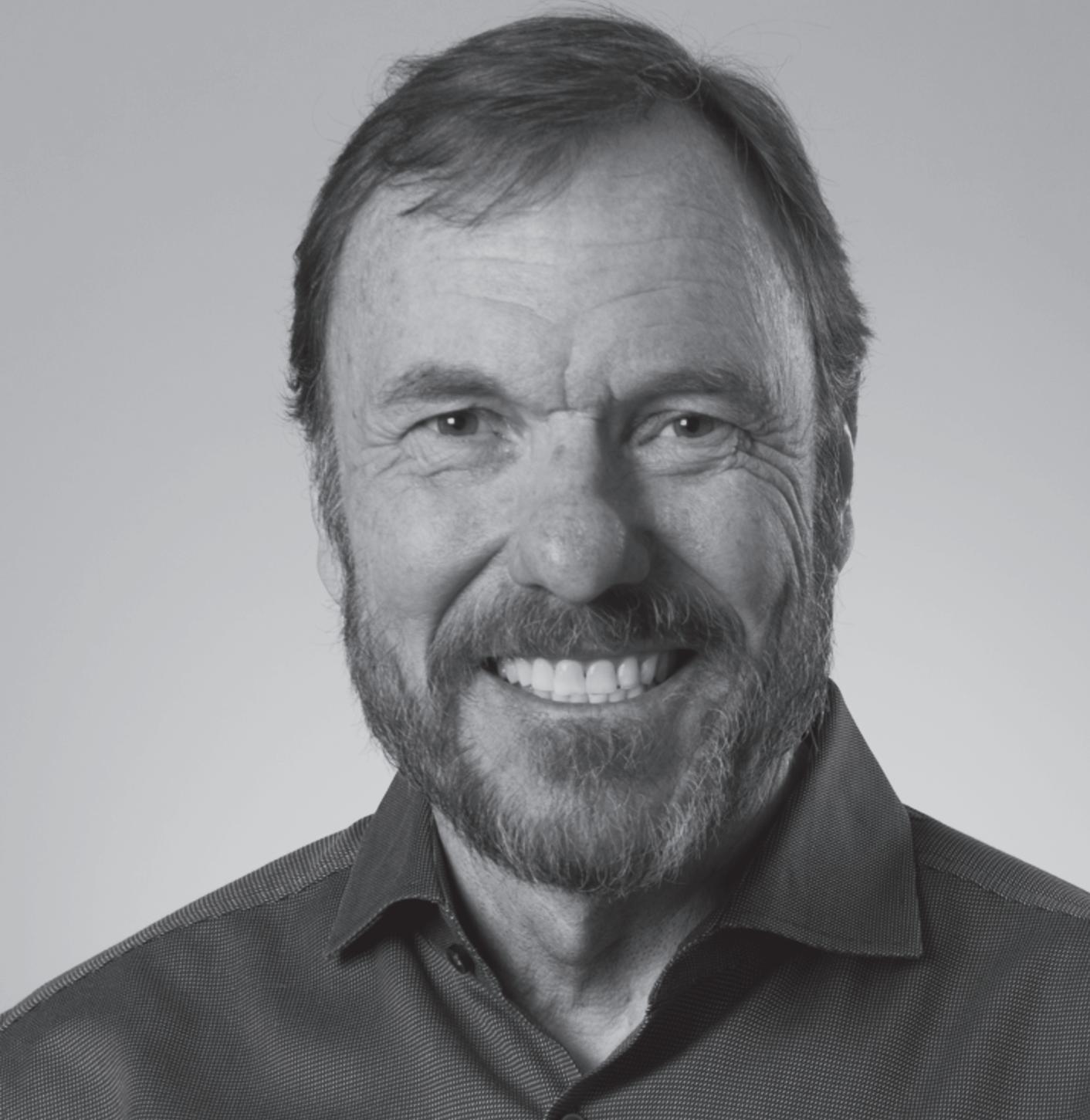



Terra CO2 recently began building its future commercial facilities which will continue the business’s impressive rise and next steps.
In 2018, Bill Yearsley was semi-retired and enjoying life in Denver, Colorado, after a highly successful 40-plus-year career in the global building materials industry, when, out of the blue, he received an intriguing telephone call.
“I was on the board of a frac-sand company that a big hedge fund had capitalised and one of the hedge fund’s partners, whom I’d become a good acquaintance of, called to say that there was this small Canadian mining company in Vancouver that does project development in the Yukon that had a big mine tailings waste stream problem,” he told Aggregates Business America
“They were looking for a solution and had hired a young geologist from the University of British Columbia, Donald John Lake (DJ Lake). He had gured out a way to take mine tailings waste and use it as a cementitious product in an out-of-the-way place in the Yukon.
“The small company’s chief executive of cer realised that this application might have broader appeal than just in the Yukon, and he also knew the same hedge fund partner I did, so he asked him if he knew anyone who could help develop DJ Lake’s solution. The hedge fund partner said he knew someone who had ‘been in construction materials forever’, so I got the call.
“The hedge fund partner asked if I had any interest in this and, if so, the hedge fund could come in as an early start-up partner. I said I wasn’t interested, but he still wanted to email me the information package on this mining company. I made the mistake of reading it over a weekend, and it caught my eye.
I phoned back and said, ‘You know what. I’ve got a son working in Seattle. I’ll y up to Vancouver to see this company and then go and visit my son afterwards. I said I’ll let you know if I have any brilliant ideas for developing this solution.”
After leasing a hire car in Vancouver, Yearsley drove to the mining company’s registered trading address.
“I was trying to nd this place, which seemed to be in an old industrial area. I went down something akin to a back alley and saw an open garage door and a guy in a welding apron and hood,” he said.
“Then I saw the mining company’s dustcovered address sign above him. What struck me was not the dusty old garage; I saw a scientist who knew what a welding torch was. I parked and got talking to him.”
Yearsley described DJ Lake as a “little apprehensive at rst”.
“We then went to lunch, and I ended up spending two days asking him a lot of questions. He told me he’d worked on his cementitious product from waste solution since around 2016,” Yearsley said.
“I was intrigued by how smart this guy was, and also by the fact that he was practical. Following that trip, I contacted the CEO of DJ’s small mining company and offered to work as an advisor for six months, dedicating a few hours a week to help them develop this solution.
“At the end of those six months, I was pretty convinced it was viable, had legs to scale up, and could be meaningful in decarbonising cement.
“I told the CEO, ‘At my age, time matters.’ I said that his company had to be an American company, with the Canadian company becoming a subsidiary of the US business (now Terra CO2).
“That would enable us to raise some real investor capital. In the rst funding round, in 2020, I was trying to raise $2 to $3 million as the company was operating on fumes. There was not much money in the bank.”
Through a series of mutual acquaintances, Yearsley and his company were introduced to Breakthrough Energy Ventures (BEV), the Climate Fund of American businessman and philanthropist Bill Gates.
Terra CO2’s major investors include Breakthrough Energy Ventures (BEV), the Climate Fund of American businessman and philanthropist Bill Gates (pictured).

“I met a (BEV) partner, and he thought the cement from waste solution was interesting and thought they may be able to invest $1 million. I thought that was great, as was the company's association with Bill Gates,” Yearsley said.
“The next day, I got a call from this partner who said that one of the senior guys (at BEV) wanted to talk to me. I asked who it was, and he said, ‘It’s the guy who signs Bill Gates’ cheques’. I said, ‘I guess I can make time for that.’ It was a scheduled half-hour evening call, but we ended up staying on for over an hour and a half. The next morning, the partner called up and said, ‘I don’t know what happened last night, but the marching orders I got were we want to invest in Terra CO2, we want to own 30 per cent of the company, and we don’t care how much money they raise.’ We ended up raising $10 million with Breakthrough Energy Ventures leading the funding round. I believe to this day, the ($1 million) cheque that they wrote is still the fastest they ever wrote from an initial meeting: from the handshake introduction to the cheque signing was just three-and-ahalf weeks.”
From just two employees at the end of the company’s rst funding round in 2020, Greater Denver-based Terra CO2 began scaling its business, moving beyond lab scale and building pilot plants for its rst product, OPUS SCM. A BEV-led Series A funding round in 2022 raised another $45 million for the company.
“We have since had a Series B funding round that raised another $125 million. It is likely to raise another $35 million to $40 million, as we have people knocking on the door wanting to join us, so we have kept that funding round open,” Yearsley said.
In July this year, Aggregates Business reported that the Series B funding from new strategic investors is supporting the build-out of Terra CO2’s future commercial facilities.
In addition to its Series B co-leads, BEV, Eagle Materials, GenZero, and Just Climate, the new funding round included other key industry players. This included major investment from Barclays Climate Ventures, as well as Prologis, Cemex, and Siemens Financial Services, the nancing arm of Siemens.
Terra CO2 is establishing a commercial processing facility in the Dallas-Fort Worth market, capable of producing up to 240,000 tonnes per year of its SCM products. The funding will also expand the company’s of ces and industrial facilities, as well as develop commercial projects and new cementitious products.
Terra CO2 is utilising local feedstocks from existing aggregate mines and works within existing industry infrastructure.
The business’s second product, OPUS Zero, is currently undergoing active concrete trials, and, Yearsley said, will serve as a full replacement for Portland cement in time.
“We say, ‘Yes, we are a climate company, but we are a construction materials company rst’. We aim to create products that people

will buy, regardless of whether there is a climate bene t. The fact that Terra’s cementitious materials also offer signi cant carbon mitigation is an additional advantage for the built environment. It’s the icing on the cake,” he said.
“We arrived at 240,000 tonnes per year of SCM products production for the new facility after calculating that the SCM market in the Greater Denver area is around 450,000 to 500,000 tonnes of consumption per year, based on historical SCM company business. So, having a plant that has the potential to capture half of that seemed logical.
“Dallas-Fort Worth is the largest concrete market in the US. You could have four or ve plants, like our new one, there. We understand that we won’t be able to capture 100 per cent of the local SCM product market immediately. We will break ground on our Dallas-Fort Worth plant this fall, and it is expected to start operating in early 2027.”
Yearsley has built several businesses on his own, but the core part of his earlier career was his time as CEO and chairman of Redland PLC’s Construction Aggregate Group, leading 12,000 staff across three continents.
“I was working in concrete, ready-mix, aggregates, asphalt, asphalt paving, and precast, and we were probably one of the world’s biggest consumers of cement, so I’ve dealt with all the major cement companies,” he said.
With sales of $2.5 billion annually, Redland PLC specialised in concrete roof tiles, aggregates, stone quarrying, road surfacing materials, concrete products, and clay bricks. The company was acquired in 1997 by Lafarge for £1.8 billion. Its roo ng division was subsequently sold to the Monier Group, and, since 2017, has been known as BMI Redland, part of the BMI Group.
Despite his vast wealth of experience in the building materials world, Yearsley said he has found a “unique” industry colleague in DJ Lake, who is in his mid-thirties and has taken on the role of chief science of cer at Terra CO2.
“I’ve never worked with a scientist who is not only brilliant but also has a lot of common sense. He understands economics. I told him at the beginning we weren’t going to develop anything that wasn’t commercially competitive without government subsidies. Such subsidies always go away. You need to stand up and grow up as a real business, and I wanted to do that from the beginning,” Yearsley said.
Yearsley said that while OPUS SCM and OPUS Zero are “pre-revenue”, Terra CO2 does Pouring Terra CO2’s OPUS SCM.
operate two pilot production plants: a small one at its research and development centre in Vancouver, and a larger one in Western Denver, close to the famous Coors Brewery.
“We don’t make enough to build an airport runway or a building, but we can make enough SCM to supply a 200 cubic metre concrete project. We also do demonstration concrete pours. We contributed OPUS SCM to a section of an interstate highway in Minnesota, where it was said to perform great. We supplied part of the concrete for a new Porsche dealership in Texas, and we also have a project coming up at one of a major global company’s large distribution centres. Generally, we replace anything from 20 per cent to 40 per cent of Portland cement,” Yearsley said
Cement production contributes signi cantly to global CO2 emissions, accounting for around 8 per cent of the total. Yearsley said that the methods for reducing cement’s carbon footprint are evolving.
“If you talk to the big public cement companies, around a dozen notable names, a lot will say that the most immediate way to reduce their cement carbon footprint is via engineered SCMs,” he said.
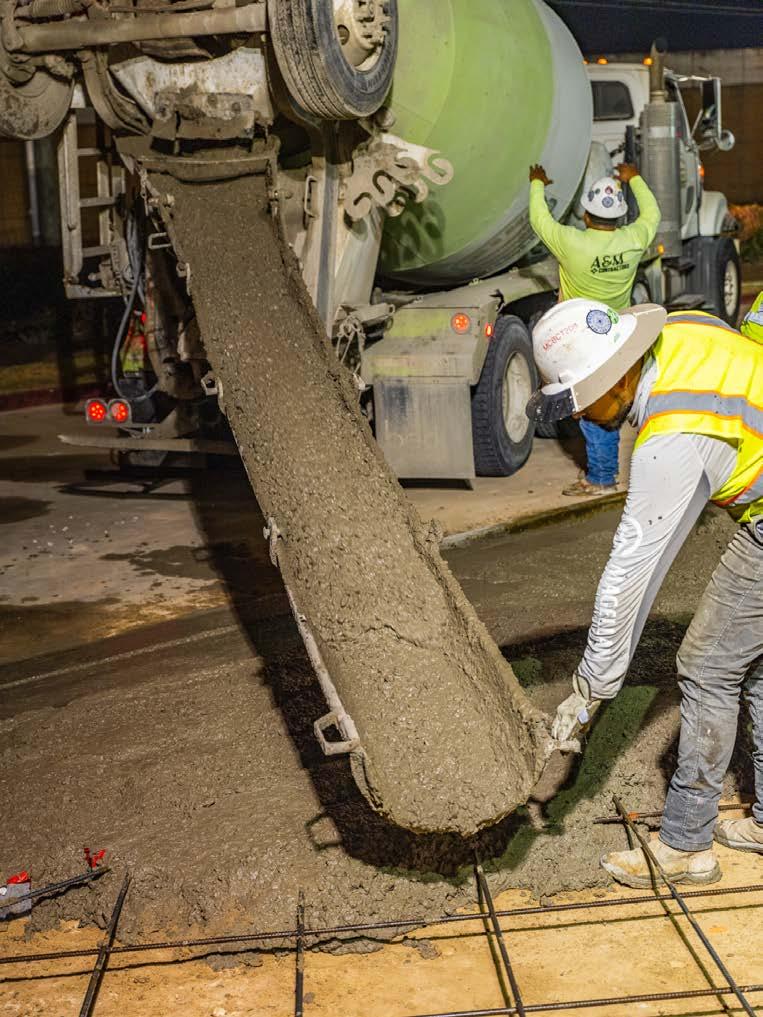
“The waste stream SCMs that we’ve used for the last 40 years, such as those from coal- red power plants, are being phased out. Steel making is also changing, so furnace slag access is reducing every year.
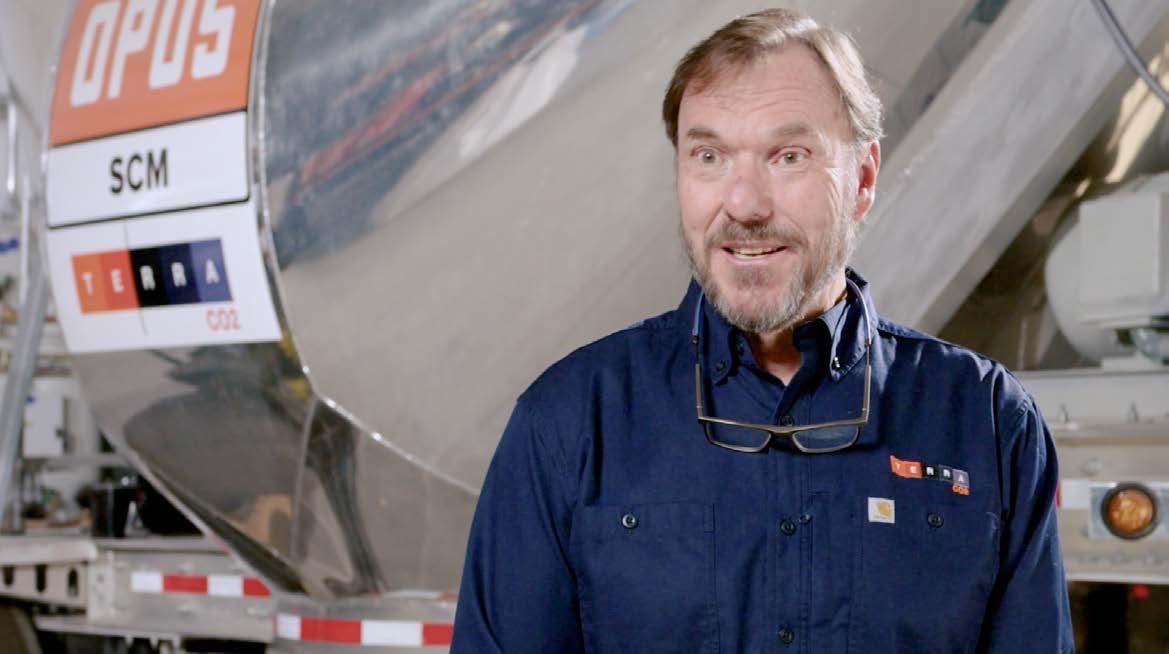
“A lot of people don’t realise that we’re not only trying to reduce concrete’s carbon footprint. If we don’t replace the waste stream SCMs, you have to use 100 per cent Portland cement, which takes us back 50 years. There is a sense of urgency, not just in companies like ours, but in the industry in general.”
Yearsley said two parts need to be in place for Terra CO2’s OPUS Zero product to achieve the company’s key goal of launching a costcompetitive, net-zero full replacement for Portland cement.
“The concrete trials are validating the materials science behind the product, but we also need green energy, including green electricity and hydrogen, at an industrial scale. It is not there yet. For us, it will be a simple conversion to switch our plants from being powered by natural gas to green hydrogen,” Yearsley said.
“We are also working on an electric reactor, which will enable us to operate an electric-powered production plant. We want to have it ready so that whenever green electricity is available, say in ve years, we will be ready to use it.”
Yearsley said the company was engaging in ongoing trials of OPUS Zero to ensure it is a competitive alternative in multiple applications.
“Being in industry spec is not the hard part. The hard part is getting your cement, as the binder in concrete, to perform in general use, everyday environments. Portland cement has been around for over a century,” he said.
“It has been an unbelievably successful product. Concrete always gets hard and stays hard with Portland cement. You can pour it in cold weather, pump it up to the tenth oor of a building, and it cures at the right speed, so concrete nishers can use their trowels
concrete. It has all these qualities, which have led to it becoming the dominant binder. So, when you are trying to replace Portland cement, that is what you are up against.
“Our product (OPUS Zero) can reach the speci cation right now, but can you put it in one of those concrete trucks you see on the highway, and if the job site is an hour and a half away, will it stay uid? Can you pump it to the tenth oor? How is it under the concrete nisher’s trowel? Can you batch it in a regular concrete ready mix plant? In a couple of months, we are going to start putting OPUS Zero in a concrete pump and a concrete truck and see how far we can transport it, pouring it on very cold days and very hot days, like you get in Houston, Texas, when it gets up to 100 degrees Fahrenheit (38°C) and 98 per cent humidity. I’m fairly con dent it will work in many applications, but I can’t say for certain that it will work in every application.
“What I can say is that we are doing all the hard work to mimic all those day-to-day-use applications. In two years, we will know a lot more about OPUS Zero’s performance.”
Yearsley said that from 2027, Terra CO2’s major cement producing customers will be licensed to use the company’s standard 240,000 tonnes per year plants to produce OPUS SCM and, in due course, OPUS ZERO, with Terra CO2 getting a royalty from those product sales. This additional SCM production will take place alongside the production of customers’ existing Portland cement-based products.
“The rst (Dallas-Fort Worth) plant has already been sold to NSG Logistics, a Texas transport logistics customer that moves a lot of bulk materials. The plant will be housed under its subsidiary, Asher Materials. They are providing the property to house our Dallas-Fort Worth plant,” he said,
“Big building materials industry companies, some of whom are Terra CO2 investors, will license one or more of our plants to work alongside either some of their existing cement plants or in one of their aggregate mines, so our plant can use their raw aggregate material.
“Eagle Materials, one of our big industry investors, has market options on three big US markets. Cemex also invested in our last funding round and has site options for our rst entry into Europe. We have ongoing discussions with most of the major cement companies associated with one market or another.
“We want to ensure that we do a good job taking care of our customers and avoid overextending ourselves. In due course, we plan to manufacture a larger plant than our standard 240,000-tonne plant for some of our larger customers.”
Yearsley said that Terra CO2 has a signi cant advantage in its offerings, as the company can utilise a vast range of silica rock materials from established aggregate mines to produce its SCM products.
“You cannot be successful in manufacturing a building material if you don’t have cheap and abundant raw materials. Limestone is another reason why Portland cement has been successful. You can nd limestone in almost every market; it’s not a valuable mineral, like gold, silver or some of the precious metals, and it’s easy to mine,” he said.
“As a carbonate rock, it’s about 10 per cent of the Earth’s crust. We are making our materials from silica rocks, which comprise 90 per cent of the Earth’s crust. I think Terra CO2 is the one of the only companies that can work with almost any type of silica rock, including granite, basalt, clays, sand, gravel, and shales from your backyard. That makes sourcing material wherever we want to put a plant cost-competitive and scalable.” AB
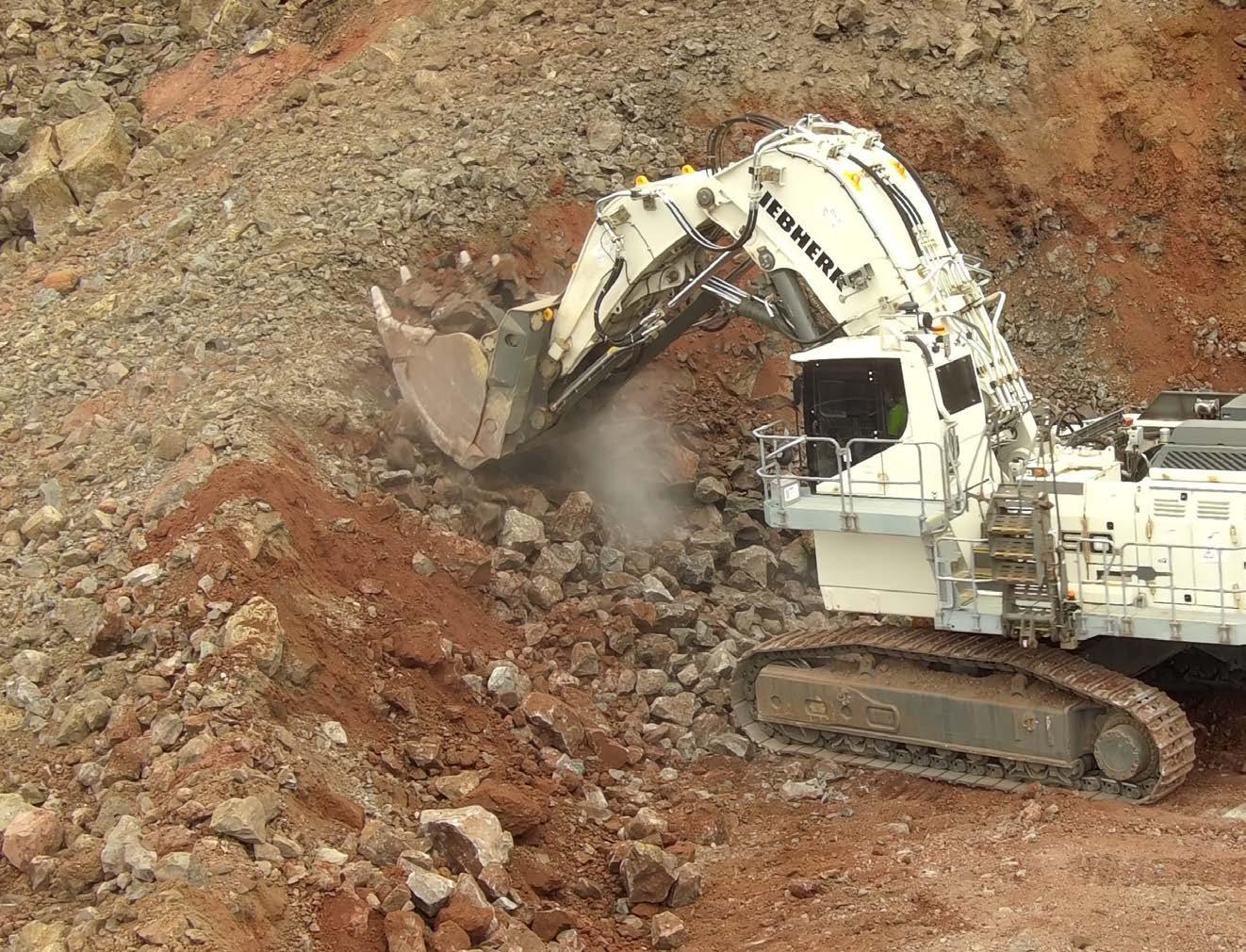

Liebherr USA’s commitment to customer service has impressed Hawaii’s largest concrete producer in its recent projects.
As Hawaii’s largest concrete producer, Hawaiian Cement relies on the Liebherr R 9150 as its primary excavation equipment at Halawa Valley Quarry.
The Liebherr R 9150 excavator plays a vital role in supplying essential materials for residential, commercial, and public construction projects, supporting Hawaii’s infrastructure network with high-quality construction aggregate.
As population and development rise, the pressure on Hawaii’s infrastructure continues to intensify, with many systems exceeding their intended lifespan.
Amidst these challenges in Hawaii, local companies are actively contributing to the island’s economy by generating resources, fostering employment opportunities, and supplying locally sourced materials, including the largest concrete producer in the state, Hawaiian Cement.
The producer is a vertically integrated construction materials company that plays a crucial role in Hawaii’s residential, commercial, and public construction projects.
Due to Hawaiian Cement’s extensive reach, the company owns the Halawa Valley Quarry situated on the island of O‘ahu.
Originally opened in 1939, the quarry is capable of producing more than one million tonnes of aggregates and manufactured sand annually, which is then supplied to businesses throughout Hawaii, as well as to Hawaiian Cement’s three concrete plants.
To meet the high demand at the quarry, Hawaiian Cement utilises its Liebherr R 9150 to provide a powerful digging solution. The R 9150 excavator provides Hawaiian Cement with an ef cient machine that has reduced downtime and improved cycle times, allowing it to ll the passing trucks more quickly.
For Hawaiian Cement, one of the most critical factors in deciding to work with Liebherr was the company’s reputation for providing exceptional customer service.
“Because we’re located on an island, responsiveness is critical to our success. There is no such thing as ‘next day’ for us in Hawaii,” Hawaiian Cement vice president of support services Sean Haggerty said.
Shipping equipment to Hawaii demands precise planning to overcome logistical and geographical hurdles. Due to Hawaii’s remote location in the Paci c Ocean, featuring narrow roads and rugged terrain, Liebherr employed precise coordination among sales, purchasing, logistics, and customer service to ensure
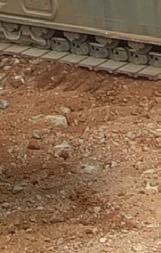
smooth and safe operations throughout shipping, delivery, and commissioning.
Factors such as permitting and environmental safeguards are also crucial in preserving the island during its development.
From the outset, the Liebherr USA team impressed Hawaiian Cement with its technical knowledge and professionalism.
“Working with the Liebherr team from the conceptual phase through to design, build, and commission was nothing short of exceptional,” Haggerty said.
Once delivery was complete, the shovel was built on site, commissioned, and placed into operation immediately to harvest blast rock to load into haul trucks.
“From the rst day we started the project through completion, I have been impressed at the build team’s technical knowledge, professionalism, and attitude,” said Hawaiian Cement maintenance manager Aaron Oga said.
As the sole cement provider in Hawaii, onsite productivity and eet cohesion are crucial for the excavator’s day-to-day operations. As the primary digging equipment at Halawa Valley Quarry, the R 9150 seamlessly synchronised with the quarry’s haul trucks to ensure a perfect pass match, avoiding unnecessary delays.
With the R 9150, the customers’ haul trucks can now be lled in three passes, rather than the four that were previously needed.
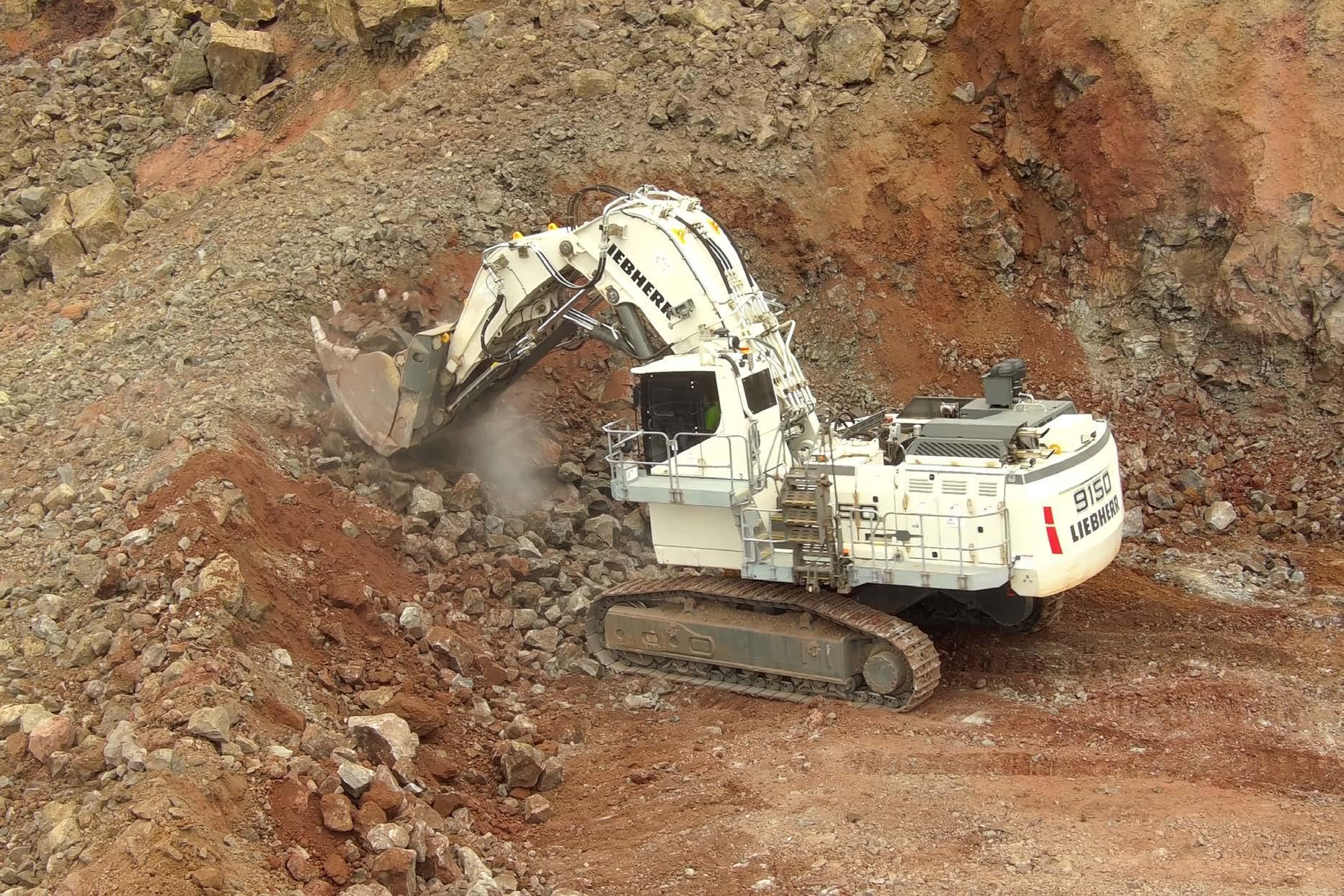
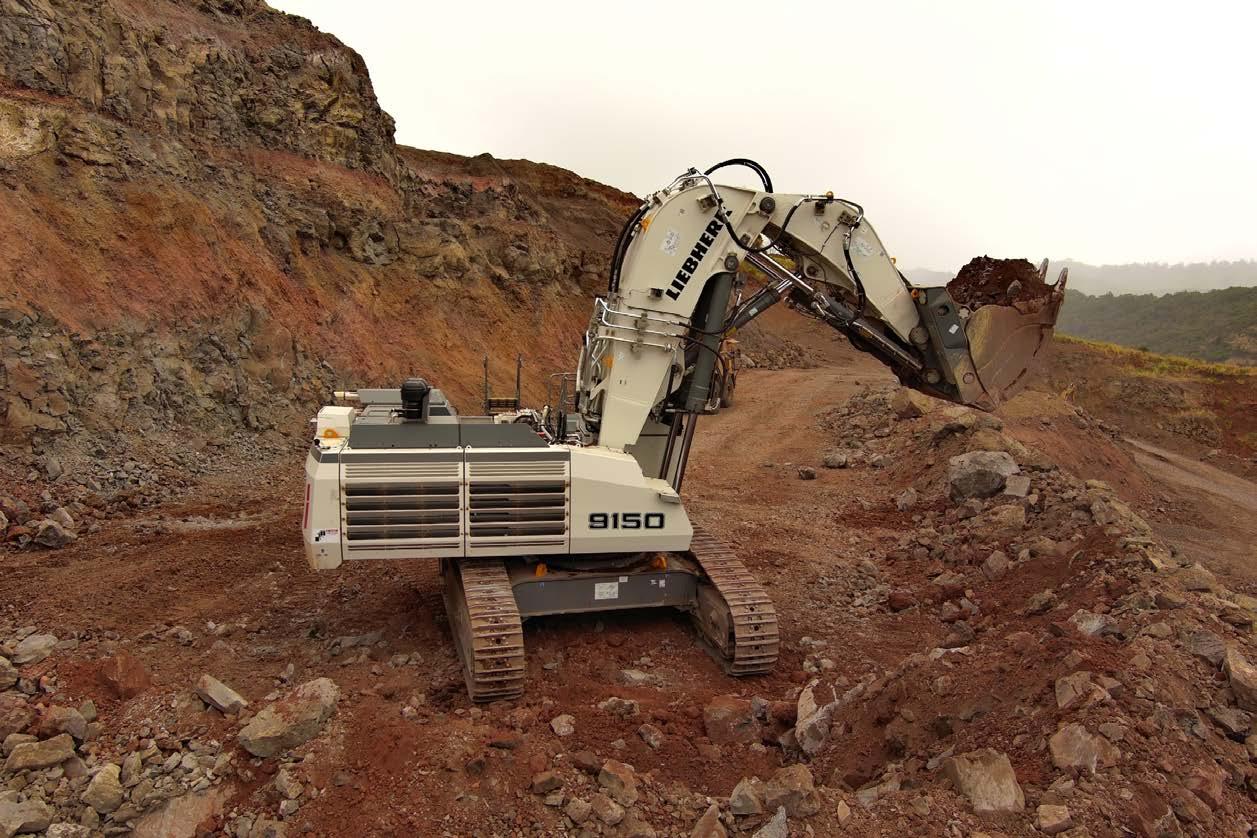
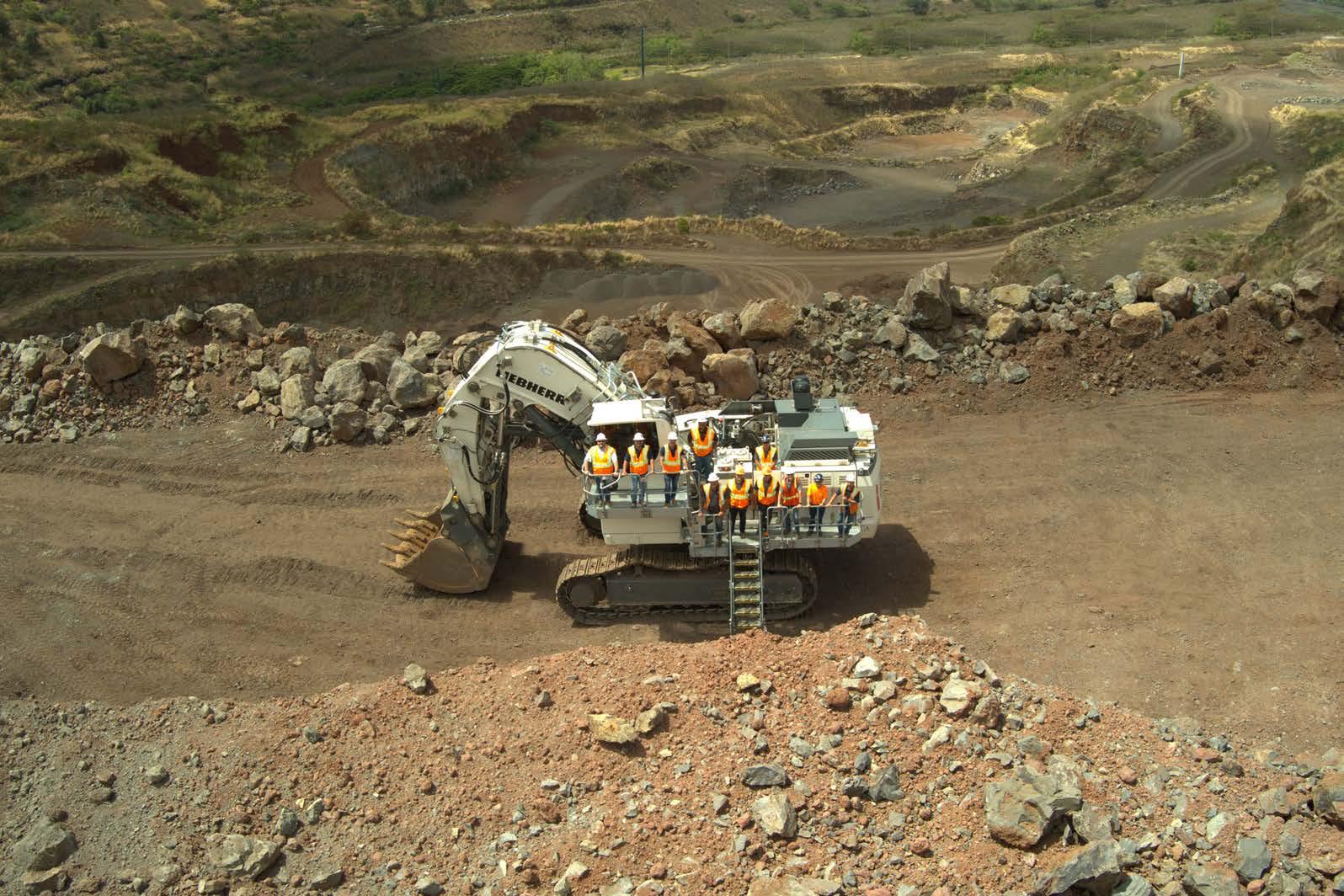
The US quarrying and aggregates sector has a workforce dilemma.
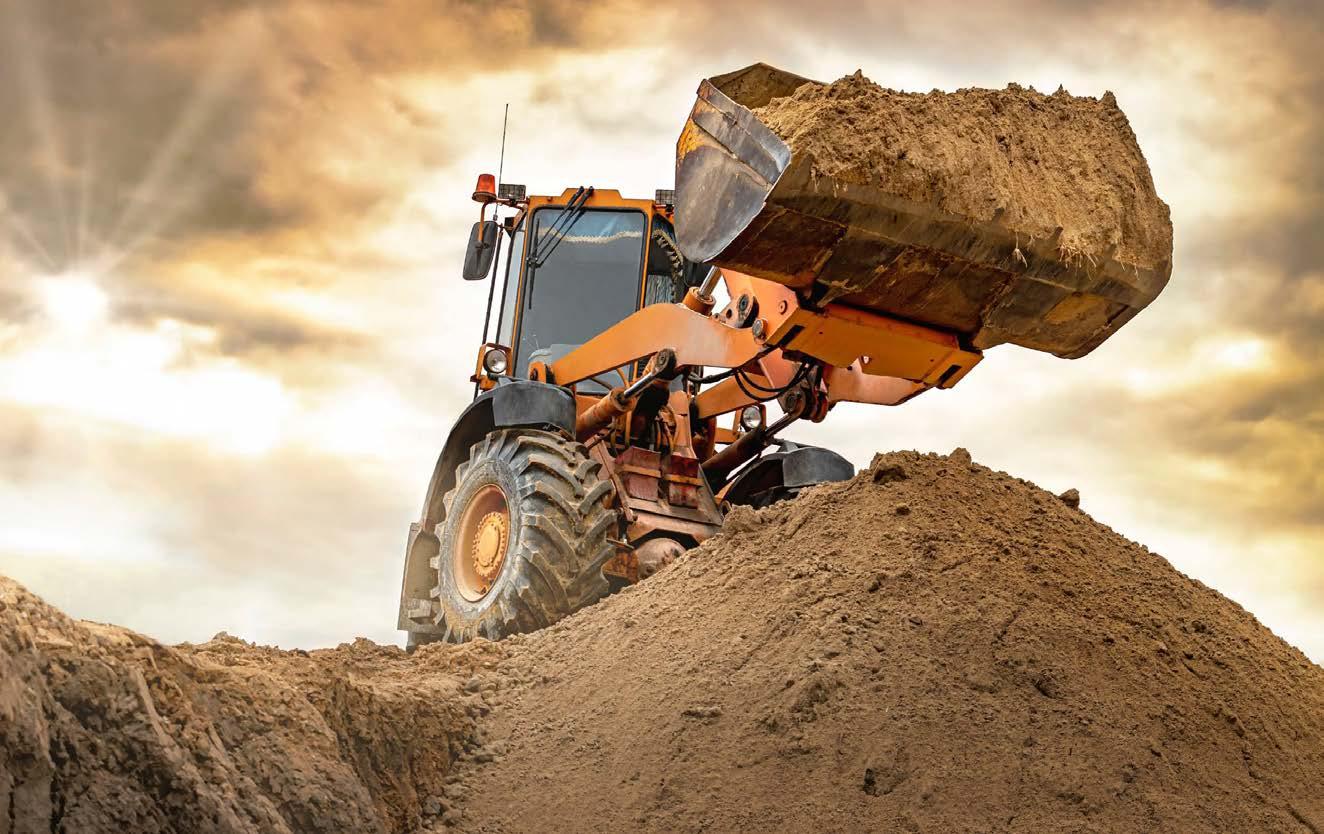

Innovation is alive and well in the US quarrying and aggregates sector, as suppliers and manufacturers plan for the sector's future.
When it comes to the quarrying and aggregates sector, many suppliers, manufacturers and quarry operators can nd themselves asking a similar question.
Where are the next generation of quarrying and aggregates workers coming from?
Rod Bull has found himself faced with that exact question as he looks to lead the next generation of Komatsu workers. Speaking as part of the ongoing ‘Building America’s Promise’ series by POLITICO Focus, which is sponsored by AEM and CONEXPO/ CON-AGG, Bull spoke about the scope of the issue in the US.
“Some of the biggest challenges that Komatsu faces are maintaining a healthy pipeline of talent and keeping the skill levels up in a workforce that has really moved on in terms of technology and interests,” he said.
“What we need from policymakers is support for workforce development, helping us create those partnerships through education, through learning and development programs.
“As we look at advanced machines and robotics, we need people that want to learn and grow with the technology. When we look to the future, it’s that mixture of people that are going to come in, create those new ideas and give us a different lens for how we approach supporting the industry and ultimately advancing construction across the US.”
The Komatsu executive is not alone in his thoughts. Recent data from global consultancy KPMG and US advocacy body Home Builders Institute has underlined the issue these heavy industrial sectors are facing.
In its construction labour market report from spring 2024, the Home Builders Institute’s data showed that the share of younger workers in the construction sector (those aged 25 and under at the time of the report) grew marginally from 9 per cent in 2015 to 10.8 per cent in 2022. Generation Z (those born between the mid-1990s and early 2010s) were more likely than millennials to join the construction industries due to a host of reasons, including job security, cost of college education and competitive wages.
However, generation Z accounted for the lowest share of construction workers at 16.8 per cent, compared with the majority made up of millennials, generation X and baby boomers. With baby boomers accounting for a large part of the construction workforce, there are some concerns a large-scale exodus could occur in the coming years.
Companies, including Komatsu North America, have tried to be proactive in connecting with these younger generations through initiatives and partnerships.
“Komatsu is looking to invest in the next generation workforce by creating apprentice programs, partnerships with trade associations, trade schools, and local high schools,” Bull said, as part of the ‘Building America’s Promise’ series by POLITICO Focus.
“We’re a country that has a history of innovation. We have a history of building and advancing technologies and industries.
“And for us, we need a diverse workforce that comes in and helps us take on new ideas.”
Perception and reality
Many within the US sector are taking government of cials, community groups and other stakeholders inside the quarry in an effort to showcase in an inclusive manner what the industry provides to everyone’s daily lives.
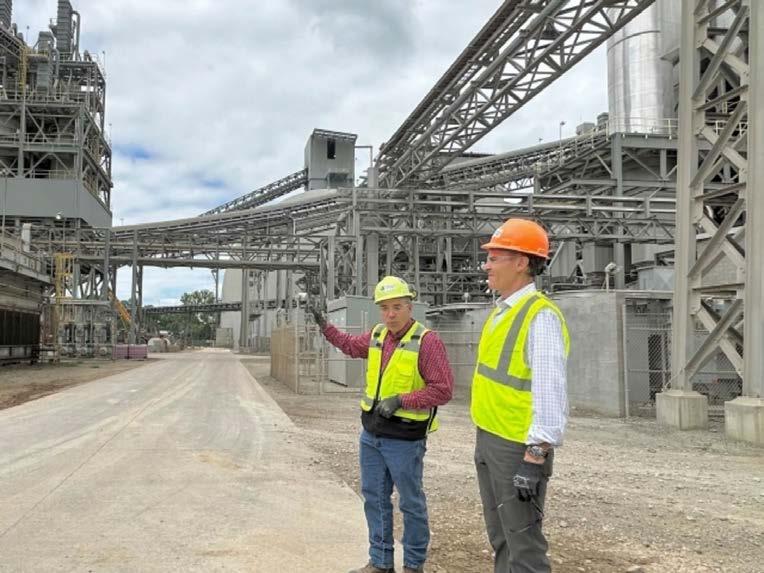
As US Congressman Jefferson Shreve toured Heidelberg Materials North America’s cement plant in Mitchell, Indiana, earlier this year, he was unequivocal about its importance to the region.
Shreve spent the day speaking to Heidelberg Materials North America’s team members as they went about the daily plant operations and produced the construction materials that are used throughout the Indiana region. The display left Shreve suitably impressed.
“Facilities like Heidelberg Materials’ Mitchell cement plant are at the heart of Indiana’s manufacturing strength,” he said.
“It’s inspiring to see the dedication and innovation of the team here, and the role they play in building a stronger, more sustainable future for our state and nation.”
The Mitchell cement plant’s manufactured products are used throughout Indiana’s infrastructure projects to support the local economy. It has been a rapid use for the US site. Heidelberg Materials North America launched the cement plant in 2023, and it instantly became one of the largest cement production facilities in the North American market.
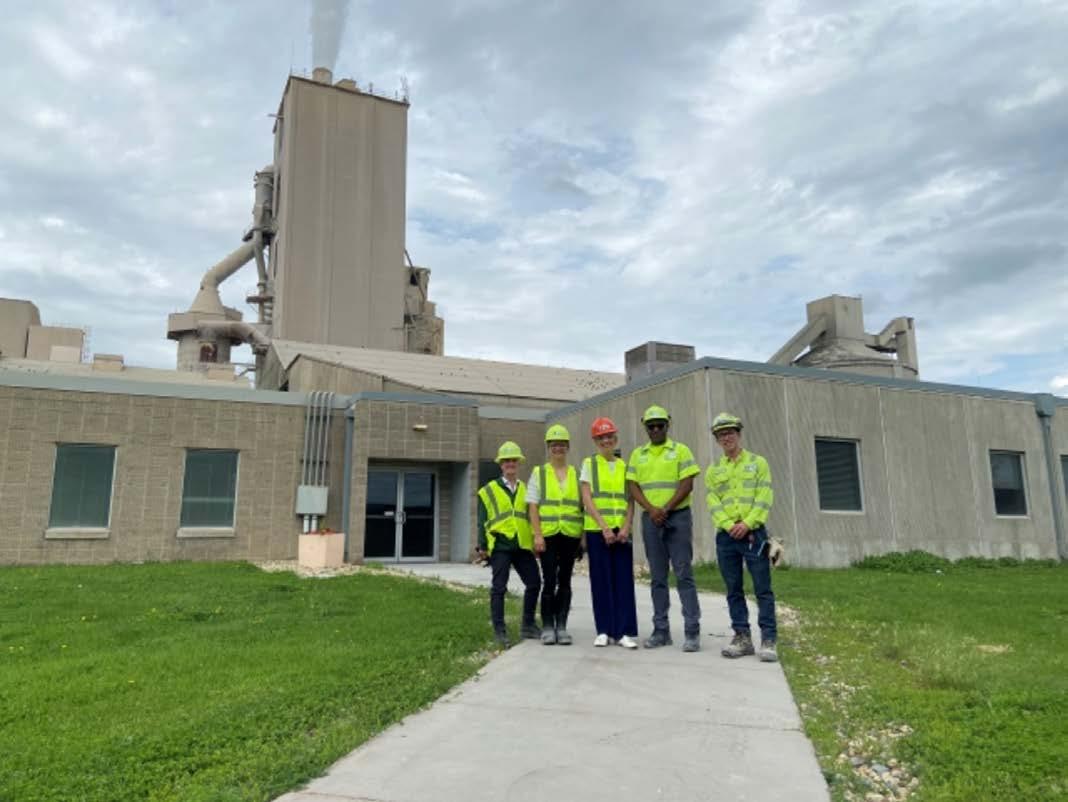
Ashley Hinson toured some of Heidelberg Materials’ facilities.
the US Congresswoman Ashley Hinson and her team to its Mason City cement plant in Iowa.
As part of Hinson’s tour, the company showcased its alternative fuel system for Refuse-Derived Fuel (RDF) as well as its daily operations and hard-working teams.
Despite the onset of the coronavirus pandemic, the site became operational on time and on budget following an investment of more than US$600 million from Heidelberg Materials over a several-year construction period.
The facility has the capacity to produce 2.4 million tonnes of cement a year while maintaining a focus on reducing carbon emissions as it operates mainly on natural gas.
The facility features a 66-meter-wide, 50-meter-high storage dome which can hold up to 154,000 tonnes of clinker. It also has an automated lab and a smart motor control centre alongside an automated rotary-type packing machine. Throughout the design, it was important for the company to ensure the Mitchell site was future-focused to deliver on high production and capacity tasks.
“Our Mitchell project instils pride in our rich history and provides an exciting look into the future of cement production at the same time,” Heidelberg Materials chairman of the managing board Dr Dominik von Achten said at the time.
“The plant will substantially contribute to Heidelberg Materials’ offering of low-carbon cement and concrete – it is the springboard to become the rst fully decarbonised cement plant in the USA. It represents our commitment to further strengthening our North American footprint and increasing the sustainability of our products.”
The company welcomed the opportunity to showcase to Shreve and his staff the impact of its operations.
“We appreciate Congressman Shreve taking the time to visit our Mitchell plant and thank him for his continued advocacy for Indiana’s manufacturing sector,” he said.
“Visits from our elected of cials emphasise the critical connection between industry and government in driving innovation, job creation, and ultimately building a more sustainable future for all of us.”
Before Shreve’s visit to the Mitchell site, Heidelberg Materials North America welcomed
“It was inspiring to see Heidelberg Materials’ innovative, global business operate in Mason City and better understand the impact it has on not only Iowa’s economic prosperity, but the broader Midwest region,” Hinson said.
“I enjoyed taking the opportunity to visit with the team and learn more about the day-to-day operations and talented workforce. Iowa is on the front lines of producing vital materials, resources, and critical components for the construction industry. I am so impressed with the continued investment in critical infrastructure at the Mason City plant and the hardworking team at Heidelberg Materials.”
It is part of an ongoing effort by key aggregates sector advocates to showcase the importance of their work and to provide a greater understanding of key operations.
There is a broader bene t to the sector than just the materials that support every nation’s key infrastructure. The sector contributes signi cantly to a positive economic impact.
According to the 2025 Aggregates Industry Economic Scorecard from the Phoenix Center, every job in the aggregates sector supports an additional 5.95 jobs in other industries. In another context, every dollar of earnings in the aggregates sector creates another $4.95 of earnings in other sector and every dollar of sales in the industry creates another $3.29 dollars of sales in other sectors.
Speaking as part of the ‘Building America’s Promise’ series by POLITICO Focus, sponsored by AEM and CONEXPO/CON-AGG, Association of Equipment Manufacturers president and chief executive of cer Megan Tanel said the sector needed to highlight its positive impact within the US.
“I think one thing that happens with the construction industry is that (because) it has been around a long time, it is taken for granted and under recognised in the value that it brings to our economy and our nation,” she said.
The AEM would know better than most about these workforce challenges.
It represents about 2.3 million men and women, with around a million of those workers dedicated to the US construction sector. As part of this, earlier in the year, the AEM, alongside
the National Stone, Sand & Gravel Association (NSSGA) and others, hosted an exhibition at the National Mall in Washington, DC, to better understand the sector.
The event was attended by policymakers, media, stakeholders and visitors as well as leading construction equipment manufacturers, technology innovators, and workforce development organisations. Members of Congress were given guided tours through the booths where they could talk about key issues with industry leaders.
Tanel said key issues for the sector that were highlighted at the event included workforce development and sustainability.
“It was the perfect opportunity for our members of Congress, regulators and legislators to meet with our members and understand the true impact of policy or regulations on their business,” Tanel said, when interviewed as part of the ‘Building America’s Promise’ series by POLITICO Focus.
“One of the most important things we do by bringing the industry together is making sure that we promote bipartisan support with pro-manufacturing policies.
“What AEM needs from policymakers to ensure the long-term health of this industry is conversation. The opportunity to be at the table and work with them on what the future holds and where we can get to if we work together.”
Moving forward, industry stakeholders, including advocacy groups like AEM, NSSGA, producers like Heidelberg Materials and manufacturers like Komatsu, are going to have to work together to develop the workforce of the future.
“The speed of technology and how fast everything is changing is really opening the door to a lot of opportunity. Our job is to recognise opportunities to upskill the workforce and make sure that they can do the jobs that are available through the new technology,” Tanel said.
“Sometimes you take for granted the things that are right in front of you. There’s really nothing more important than us having safe infrastructure for ourselves and our families. We need safe roads and bridges, and that’s what we’re here to do.” AB
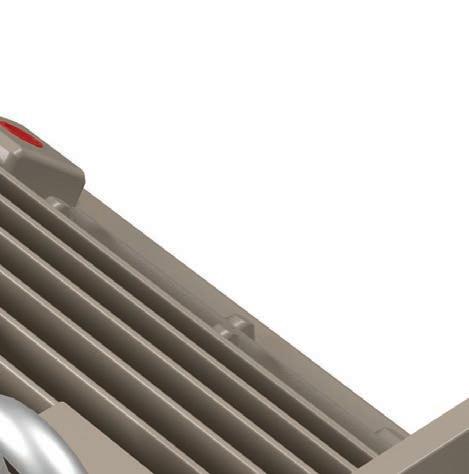
ABB is challenging conventions in the motor manufacturing market as it continues to break new ground in the US quarrying and aggregates market.
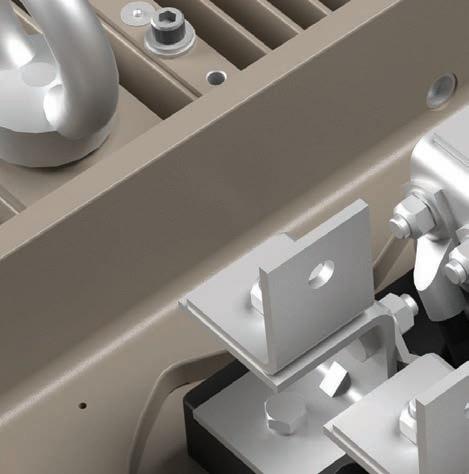
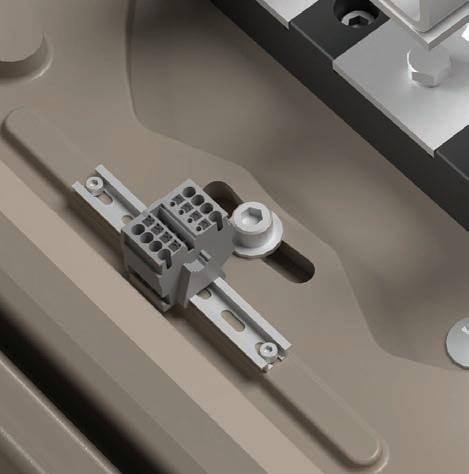
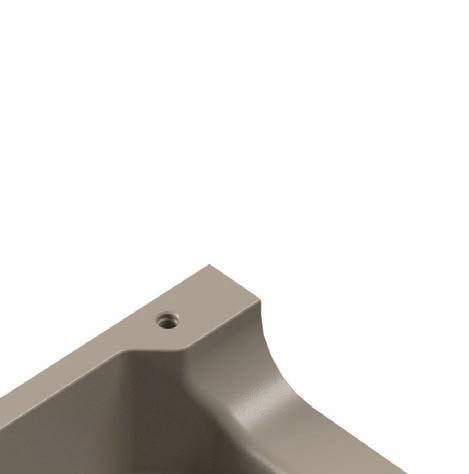
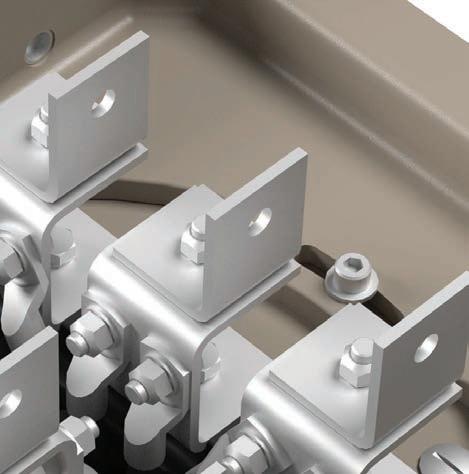
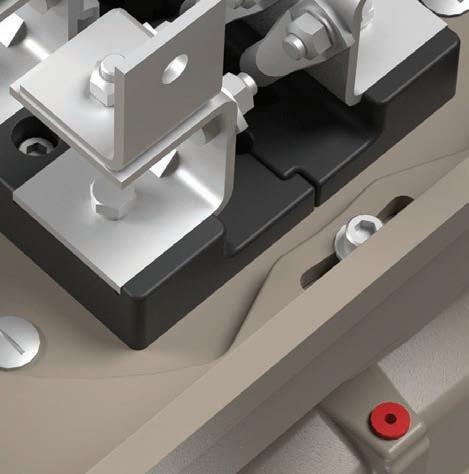
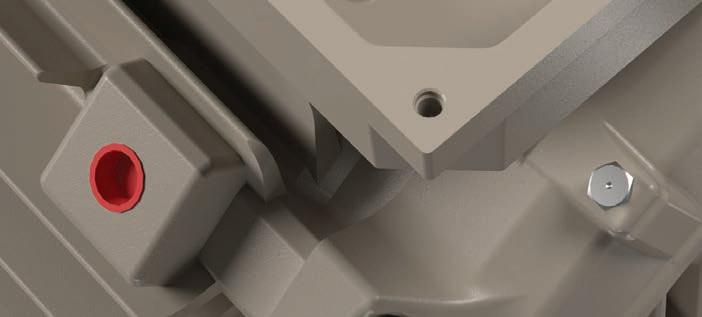


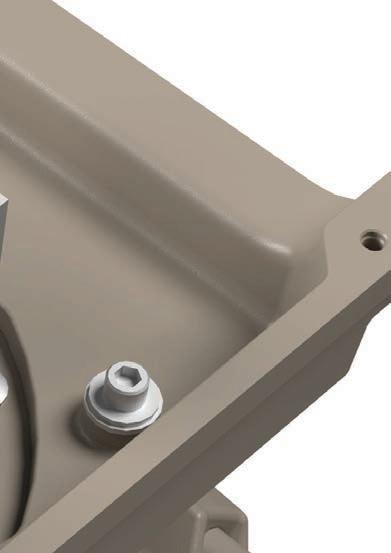
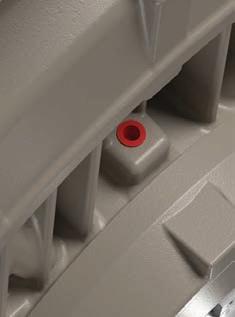
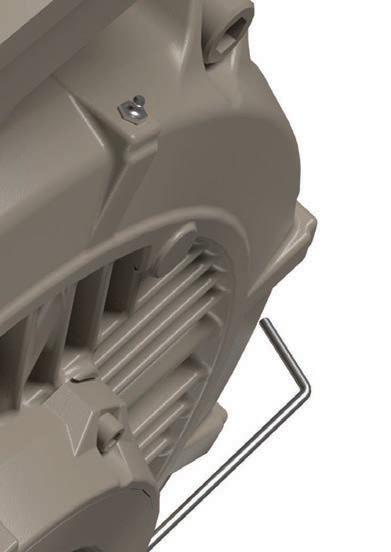

When it comes to aggregates, Robert Boyce understands the sector better than most.
Boyce is based in Salt Lake City, Utah, surrounded by rock pits and mining operations, which have, in different ways, shapes, and forms, played into his extensive career in motors spanning beyond three decades.
In his role as the US division manager of ABB IEC LV Motors, Boyce has noticed one stand-out trend in the heavy industrial sectors, including quarrying.
“What we’ve seen in aggregates and mining businesses is the equipment has got bigger and bigger,” he told Aggregates Business
As equipment has become bigger, so too has the ow-on effects for manufacturers in the sector. The National Electrical Manufacturers Association (NEMA) had to continually update its standard for electric motor frame sizes. The standard extensively covers a range of motor sizes, from fractional horsepower models to those used in industrial applications such as quarrying and aggregates.
As a long-established motor specialist, ABB has manufactured electric motors in Finland, which generally meet International Electrotechnical Commission (IEC) standards. It identi ed an opportunity to ll a gap for quarrying and aggregates customers in the US motor market.

“We looked at it and thought we could design something for the US that would t the NEMA dimensions, but we can also take from the best of the IEC,” Boyce said.
“There are a lot of cool IEC features that NEMA doesn’t have. We blended it together and put a lot of feature sets into this product line as well.
“The rst time we did it, our colleagues thought we were crazy. But we started stocking it, and it has started selling. You have to build for your audience, and that’s what we’re doing.
“This allowed us to effectively build a motor for a speci c application and target one industry. By taking all the IEC stuff that we had, we’ve disrupted the market by bringing in some of these features.”
Boyce said the ECR580 series of motors from ABB was originally conceived and planned for with US quarrying and aggregates customers in mind. For example, the motor has been equipped with a torque curve to handle the torque pulses that occur in crushers used in quarrying and aggregate applications.
“Right now, in the US, operators need something that is reliable and something that works,” he said.
“We designed it for severe-duty markets, which, when I say that in Europe, nobody knows what I am talking about. Here in the US, we say severe duty [as opposed to heavy duty] and built this for the US audience and packaged it for the US market.”
The ECR580 range sits within ABB’s crusher duty solutions which build on the proven performance of the Baldor-Reliance severe duty motors. ABB’s crusher duty motors are designed speci cally to work in crushing and aggregates operations including in belt-driven rock crushers and other applications which need motors that can handle high torque rates.
With the ECR580 motors, customers get a motor capable of high horsepower and torque in a low-voltage, NEMA-dimensioned build. It is IP66 rated as standard for protection against dust and water and further enhanced by ABB’s extensive engineering to reduce vibrations and shockloads.
The ABB team of experts designed the ECR580 to have a rugged design which could withstand the harsh environments of crushing applications and therefore, enable maximum up-time.
It also incorporates connection features, including ABB/Smart Sensor compatibility as well as a terminal block for easy connections and an integrated vibration probe to easily monitor vibration levels.
Throughout Boyce’s many years in the motor industry, he has observed a great deal of prevailing wisdom in the market surrounding certain products. One predominant myth is that motors built to IEC standards are “small, throwaway motors”.







































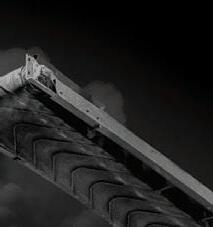









































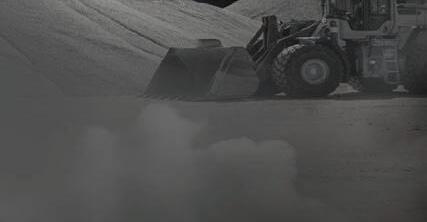



However, this pre-conception does not account for the difference in the design process between the two major quarrying and aggregates markets. In Europe, it is conventional to design motors to suit speci c applications and sectors, whereas in the US market, design has tended to follow a more ‘stock-standard’ approach.
“There is a perception that IEC is not as good as NEMA, but we have been trying to break that,” Boyce said.
“Our motors were designed in Finland for the paper industry back in the day, so we know we’ve got good motors.
“But it has been a struggle trying to break that mentality of what IEC is versus NEMA because that’s old-school thinking.”
In Boyce’s view, the US market could bene t a lot from European motor technology in many industrial applications.
Europe has required an IE4 standard for motors between 75 and 200kW (100250HP) since July of 2023, whereas in the US, IE3 remains the current standard with IE4 requirements for 100-250HP motors coming in June of 2027, ABB has remained committed to building its motors to the EU’s EcoDesign standard, which means its products exceed the current market’s minimum standard in the US.
In another example, it was common in the US market to see 300 horsepower and above being converted to 4160 volt, or medium voltage due to the limitations of cable size. When drives were added to motors, bringing them up to around 800 horsepower, a medium-voltage drive compared to a low-voltage drive is a substantial expense. This meant that the drive costs signi cantly shifted the market.
The issue was that NEMA stops its standards at 449 frame, whereas Europe builds to IEC 500, which is capable of ratings around two megawatts in low voltage.
This created another opportunity for ABB to ll a gap in the market for US customers.
“We were in the right spot when the switch went from medium voltage to low voltage, we were ready to go. Europe has always been driving the market on the low-voltage side because it was always more common to have low-voltage, high power,” Boyce said.
“In the US, it wasn’t that way. If you had asked me ten years ago about a 1,000-horsepower, 460-volt motor, I would have said, ‘you’re nuts,’ because nobody would want it. Nowadays, we’re stocking it because people want it, because of the drives.”
Part of the reason for this shift in customer demand is a shift in the sector’s thinking regarding engineering. Boyce is witnessing a new wave of young engineering talent entering the industry, which, in his words, is ready to “question everything that is traditional” and disrupt the market like ABB is.
“The younger generation, they are starting to think about sustainability and they’re thinking about energy ef ciency,” he said.
“We’re thinking about that too at ABB

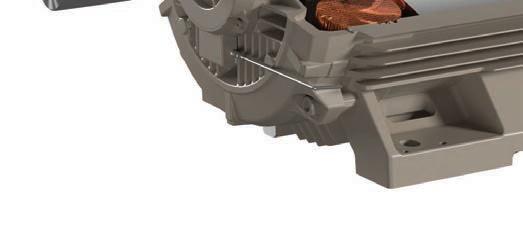
ABB undertakes rigorous testing and development to ensure the quality of its products.
and trying to tap into that with our motor solutions versus using that old-school thinking. We’re going to keep going in that direction because that is what we do.”
The American Dream
ABB has invested signi cant time and resources in raising awareness of its operations in the North American market, with a particular focus on the US.
To achieve this, however, ABB has taken a unique approach tailored to the region’s customers. The replacement of motors in crushing equipment equates to around 80 per cent of ABB’s business in the quarrying and aggregates sector of the US market. While plenty of buzzwords can tumble out of the C-Suite in heavy industrial sectors, at the end of the day, operators are the ones using the equipment. A key focus in quarrying and aggregates is ensuring return on investment and operating at the lowest cost per tonne.
Internal data from ABB shows that the up-front cost of a motor only equates to two per cent of its total costs over its lifecycle while potential rewinding can account for another one per cent. This means that 97 per cent of the total lifetime cost of a motor is derived from operational costs of the motor. This underlines why operators are eager for a durable and reliable motor solution with a high ef ciency to minimise energy consumption.
Boyce used his industry knowledge to ensure ABB was meeting the requirements of an American operator.
“A lot of motor companies have come to America with a very European way of looking at it, and that looks foreign to the US audience. We’ve had to repackage our products to look more familiar to the American customer. We started initially looking at the replacement business. I come from the West, and we can see there that the pits don’t have inventory, so the key there is you have got to have the product in stock.
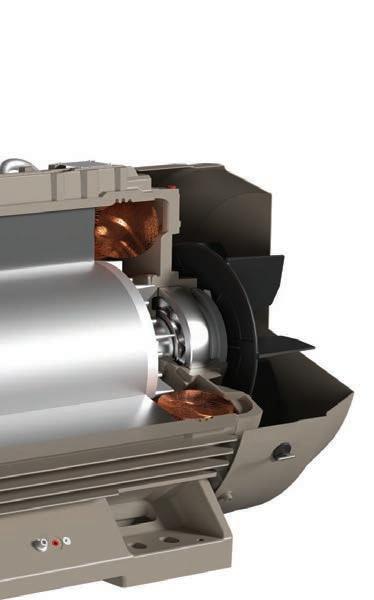

“Our strategy there was looking at our motors in stock and asking, ‘will it t?, will it turn?’ and reaching out to these end-users rst. We’re nding that these end-users, they want the feature sets, they want the stuff that makes the motor survive and last in these applications.
“And from there, we’ve been reaching out to the dealers and then the OEMs (original equipment manufacturers) and working that way. It is a completely different way of doing product management.”
The ECR580 series of motors are just one of ABB’s offerings which can be used in the quarrying and aggregates sectors. ABB is offering a wide range of motor solutions to the US market, ranging from fractional horsepower options up to 2000 horsepower solutions and above.
The crusher-duty range extends up to 600 horsepower, while its severe-duty range reaches 1000 horsepower and includes ball bearings for use in pumps, compressors, and fans.
The fundamental reason ABB’s motor solutions work in so many applications is due to their modular design, which enables them to t together like “Lego bricks”.
“It enables the customer to tell us what they want, and we can move it around and say ‘is this what you want?’, it also means we can see that if something is working for our customers, we can productise it,” Boyce said.
Boyce said he believes the ABB range of motor solutions will have a bright future in the US quarrying and aggregates market.
“We’re taking the best of European innovation and packaging it to be ready for a US audience, and we’re having a lot of fun doing it,” he said.
“My team and I are looking at it from a local angle. I like to disrupt the market. I’ve been in this market for so long that I like doing something different, and we’re forcing everyone to look at what we’re doing.” AB
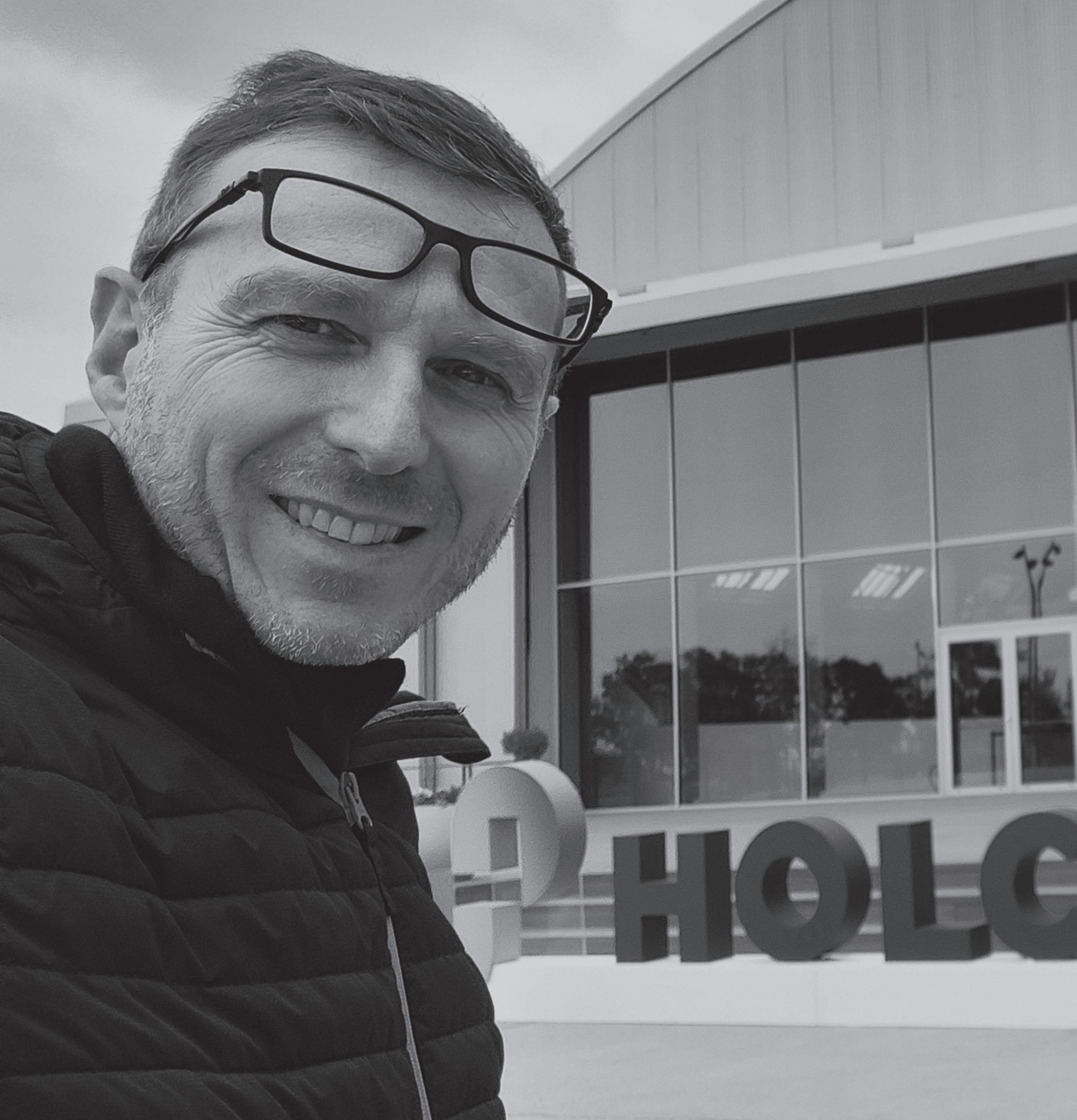






Holcim Italy’s Paolo Zambianchi talks to Aggregates Business about the critical importance of aggregate supply and why he is advocating the use of technology to optimise primary and secondary production.
Holcim Italy technical director of aggregates and ready-mix Paolo Zambianchi believes the current global geopolitical landscape has awakened politicians and policymakers to the critical importance of essential raw materials, including aggregates, and the need to secure their supply for the health of their nations.
“I have seen over the last 20 years a political regression regarding the critical importance of raw materials, at a national and European level,” Zambianchi said.
“After dramatic events, including the Russia–Ukraine war, perspectives are changing. The European community now understands the crucial role of raw materials as strategic resources. Without raw materials, there is nothing.”
An Italian national, Zambianchi has been in his current role since 2011 and is responsible for production, maintenance, safety, and investment at Holcim Italy’s four aggregate quarries and 22 ready-mix plants. The former produce a combined 1.3 million tonnes of aggregate and sand annually, while the latter generate up to 1.5 million cubic metres of ready-mix per year.
“Holcim concentrates its operations in northern Italy. I am also in charge of these sites’ environmental side and their relationships with the authorities,” he said.
Another key element of Milan-based Zambianchi’s work is securing operating permits and licenses for Holcim’s aggregate and ready-mix sites. This increasingly complex and challenging aspect of production has long been a focus of the European sector.
“Permitting and licensing for our business is crucial. Without approvals, we won't produce any more aggregate and ready-mix cement, and we won’t have the civilisations we have now,” Zambianchi said.
“Every region and every state in Europe has to be able to guarantee the quantities and supply timing of raw materials for more than 50 years, but we are getting permits and licenses for only two to ve years. It’s such a short time.”
Zambianchi said ensuring work site safety is his most signi cant constant challenge.
“Holcim wants to achieve a fundamental target of zero Injuries. It’s a tough target we face every day,” he said. “This is not just for Holcim employees; we work with many third parties.
“While Holcim is already a sustainable company, we want to reduce our CO2 footprint further and also do more to improve our circularity. We have tough targets to reach by 2030, so our transformation must be achieved in a short time.”
1. Example of a Ma-estro digitalised quarry plant optimisation solution. Ma-estro was among the key partners involved in the Holcim Italy Pioltello DigiEcoQuarry pilot.
2. Paolo Zambianchi believes big geopolitical changes have brought home to politicians and policymakers the critical importance of essential raw materials, including aggregates.
A keen advocate of the role of technology in modern aggregate production, Zambianchi led Holcim Italy’s involvement in the fouryear, EU-funded DigiEcoQuarry project, the brainchild of Asociación Nacional de Empresarios Fabricantes de Áridos (ANEFA), one of Spain’s oldest and most reputable associations for the national extractive industries and construction products.
DigiEcoQuarry saw ve pilot quarry sites (in Italy, Germany, France, Spain and Portugal) with different characteristics adopt Innovative Quarrying Systems (IQS), comprising sensors, processes, tools, and methods for data capture, processing and sharing, to provide integrated digitalised, automatic, and real-time process control for aggregate quarries.
Completed last year, the results of and conclusions from the DigiEcoQuarry project were shared by Zambianchi and other pilot leaders via in-person presentations to an independent international advisory board and other stakeholders at Aggregates Europe’s headquarters in Brussels in June.
Each pilot site reported signi cant improvements in health, safety and security, as well as in ef ciency, selectivity, and pro tability, while reducing environmental impact and increasing social acceptance.
With DigiEcoQuarry technology now rmly embedded in each pilot site, the project offers best practice examples for aggregates processing sites in Europe and the wider world.
“Holcim’s Pioltello San Bovio sand and gravel quarry, a 400,000-tonnes-a-year operation near Milan, was one of the pilot sites,” Zambianchi said. “It was exciting to be part of the DigiEcoQuarry project and to be working with so many great people. We focused on some key performance indicators related to the environmental and ef ciency aspects of production. Regarding the former, we explored ways to increase the amount of recycled water used in material production, thereby reducing the amount of freshwater required.
“We designed a system with around 80 to 90 machine sensors to add to the site’s
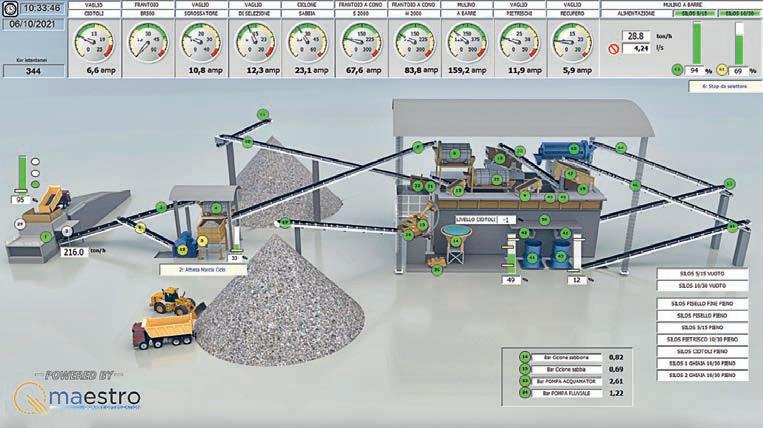
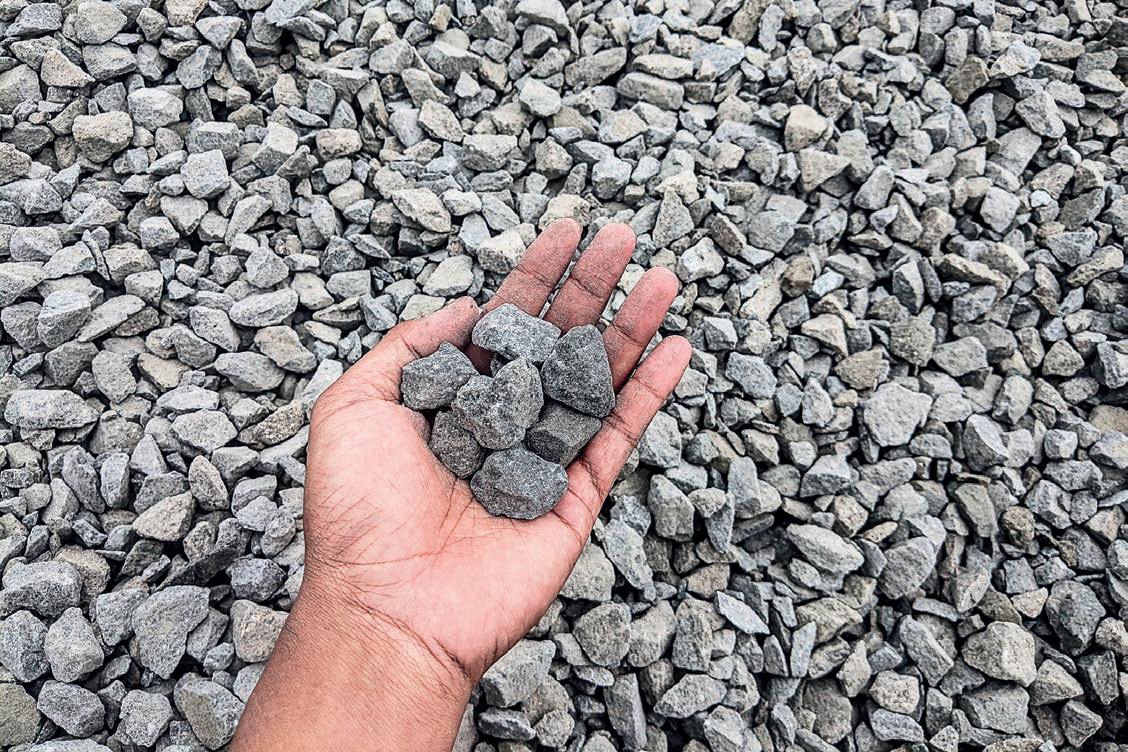
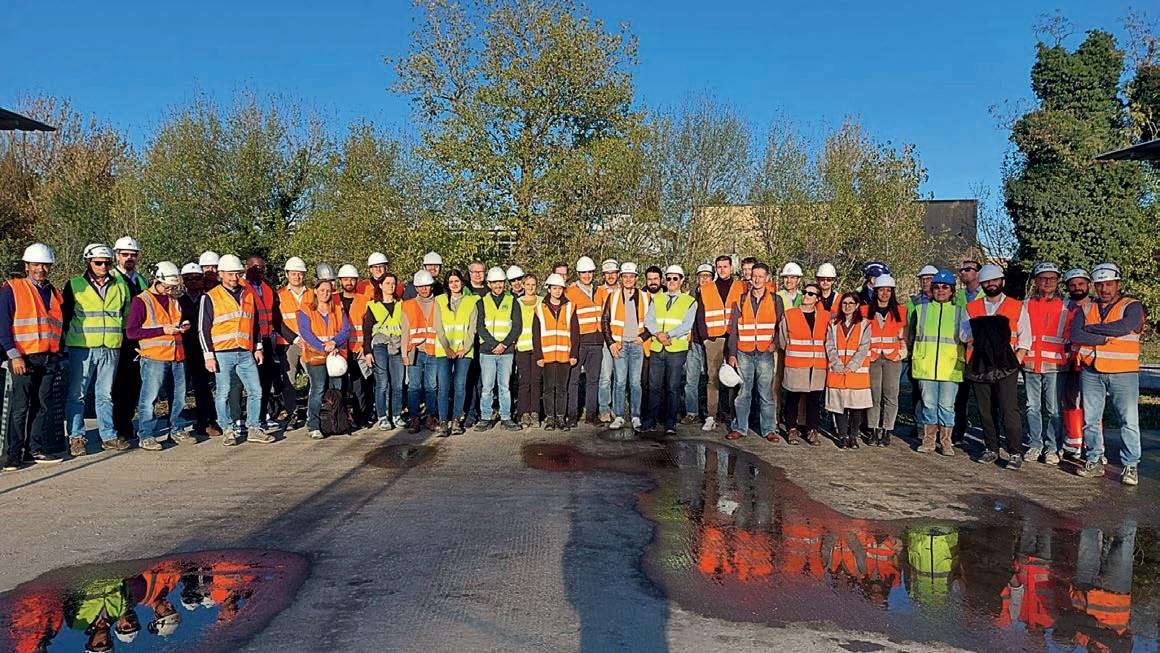
existing automation and help the quarry team focus on how they were processing materials through crushing, screening and washing. We also focused on safety, installing new sensors on some of the site’s heavy mobile machinery and utilising arti cial intelligence [AI] for stockpile measurement.
“We built a cloud platform where all the data was collected and analysed. It was a very interesting experience. Across the 25 or so partners involved, we had representatives from IT, software and arti cial intelligence companies.”
Firms working with Zambianchi and his Pioltello San Bovio project quarry team included Ma-estro, the Italian quarry
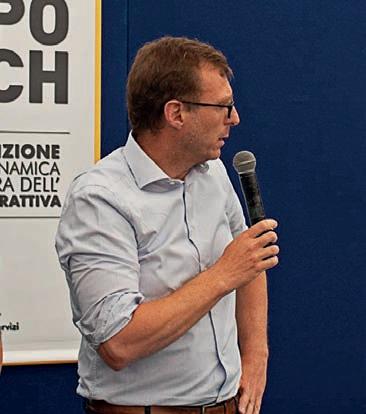
“I designed the CavoExpoTech brand and patented the name under ANEPLA. We’ve run it for 10 years and it’s the reference event for quarrying in Italy.”
Spanish end-to-end, data-centric AI and machine learning solutions business; and Mintek, South Africa’s national mineral research organisation and one of the world’s leading technology companies specialising in mineral processing, extractive metallurgy, and related elds.
“The overall systems we and the other pilot sites chose had to be cheap and easy to install and manage, as this was linked to quarrying rather than mining,” Zambianchi said. “Over the four years of the project, Pioltello achieved around 10 per cent more productivity and ef ciency, cut production costs, and reduced freshwater use by two per cent. With ANEFA, the DigiEcoQuarry project leader, we are studying some other technology that we can test at Pioltello and the other pilot sites.”
Zambianchi is also excited about the circular economy opportunities offered by Holcim Italy’s rst construction and demolition (CDM) waste recycling hub at Gorla Quarry in Varese, around 60km northwest of Milan.
“This is a very important new development in our decarbonisation journey,” he said. “The EU target for recycling CDM [construction and demolition] waste is 75 per cent by 2030, and in Italy, we are already at 85 per cent. It’s a big success story.”
Zambianchi told Aggregates Business about his insights into the current state of the Italian aggregates market.
“The situation is dif cult for many reasons, including high energy costs and the fallout from what is happening internationally. More positively, the European Union is investing in large-scale infrastructure projects, such as new high-speed train lines and highways, which are bene cial for companies like Holcim,” he said.
“As a country, Italy is also investing in infrastructure, particularly in the north of the country.
construction works, including our ECOPlanet green cement.
“The market is very interested in how our sustainable products relate to environmental product declarations [EPDs]. Enhancing
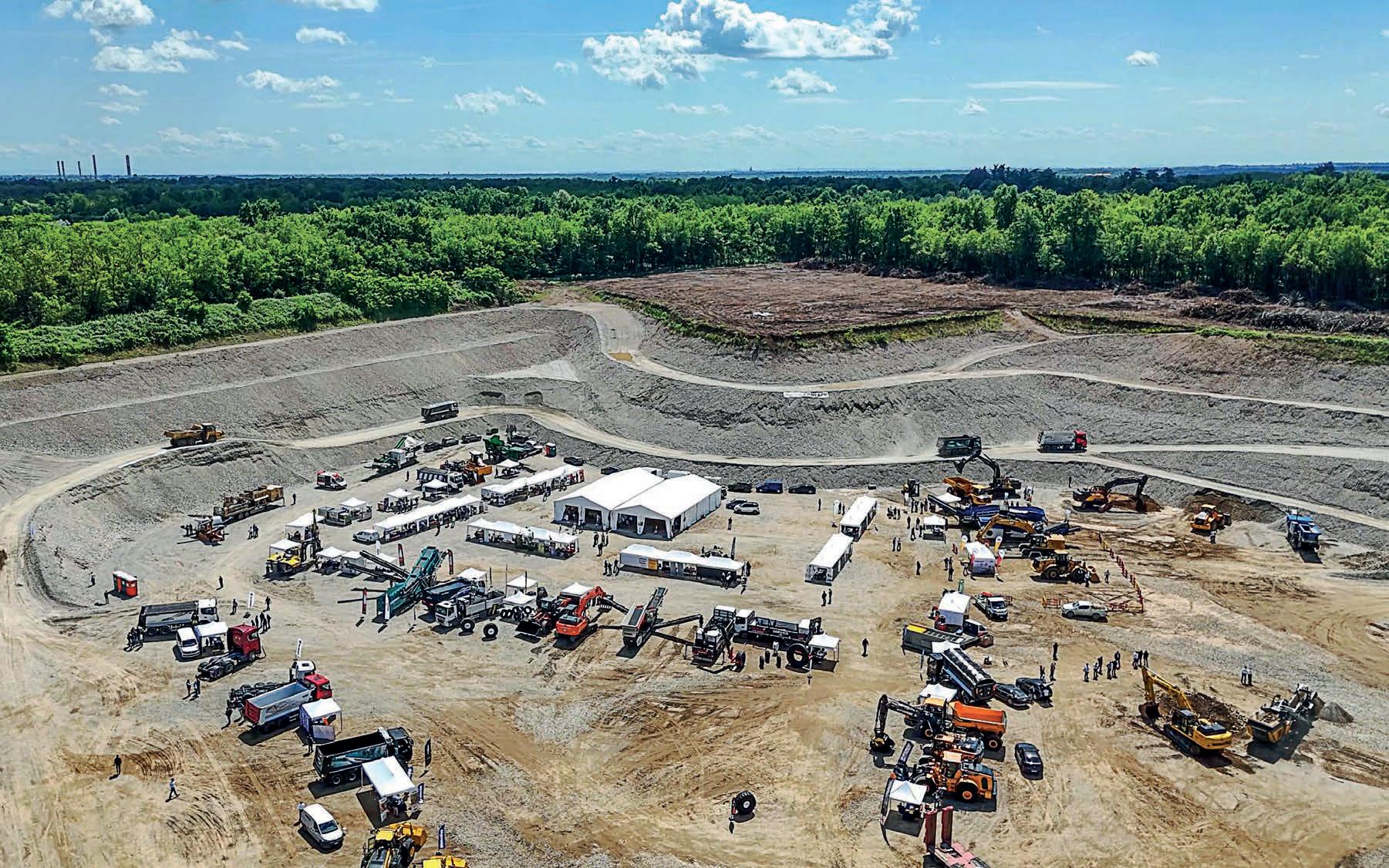
sustainability in building works is a key strategy for us. Holcim Italy is focused on supplying ECOPlanet and other sustainable products to bigger infrastructure projects, as the regulations are clear around the amount of recycled and low-carbon materials that need to be used by contractors.”
Zambianchi is the vice chairman of Aggregates Europe’s environment committee and continues to serve on the board of ANEPLA, having previously served as the association’s president from 2014–20. Under Zambianchi’s leadership, ANEPLA became a prominent association member of Aggregates Europe and launched CavaExpoTech, an annual meeting place for producers of mining goods and services and quarry entrepreneurs.
Each event, held at different ANEPLA member sites throughout Italy, is traditionally divided into classroom-based professional development on current industry trends, followed by static and dynamic demonstrations of quarrying machinery and linked technology. In addition to each live event, a series of CavoExpoTech webinars is staged throughout the year.
In his six years as president, Zambianchi also signi cantly increased ANEPLA’s membership, bringing in aggregate industry service companies, and strengthened the association’s working relationship
with Con ndustria, the main association representing manufacturing and service companies in Italy.
“I designed the CavoExpoTech brand and patented the name under ANEPLA. We’ve run it for 10 years and it’s the reference event for quarrying in Italy,” Zambianchi said.
“We do one or two CavaExpoTechs per year. If we host two events, based on member demand, one will be held in the north and the other in the south of Italy. We invite industry stakeholders and local politicians, and always have one quarry site day for families, with children participating in all kinds of fun activities.
“At a CavaExpoTech event last year, Caterpillar and CGT, its Italian dealer, attended with Cat Command [remote control machine solutions]. Some important politicians heard about this and were eager to try it, so they took turns operating the excavator remotely. It was very nice to see.”
A geology graduate who also holds a master’s degree in business administration with a focus on the oil, gas and raw materials industries, Zambianchi spent three years working in the Italian oil and gas sector before entering the aggregates industry with Holcim Italy in 2001.
“I think we need to do more with schools and universities as industry companies
and, in ANEPLA’s case, as associations, otherwise we will lose the next generation’s interest and quarrying and mining industry competencies,” Zambianchi said.
“This is why Holcim Italy has started an academy near our headquarters in Milan that teaches local schoolchildren industry knowledge and skills.”
After an extensive career, Zambianchi is clear that there is still plenty wants to achieve in the Italian and wider European aggregates industries.
“Like in a rugby match, it is impossible to win without the support of your team and playing for each other. My team at Holcim Italy aggregates and readymix is crucial,” he said.
“You come to Milan, and in the last 20 years it has undergone signi cant changes, with skyscrapers, subways and buildings made from green, sustainable building materials supplied by Holcim.
“It’s a big transformation, and it makes me very proud. I am also proud of being the rst Holcim Italy manager to receive authorisation for a CDM waste recycling hub [at Gorla Quarry]. I want this hub and Holcim Italy in general to be the reference point when it comes to recycled materials to enable sustainable construction, not just in Italy but the whole of Europe.” AB

SunEnviro is expanding its waste processing capabilities to produce premium aggregate products and sand at its site in Thetford, England, following a £3 million investment in a state-of-the-art McLanahan waste recycling plant. Aggregates Business visited the site for a close-up look and to hear about the long-term expectations for the set-up.
When Aggregates Business toured the SunEnviro open day, the company’s managing director Mat Stewart said his three business brands, SunSkips, SunDemolition and SunAggregates, generate no waste that is directly sent to land ll.
SunEnviro’s new up-to-70-tonnes-perhour (tph) waste recycling plant in Thetford, Norfolk, one of several SunEnviro operates in eastern England, will process up to 100,000 tonnes of waste annually into premium aggregate products and sand in compliance with (BSE 9321) British Standards.
While SunEnviro’s signi cant seven- gure investment in the comprehensive McLanahan set-up has already started to prove its worth since becoming fully operational in May, the rm’s notable increase in its waste processing is likely to also prove highly shrewd.
Introduced in 1996 to encourage more sustainable waste management practices, the Land ll Tax applies to taxable disposals at land ll sites and, more recently, unauthorised sites. In April 2025, HM Treasury, the UK Government’s economic and nance ministry, and HM Revenue & Customs, the UK’s tax, payments and customs authority, launched a consultation on Land ll Tax reform, proposing the removal of the lower rate of Land ll Tax (£4.03 per tonne for inert materials such as rocks and soil) by 2030. In its place, an escalator will be applied to the lower rate until it reaches the standard rate level (currently £126.15 per tonne), with the qualifying nes regime and quarries and dredging exemptions being removed from April 2027. The new Land ll Tax rules will be coupled with increased penalties for illegal disposals.


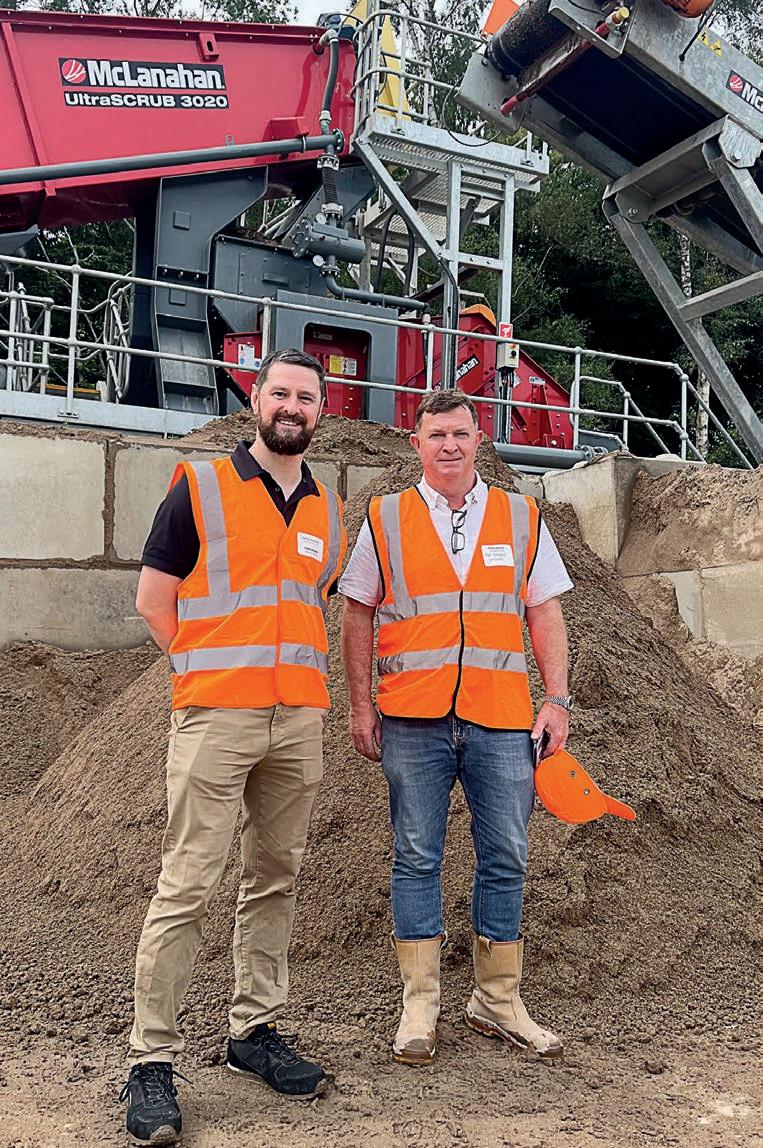
Stakeholders, including the Mineral Products Association (MPA) and British Aggregates Association (BAA), have expressed concerns about the economic impact of the Land ll Tax reform proposal. Consultation closed in July, with a wide range of industries, including quarrying, construction and recycling, awaiting the UK Government’s next steps.
Stewart, who has nearly 30 years of experience working in environmental services, with SunEnviro, which started as SunSkips in Stowmarket in May 2020, now covering sites in Thetford, Cambridge, Haverhill, Ipswich, Dereham and Hoddesdon, told Aggregates Business this could present an opportunity for his company.
“If all goes to plan, we thought we’d start seeing a return on our investment in three to four years, but if the Government do what they say they are going to do [on Land ll Tax
reform], it will be a lot quicker, potentially 12 months,” he said.
“We are saving £600,000 to £700,000 a year by not having to put 30,000 to 40,000 tonnes of waste and nes into land ll, and that’s at the lower [Land ll Tax] rate. If the standard tax rate applies, I don’t know how many businesses like ours will be able to put a skip out and be competitive.
“We are also fortunate in being able to control what we bring here in our own vehicles. We can keep material coming in, but our guys have got to sell the recycled aggregate and sand product that goes back out, so we adjust the daily volumes we are processing.”
SunEnviro’s bespoke waste recycling plant features a McLanahan UltraSCRUB, UltraSAND and HRT10 Thickener, which work together to ensure high throughput, minimal water usage, and full site circularity, culminating in the nal step of the process: a McLanahan Filter Press.
The McLanahan set-up at Thetford, which washes and recovers materials from construction and demolition sites, excavation waste and trommel nes, is part of SunEnviro’s nationwide effort to turn waste into valuable recycled aggregates under its SunAggregates brand.
Comprised entirely of McLanahan equipment and plants, the Thetford solution has been designed to minimise water intake and ensure the process retains as much material and water on site as possible.
The site’s tight two-acre footprint has necessitated a considerable planning process for McLanahan. The system forms an ‘L’ shape along two sides, maximising room for feed material and clean, sorted end products.
Stewart said a lot of research went into the decision to opt for a McLanahan waste recycling plant at SunEnviro Thetford.
“I looked at eight suppliers and then a friend of mine at Global Machinery Solutions introduced McLanahan to me,” he said.
“I whittled it down to three suppliers and then worked with McLanahan to optimise what we wanted here, looking at the site we had available. It was good to work with people who wanted to provide us with a solution: a, to t on the site; and b, to wash what we wanted to wash.
“McLanahan was the easiest to work with and had the breadth and depth of knowledge that others didn’t, or didn’t want to share. I also think they really wanted to work with us. The whole [recycling plant investment] deal took around 10 months.”
SunEnviro manages more than 120,000 tonnes of waste across the east of England, with an inventory of 4000 skip containers and a eet of 65 fuel-ef cient vehicles. The company only processes waste collected from its SunSkips and SunDemolition sites.
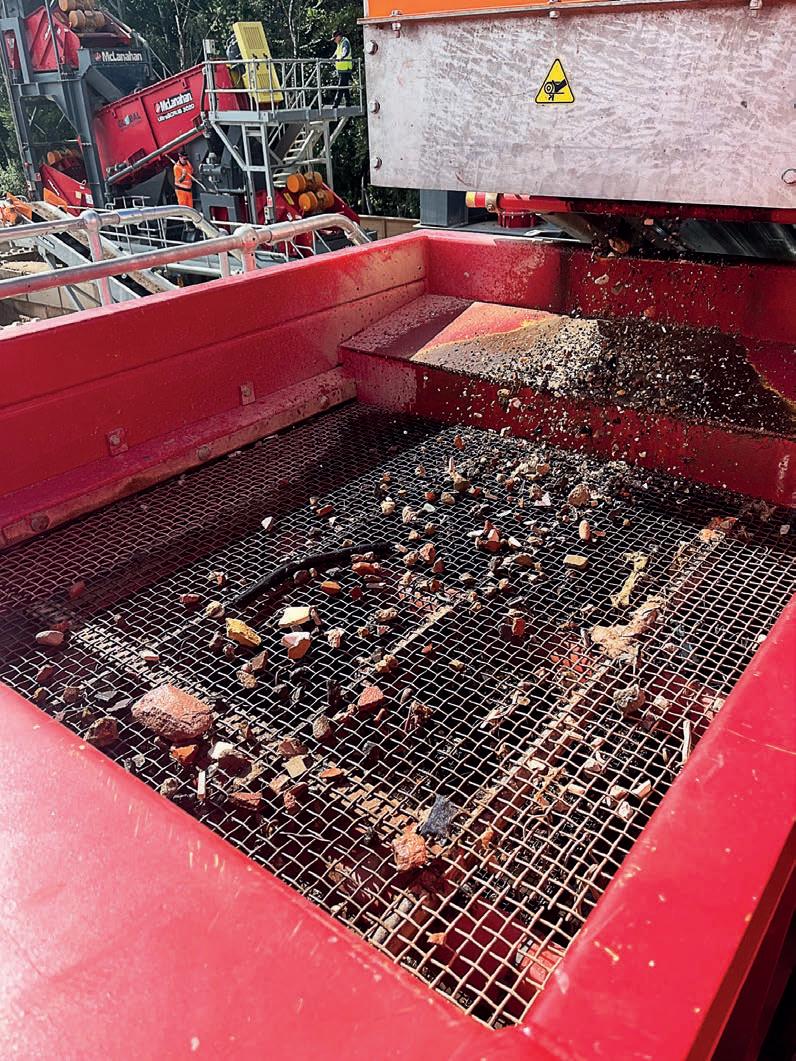
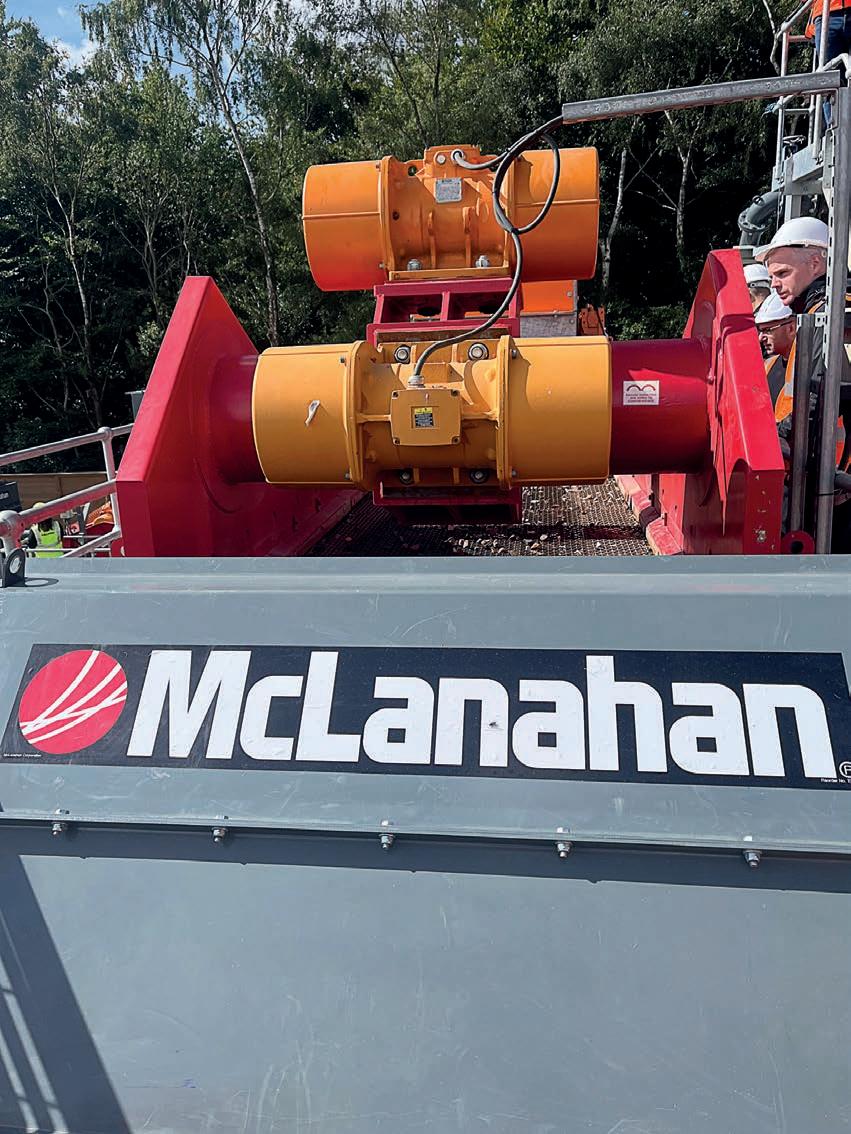
“The plant feed is half crushed rubble and half trommel nes, which is turned into 0–4mm sand, and 4–10, 10–20 and 20-plusmillimetre aggregate,” Stewart said.
“I like to say that what we do is spinning plates. All of our [SunSkips and SunDemolition] sites are full of nes and
With support from McLanahan, SunEnviro is turning waste into valuable recycled aggregates under its SunAggregates brand.
rubble, which is great feedstock for here. This Thetford site sits in the middle [of SunEnviro’s site network], and I can bring nes in from, say, Norwich and take washed sand or 0–10mm aggregate back to sell out of bags at that site.
“We sell to local construction companies, housing developers, highway contractors, and civils and utilities companies.”
SunEnviro and McLanahan partnered for an open day at SunEnviro’s Thetford site in September. The two companies welcomed around 80 industry professionals representing a variety of construction and civil engineering companies, as well as council highways authorities, to experience SunEnviro Thetford’s innovative McLanahan recycling system.
This open day offered those looking to improve or add a recycling process to their plant, as well as those who are struggling with the upcoming costs associated with the end of qualifying for trommel nes in the UK, signi cant insight into best practices for building a circular system.
“We are really excited about what’s happening in Europe. We made a substantial investment in the market over the past veplus years and have over 100 employees in the UK and [mainland] Europe,” McLanahan chief executive of cer Sean McLanahan said.
“We are continuing to expand, and part of that is in construction and demolition [C&D] waste recycling, which is extremely important to us.
“The two areas in which our company continues to grow around the world are
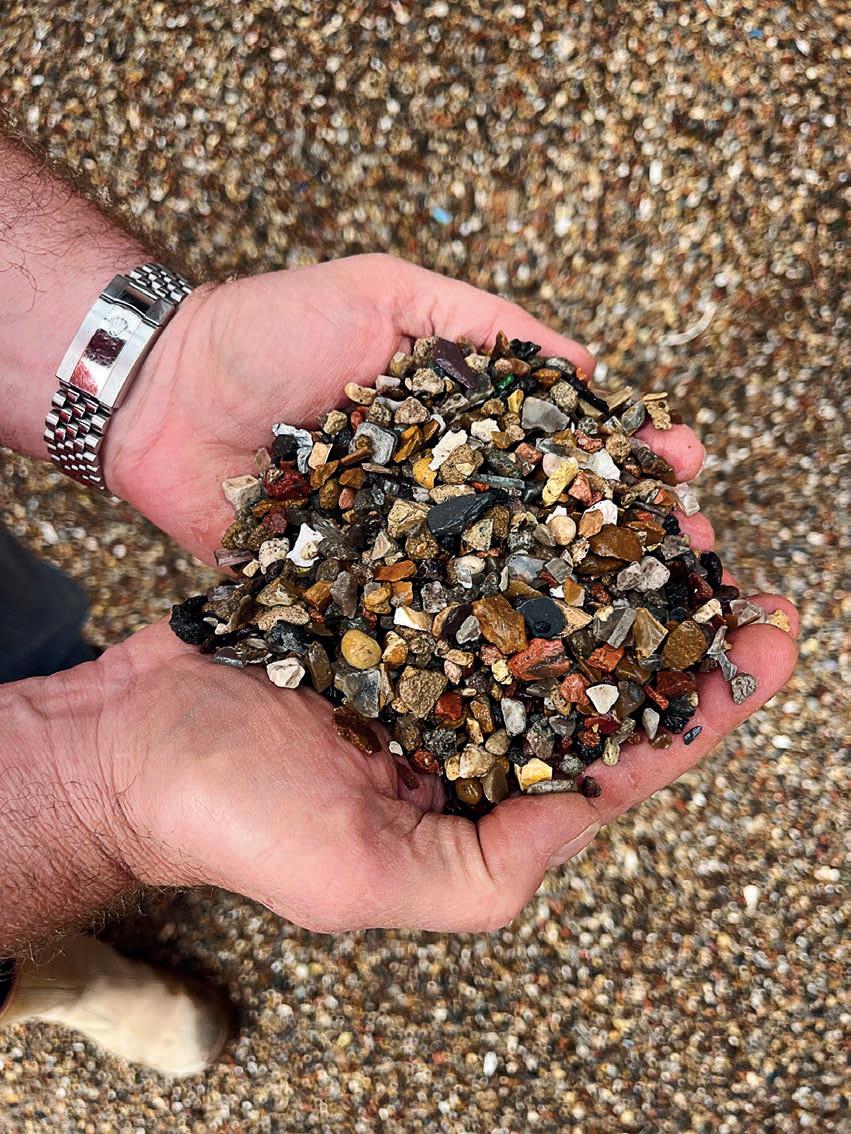
in C&D recycling and water management, utilising our thickeners and lter presses.”
Stewart said his company was proud to showcase its latest solutions with McLanahan.
“I think it’s great to work with McLanahan and help them get into a market that is desperate for professional businesses to sell them a product that works,” he said.
“I think [the open day] has been good for people to see how we t and operate this kind of plant on an industrial estate site. Everyone automatically thinks it would be based in a quarry.
“If you look at the Norfolk Local Plan, all inert recycling is being directed towards industrial sites rather than extending the life of quarries. We are very proud of what we have here. We want to replicate it at some of our existing sites and potentially at some new ones that we buy in the future.”
McLanahan business line director David Hunter said the process shows what could happen when suppliers and producers collaborate together,
“This installation has been a real collaboration, a lot of sitting down together, talking through the process and adjusting,” he said. “This is the rst time we’d put a plant like this in, and we were saying, ‘Guys, we will make this work’.
“Changes in legislation are increasing interest in what we can offer. There are a lot of operators who aren’t geared up yet for what might be coming. SunEnviro has got ahead of the game, and it’s great to be part of that.”
Stewart said he wants the Thetford McLanahan plant to feature an eddy current separator (ECS). This machine uses highspeed rotating magnets to induce eddy currents in non-ferrous metals, such as aluminium and copper, creating a repulsive magnetic eld that pushes them out of the waste stream. The process is used in recycling facilities to recover valuable metals from materials such as plastics and wood,
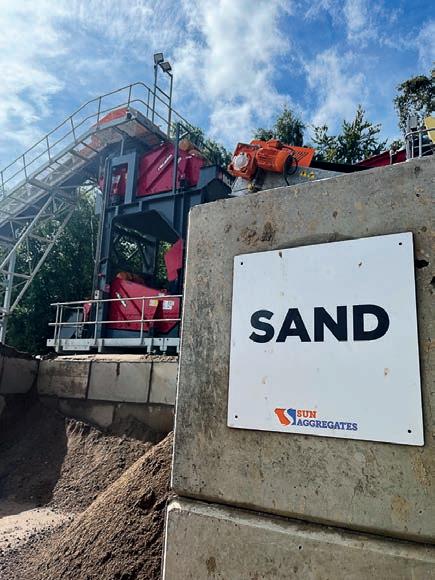
increasing recycling rates and reducing land ll waste.
“I don’t think many McLanahan customers had asked for this, but they found us a supplier we could work with and included it in their package. We didn’t want to have to nd our own supplier and add bits into the plant,” Stewart said.
“We were also clear that we wanted to meet the WRAP quality protocol (a document that sets ‘end-of-waste’ criteria for the production of a speci c recovered product, such as aggregates, compost or glass cullet). This plant does.
“We like the fact that McLanahan is a 190-year-old family business, with a similar philosophy to SunEnviro. Just looking at the quality of the equipment and the fact that they were keen to handle any problem were also big selling points for us.”
“We don’t look at changes in legislation as a pain in the neck; we look at them as opportunities.” AB
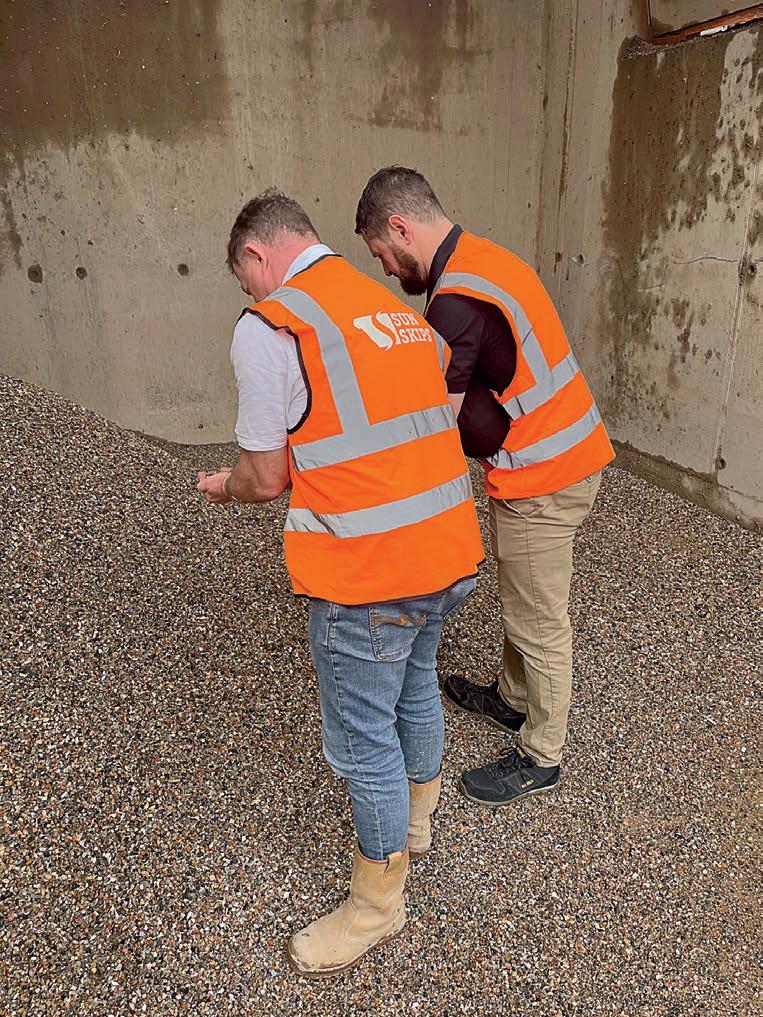
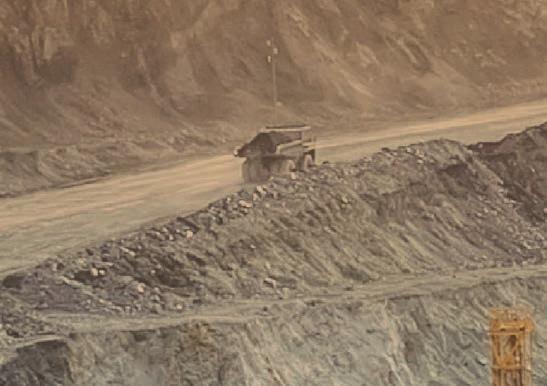
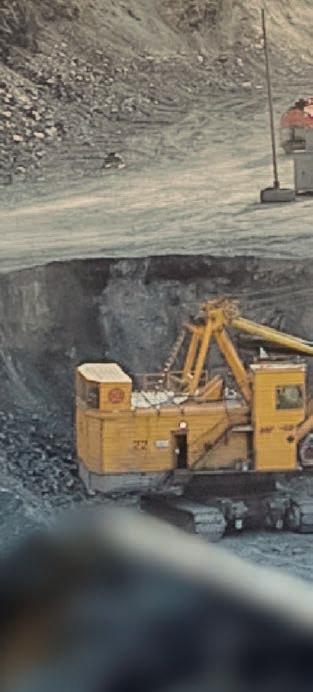












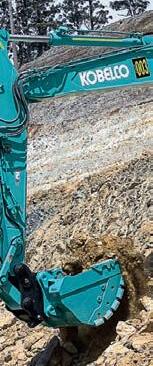







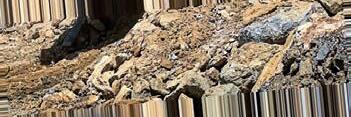


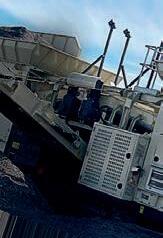
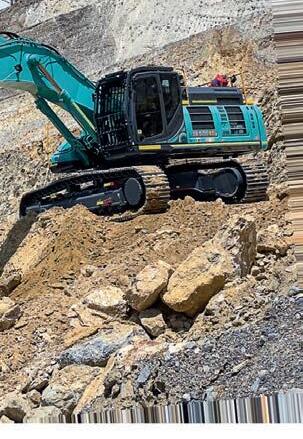

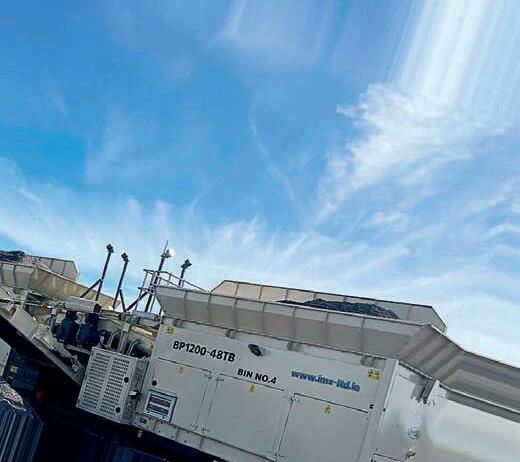







As the only national quarrying publication and the official journal of the Institute of Quarrying Australia, you’ll always be up to date with the latest developments in industry news, technology and events with Quarry Magazine.
It’s quick and easy to subscribe to our monthly print issues, our annual Suppliers Directory and our weekly eNewsletter. Don’t miss out!













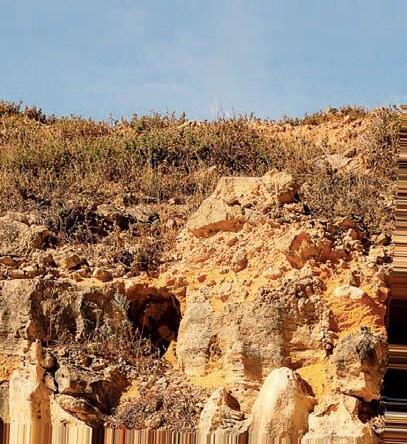






















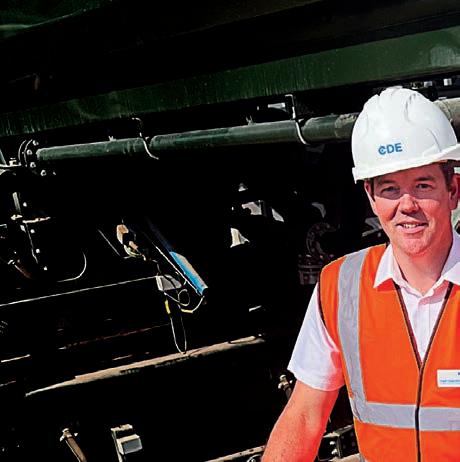
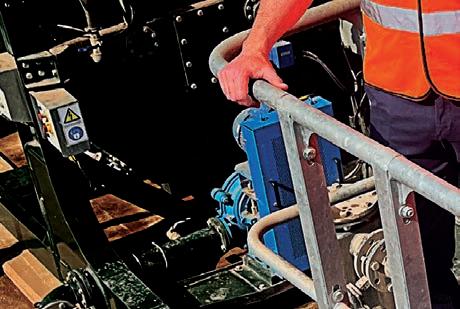

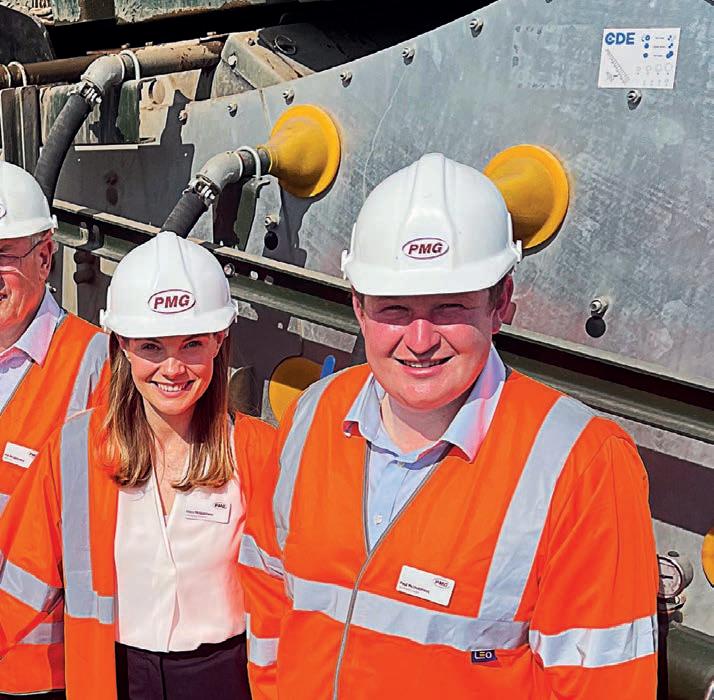




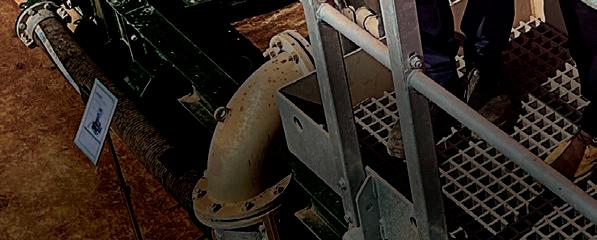

PMG Services has reinforced its commitment to sustainability by making its second purchase of a CDE waste recycling plant. Aggregates Business took a close-up look during a CDE openhouse event at the company’s new headquarters.
Clare McGuinness is excited about the future of PMG Services (PMG). And the managing director of the family-owned-and-operated business has every right to be given PMG’s impressive new headquarters in Severn Beach, 10 miles north-west of Bristol.
At its heart of the HQ is a new 25-tonnesper-hour (tph) CDE waste recycling plant solution, part of PMG’s ‘zero-to-land ll’ movement, which is setting the rm up for a new era of success.
“We’re on a journey to process even more waste across the south-west of England. Our vision is to keep growing the waste processing capability at PMG and be able to divert more valuable material from land ll,” Clare said.
“We’re a family-run business with over 35 years of experience, and in that time there has been a lot of change and investment.”
For over a decade, PMG operated a 10tph CDE waste recycling plant set-up at its former site in Albert Road, behind Bristol Temple Meads train station. Clare said this enabled a better understanding of CDE’s new waste recycling plant technology.
“We’d outgrown our previous city centre site and needed to move to a new one. During the early stages of this investment, we ensured that the design and layout were tailored speci cally to our operation, such as making the plant quite compact and allowing as much automation as possible. An example of this is the automated liquid feed into the plant, which was previously a manual process,” she said.
“As we were doubling the size of the operation, we also wanted to consider wider yard operations and traf c ow around the site. To gain a better understanding, we visited a few reference sites across the UK.
“It can be dif cult to process the gully waste and road sweeping waste we’re working with, so with the new design we were able to prioritise access to ensure that the operation and maintenance of the plant is easier, and so that we can continue to optimise the solution going forward.”
A signi cant amount of PMG’s waste material is recovered by the company’s vehicles, with a growing amount brought in from third parties, such as councils and other road sweeper and tanker companies.


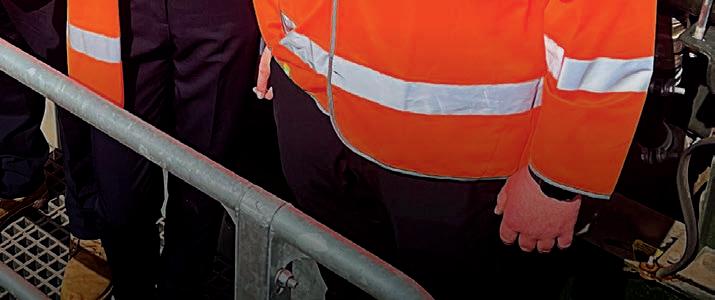
“We service a lot of housebuilders, groundworks contractors and councils,” Clare said.
“We may collect waste from a construction site customer, and the same customer is then taking it back as PMG recycled sand for use in a building project. It’s a fantastic circular economy.
“We have a 62-strong vehicle eet and cover Gloucester down to Taunton and into south Wales with our road sweepers. We also have a depot in Swindon, which enables us to extend our service to Oxfordshire.
“Here at Severn Beach, we are open from 6:00am to 5:30pm, Monday through Friday. We can also open on Saturday and Sunday by appointment, and when we have night shifts booked we can be open for tipping then as well.”
Designed for what Clare is a decade-long growth plan for PMG, the new CDE waste recycling plant comprises an R1500, one of CDE’s R-Series primary scalping screens, an AggMax scrubbing and classi cation system, an EvoWash sand washing system, and an AquaCycle high-rate thickener and static screen.
When the tanker or road sweeper arrives on-site, it allows the water to drain out of the body into the pit, removing any solids or lightweight organics using a bespoke PMG-designed system. The remaining liquid contents are then pumped automatically into the AggMax.
Once the truck has released the liquid, it will then discharge all solid waste, such as road sweepings. This waste is then loaded into the R1500, where oversized material will begin to be processed. Anything under 80mm will continue to the AggMax, which is eventually passed to the EvoWash.
All material that remains in the liquid and can’t be extracted through solid separation is sent to water treatment. Any sludge is then sent to a centrifuge, where the silt is separated to ensure process ef ciency.
The water gets returned to the system for further processing through the AquaCycle, which recycles up to 90 per cent of the process water for immediate re-use in the system.
The solution enables PMG to produce two products: a 5–25mm aggregate and a 0–5mm sand product for use in Bristol’s construction market.
“We’ve built in the ability to add a third deck in the screener so that we can have the option of producing another stone size,” Clare said.
PMG’s recycled aggregates and washed sand are mainly used in earthworks, but also meet the speci cations for highway works, pipe bedding and cable laying.
With strict regulations on waste products that can be sent to land ll, there is a pressing need to turn gully waste and road sweeping waste into an opportunity.
Under European land ll regulations, liquid waste consisting of road sweepings with a water or liquid content of 10 per cent or more can no longer be sent to land ll. In turn, this presents a challenge for disposing of this waste.
According to the Mineral Products Association (MPA), the UK’s market share of recycled aggregates is three times higher than the European average, highlighting the increased importance of repurposing waste.
Clare said PMG’s operation not only supports sustainability objectives but also generates new revenue streams to bene t the local economy.
“This was an investment that we had been thinking of for several years, and we are delighted to see the plant in action,” she said. “We’re proud to be recovering this material to transform it into high-value materials for the local industry. We’ve also been taking on people over the past year to prepare for this next business step.
After a year living and working in Australia, Clare joined the family business in 2020, during the COVID-19 pandemic.
“I studied civil engineering at university and had worked on the other side of this business as a contractor working on major projects such as Crossrail and Thames Tideway. I understand the pains inherent in construction sites and the need to offer a seamless service to customers,” she said
“It’s been great. The CDE people visiting us are extremely knowledgeable. If they are making a minor change to the plant, they also ensure the whole plant is running as well as it can. They are very proactive and

really helpful.”
Joining Clare and the CDE team to welcome customers and dealers at the open house event in June were her father, PMG founder and director Pat McGuinness, and her brother, PMG technical lead Paul McGuinness. Clare’s mother, Bernie, who, along with Pat, is originally from Ireland, played a key role in building PMG’s nance function and continues to support the business today.
“We’ve had a very good relationship with CDE throughout the last 10 years or so,” Pat said. “About two years ago, we wanted to invest and move to a bigger site, as our site by Bristol Temple Meads station was only 0.6 acres.
CDE’s AquaFlo 450 is part of the turnkey CDE waste recycling plant solution for PMG.
“This new site spans 6.5 acres, and we already have four acres of planning approval for the waste recycling plant, of ce premises, storage facilities, lorry parking, and other amenities. We have more room to tip off and can accept more material deliveries on site at any one time. We’ve got good customers and they’ve all come with us to this new facility.”
Paul said CDE has been a great support to the family business during this process.
“We learnt a lot from the rst CDE plant and worked closely with them on designing the new one,” he said. “Their engineers have been with us these rst few months of operation, ne-tuning the plant. You always get a few teething issues, but it’s been running well. We’re happy.”
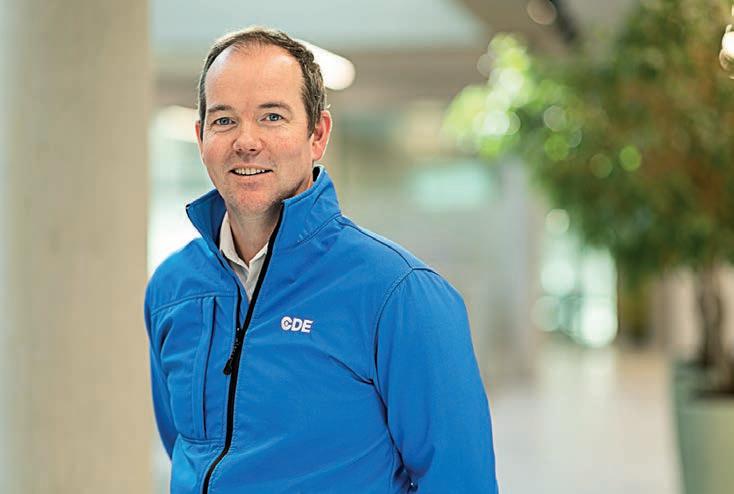
CDE key accounts manager Fergal Campbell said the company is proud to be associated with a forward-thinking organisation like PMG.
“PMG’s commitment to recovering and repurposing material is second-to-none. Over the years, we’ve seen the team’s ambition grow and how sustainability is truly at the heart of every decision they make,” he said
“This type of material is challenging and costly to dispose of, but PMG identi ed the opportunity in this space over a decade ago, and since then they’ve continued to push boundaries and invest in the right technology to divert even more material from land ll.
“With depletion of virgin materials across the world, there’s a greater need more than ever to turn today’s waste into tomorrow’s resource, and we will continue to champion the vital service that PMG is providing.” AB
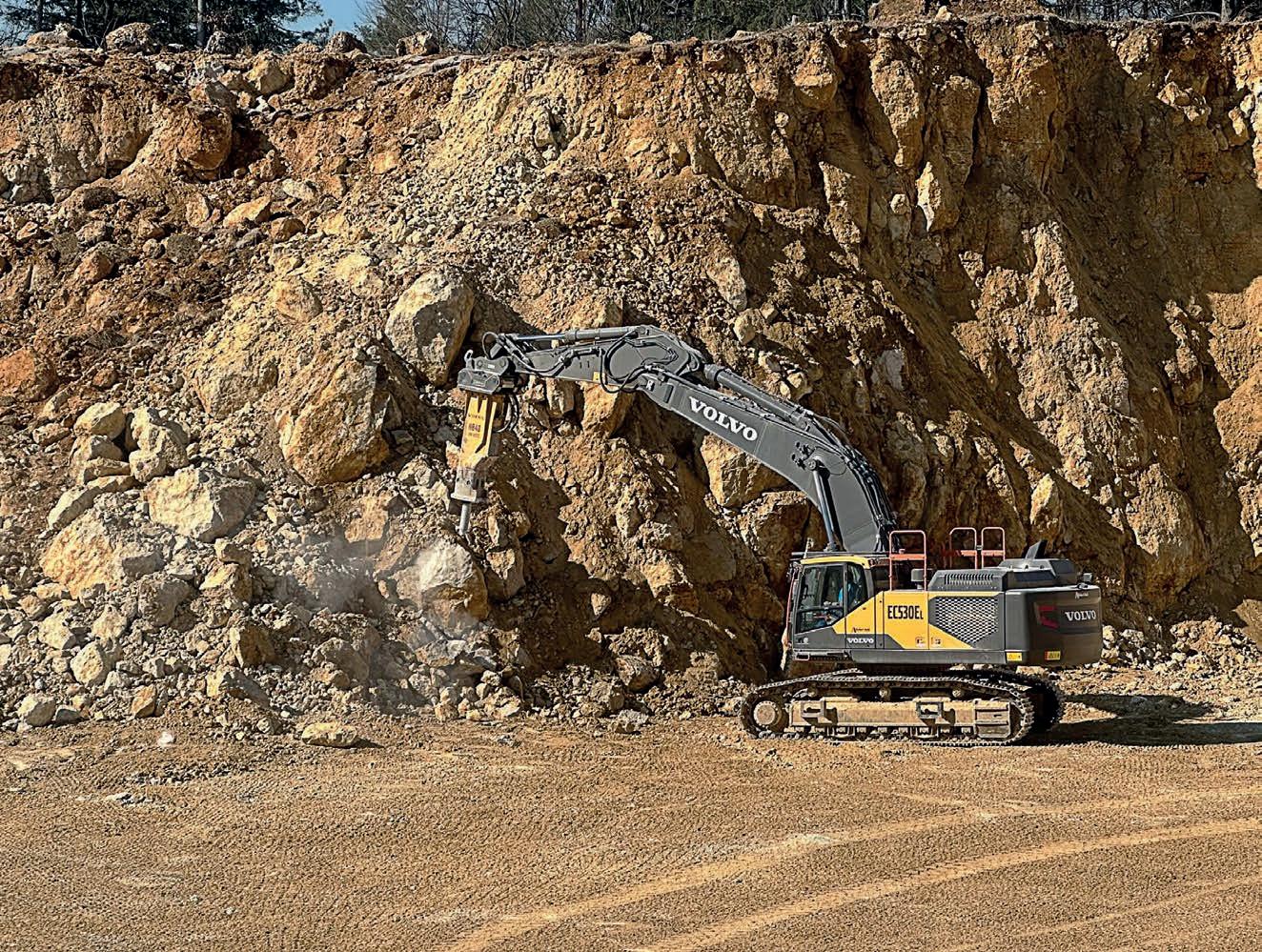

Increased machine power options are good news for cost-savvy quarry operators, while one major loading machine player is leading the way on smart production.
Sebald Zement is getting things moving in its quarry with the new Volvo EC530E and a matching HB48 hydraulic breaker from Volvo Construction Equipment (Volvo CE). The family-run company from Hartmannshof, Germany, is relying on excavator power for the rst time, gaining speed, exibility and peace of mind in its operations.
Sebald Zement not only stands for highquality cement products, but also processes gravel, limestone and dolomite into, for example, high-quality fertiliser granulate. The business’ new Volvo EC530E is a 50-tonne tracked excavator with a quickchange system and hydraulic hammer. It is the rst ever excavator in Sebald Zement’s eet, marking an important milestone in the company’s quarrying process.
“Originally, we had a wheeled loader in use for demonstration purposes. But in discussions with the customer, it quickly became clear that an excavator would be a much better solution for the requirements in the quarry,” Volvo CE dealer Robert Aebi sales representative Florian Forster said. “The EC530E was the perfect t – both in terms of performance and handling.
“The feedback after the demonstration was consistently positive, so the decision to purchase was made very quickly.”
The introduction of the Volvo excavator has fundamentally changed daily work in the quarry. Where previously large chunks of stone had to be laboriously sorted out by a wheeled loader after blasting, and then stored for weeks before being crushed later by an external service provider, the EC530E now performs this task directly on-site – and much more quickly and ef ciently.
“With the new excavator, we can not only process the entire blasting shot directly but also optimally feed our systems at the same time,” Sebald Zement technical operations manager Maximilian Spieß said.
“The oilQuick quick coupler makes it possible to switch between bucket and hammer within a very short time. This gives us enormous exibility and increases throughput in processing.”
The team was particularly impressed by the factory’s own Volvo breaker, which works in perfect harmony with the EC530E. Despite its immense impact power, the machine works surprisingly quietly – a real plus given the proximity to the site.
“The breaker is not only powerful but also surprisingly quiet. This is an important argument for us, especially outdoors, as we want to disturb our neighbours as little as possible,” Spieß said.
The purchase of the Volvo EC530E excavator was much more than just a machine decision; it was part of a comprehensive change process at Sebald Zement. With the generational change in the company management and the new appointment of Jochen Pohl as quarry manager, many areas were rethought internally. Processes were analysed, potential for improvement identi ed, and the team was actively involved in further development.
“We deliberately took the time to scrutinise existing processes and work with our employees to consider how we can work more ef ciently and sustainably,” Spieß said.
“The new excavator is the result of a whole series of tests, comparisons and discussions, and the feedback from the team was clear: this is the right machine for us.”
Another key factor in the decision was the close and reliable cooperation with sales partner Robert Aebi. From the rst meeting to commissioning, it was not only the technology that impressed, but above all the teamwork.
“Advice, service, support – it was just perfect,” Spieß said. "We always had a contact person, regardless of whether it was about technical details, special conversions
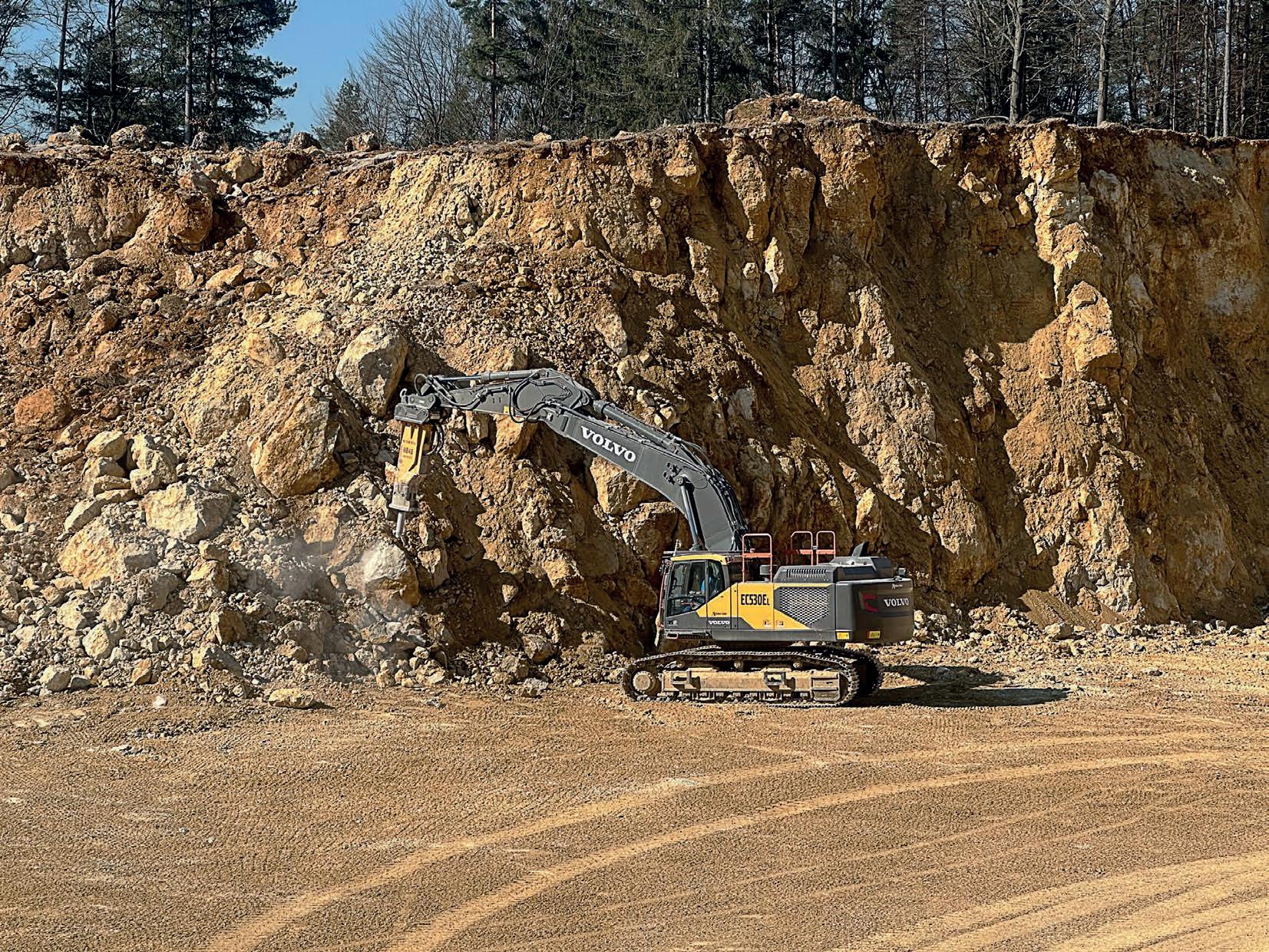
or service issues. The exchange with our permanent service technician also ran smoothly, a really good collaboration, both professionally and personally.”
Next-generation release
The new heavy-duty Cat 980 GC wheeled loader offers low fuel consumption with an on-demand fan, load-sensing hydraulics, intuitive controls and Performance Series buckets. Easy to own and simple to operate, the new wheeled loader is the right economical solution for a broad range of applications.
“We’ve built the new 980 GC on a long legacy of high-performance and highly reliable wheeled loaders with proven components and integrated Cat machine systems,” Frank Stadelmann, Caterpillar global product application specialist said.
“The loader’s simple user interface, intuitive controls and excellent visibility make for comfortable and ef cient operation, even with less experienced operators.
“New features to this model, like our Engine Idle Management System [EIMS], minimise idle RPM and fuel consumption to help deliver low owning and operating costs.”
Adding to the full line of Cat medium wheeled loader choices, the Cat C13 engine powers the new 980 GC. The engine’s Cat Clean Emissions Module works in the background without affecting production. The EIMS, Auto Engine Idle Shutdown, variable speed fan and load sensing hydraulics combine to offer low fuel consumption and sound levels on the machine.
Its eld-proven automatic planetary powershift transmission delivers high reliability and long service life. Four forward/ reverse speeds reach a maximum 39.8km/h (24.7mph) speed to move about the site quickly, and the well-known Electronic Clutch Pressure Control (ECPC) shifting system provides smooth, ef cient gear changes in all operating conditions. Available ride control improves operating smoothness over rough terrain while helping to ensure strong material retention and increasing ef ciency, and the optional limited-slip
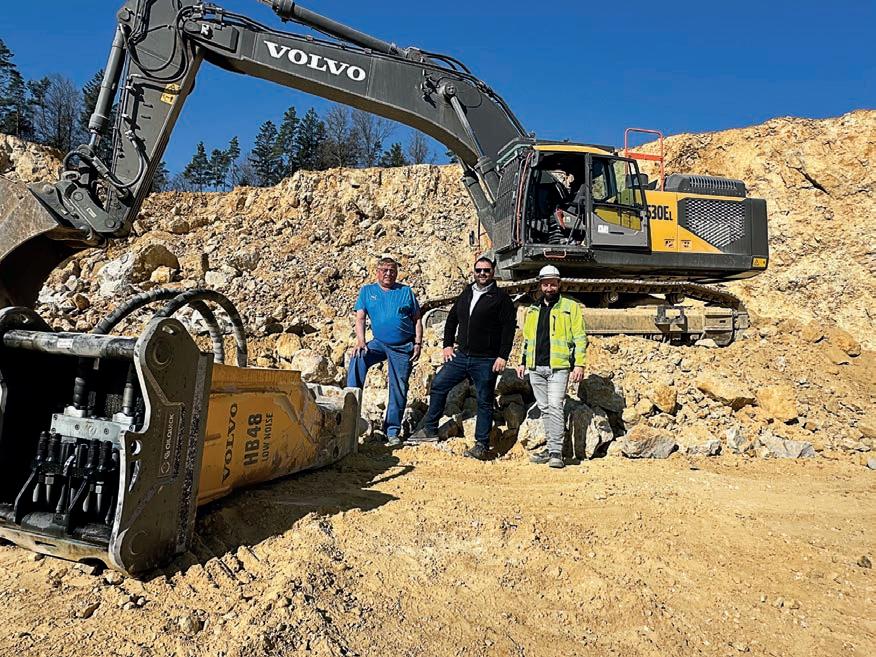
differential axle increases traction in poor underfoot conditions.
With a bucket capacity range of 4.3–5.8m³, easy-to-load Cat Performance Series buckets use a system-based approach to balance bucket shape with the machine’s lift and tilt capacity, weight and linkage. The bucket design improves material retention and reduces dig time with build options that include general purpose, at- oor, heavyduty rock, coal and light material to meet any application.
Field-proven, the Cat Z-bar loader linkage with cast crossmember and tilt lever provides strong digging ef ciency and high breakout forces for superior production capabilities. Load-sensing hydraulics produce ow and pressure for the implement only when needed, improving machine productivity and resulting in low fuel consumption. The new 980 GC can be equipped with the Cat Fusion quick coupler and controls, and combined with optional third-function hydraulics, the coupler allows use of a wide variety of work tools.
Cat VisionLink, standard for the new 980 GC, allows eet managers to track critical loader operating parameters like machine location, hours, fuel usage, diagnostic codes and idle time to improve productivity and lower operating costs. In addition, Cat Payload
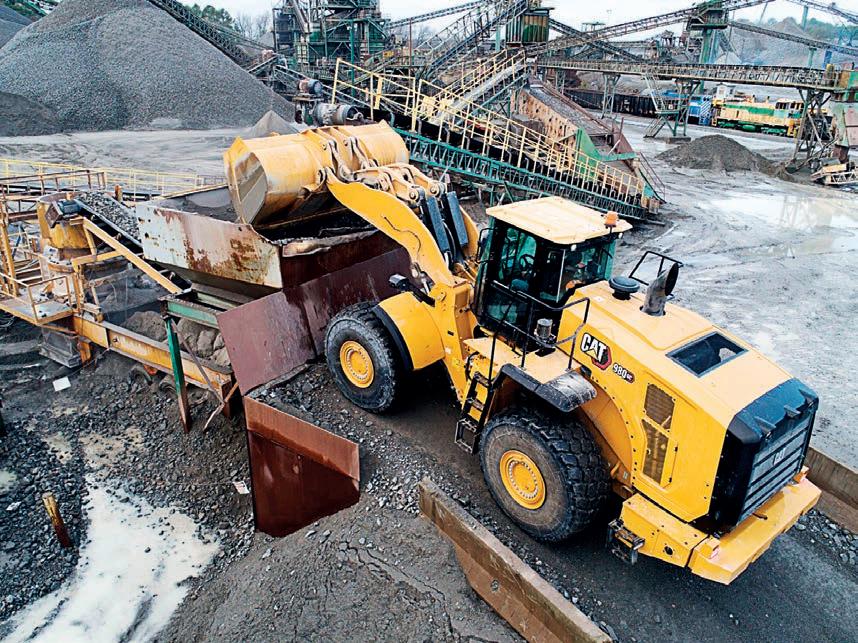
The acquisition of the Volvo EC530E excavator was part of a comprehensive change process at Sebald Zement.
offers optional material weighing during transport and lifting for on-the-go weighing (not legal for trade), allowing operators to load to exact speci cations, load more trucks, and avoid over- or under-loading.
The Cat Payload for Trade option for Cat Advanced Payload allows users to integrate the scale data directly into business processes. It is also type-approved by the International Organisation of Legal Metrology, while retaining all the features of the standard version of Cat Advanced Payload.
Providing a comfortable working environment throughout the shift, the 980 GC’s spacious cab design features easy, intuitive controls and excellent visibility. The complete user interface is designed as an intuitive system, allowing the operator to monitor machine health. Pilot-operated hydraulic controls deliver low-effort, comfortable operation and include a remote transmission kick-down switch for operating comfort.
Keeping safety in mind, ladders are standard on both machine sides, providing easy access to the cab from the left-hand side and to service points from the right-hand side. Extended windows with wide, at and distortion-free front windshields, combined with rearview mirrors and spot mirrors, offer clear visibility to the job site. A rearview camera is standard, and a windshield guard option is available. Air conditioning with louvred vents allows the operator to direct air ow for optimum cooling, while the comfort cloth mechanical suspension seat features adjustable armrests, headrest and multiple variations for superior comfort.
The new loader features convenient service points, a one-piece tilting hood with swing-out radiator, and sight gauges for quick and ef cient daily maintenance. Hardto-reach pins have remote, conveniently grouped grease ttings for easy preventative lubrication. An optional Cat Autolube System boasts simple, one-button control and includes a fault ash function to alert the operator to issues.
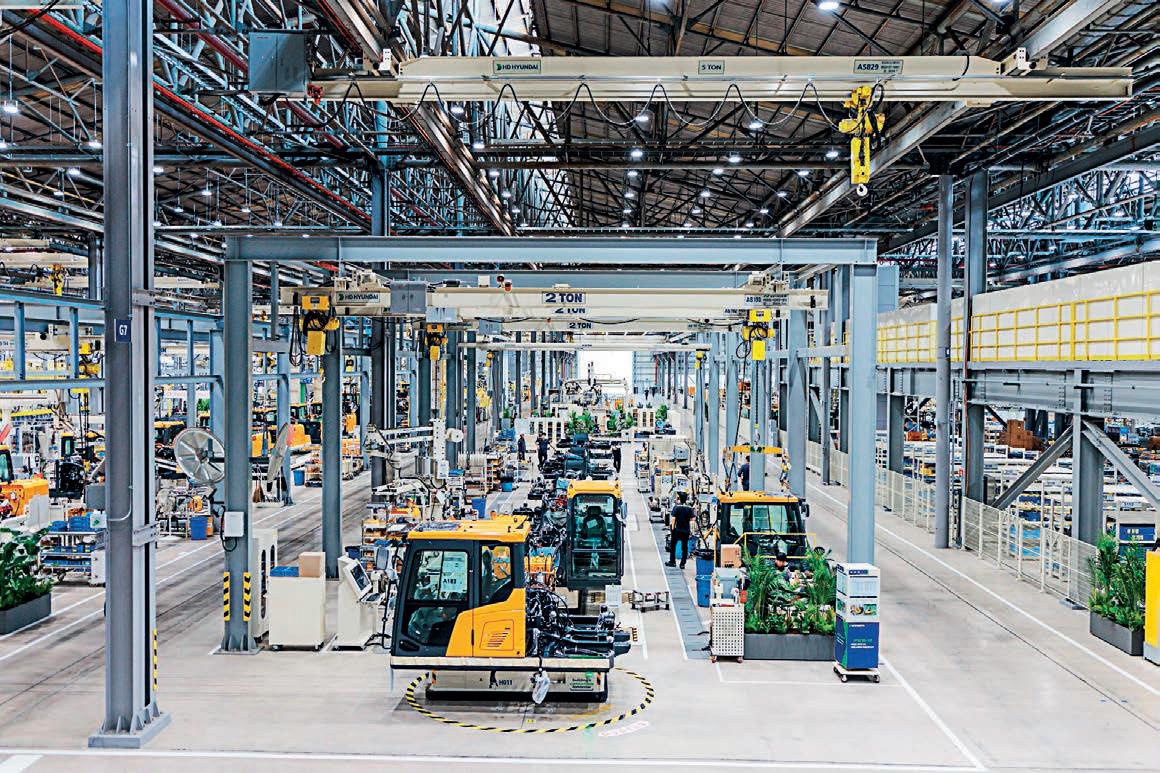
The new 980 GC is built on a legacy of high-performance and highly reliable wheeled loaders with machine components designed and manufactured to high-quality standards. The Cat dealer network backs it to help maximise machine uptime by providing global parts support, trained technicians and Customer Value Agreements.
Next-level investment
HD Hyundai Construction Equipment has invested €131 million in the development of an advanced smart factory at its Ulsan Campus in South Korea. The 4710m² campus is a single, cohesive facility with automated product ow and advanced quality control, and has seen the modernised factory increase production capacity by 56 per cent.
The company has been working on the Advancement Project since 2023, expanding and reorganising production lines, constructing a new quality assurance centre and a new receiving building, developing an updated of ce structure and transforming the plant into a smart facility. Production and logistics have been streamlined under an integrated factory system, while a real-time product tracking system has been introduced to optimise work ow and overall ef ciency.
Welding robots have been installed in the fabrication facility, featuring vision sensors on the body welding production line, which enhances productivity and consistency in quality. Unmanned transport vehicles (AGVs) and arti cial intelligence (AI)-based quality inspection systems in the assembly line further increase automation. According to HD Hyundai, this has resulted in labour productivity improvement of more than 20 per cent, while time required to complete a machine has decreased by up to 35 per cent.
The Ulsan facility, which manufactures medium to large excavators and wheel loaders, will see its production capacity increase by 56 per cent, from 9600 units per year to up to 15,000, enabling HD Hyundai to meet the growing demands of customers
worldwide. The smart facility will act as a ‘Mother Plant’ with direct connections to HD Hyundai’s major overseas production plants and customisation centres in Europe and the US.
“The new factory, transformed with a smart and safe production system, aims to become the world’s leading production hub, integrating advanced technology and environmental sustainability,” HD Hyundai chairman Kwon Oh-gap said.
The site has already delivered its rst machines, including a 40-tonne Next Generation crawler excavator that was launched to the market at the recent bauma exhibition in Munich. The site has also provided a 125-tonne class excavator and 35-tonne large wheel loaders to dealers worldwide.
“The Ulsan Campus has been transformed into a smart factory, signi cantly improving its quality competitiveness,” HD Hyundai chief executive of cer (CEO) Choi Cheol-gon said. “We are dedicated to providing top-tier products that will lead the construction machinery sector, including our Next Generation models.”
At its regional hub in Portsmouth, England, LiuGong recently hosted a landmark event, Zero Boundaries: LiuGong BEV Experience, bringing together key partners and stakeholders to showcase its next-generation electric construction equipment and reaf rm its long-term commitment to the UK market.
The event welcomed industry experts, including Construction Equipment Association (CEA) CEO Viki Bell and Hampshire Chamber of Commerce CEO Ross McNally, alongside key LiuGong dealers, customers, and representatives from leading industry bodies and regional business organisations.
LiuGong Europe resident Howard Dale, president re ected on the company’s global strategy and the importance of the
HD Hyundai Construction Equipment has invested €131 million in its smart factory in Ulsan, South Korea.
UK as a hub of international cooperation and innovation.
“We’re building a strong and sustainable future, across Europe and right here in the UK,” Dale said. “Our direction is clear: we are on a mission to empower people with intelligent, electric machinery and become a world-leading equipment and technology provider.”
Dale emphasised that this vision is underpinned by LiuGong’s Three TOTAL Strategy, a framework rst introduced at bauma 2025, built on the pillars of Total Globalisation, Total Solutions, and Total Intelligence.
LiuGong Europe product director Harry Mellor outlined the company’s leadership in battery electric vehicle (BEV) technology, with over a decade of development and real-world application, outlining LiuGong’s roadmap for future expansion across BEV and internal combustion engine (ICE) categories.
“By 2027, all major product categories will be launched in Europe,” Mellor said. “And by 2030, we aim to cover 85 per cent of total industry volume. That’s what being a fullsolution provider means for us.”
Mellor presented the BEV Model Plan 2026, which includes 10 new machines, including LiuGong’s rst electric skid steer loaders, reach stackers and forklifts for Europe, as well as expanded excavators and wheeled loaders, such as the 95-tonne 995FE and 35-tonne 8110TE.
He also highlighted the proven BEV performance across UK and European job sites, as well as the company’s innovations in battery, charging and site energy systems. These are supported by the integration of AI, Internet of Things (IoT), and information and communication technology (ICT), enabling smarter, more connected job sites.
“China leads in BEV technology, and LiuGong is a leader in China,” Mellor said.
“But leadership isn’t just about innovation; it’s about application. Our electric machines have proven themselves on real job sites, with our highest-hour unit now exceeding 20,000 hours, a clear benchmark for longterm durability.
“If customers have any questions, we’re here to answer them. With over 10,500 BEVs in operation globally, we’ve got the data and experience to back it up.”
Bell shared her perspective on LiuGong’s electric capabilities and the company’s growing role in the UK market.
“The range that LiuGong has is phenomenal, and the BEV capability I’ve seen today has pleasantly surprised me,” she said. “The partners LiuGong have brought together to put the whole package together are going to be key to unlocking the market. UK customers will be encouraged by hearing from those already using the machines, as many operators now prefer them.”
She also spoke about the broader importance of the construction equipment sector to UK infrastructure growth and the need for stronger government backing in zero-emission technologies. “The machines are there; now the government needs to step up and put the infrastructure in place so they can operate ef ciently and effectively.”
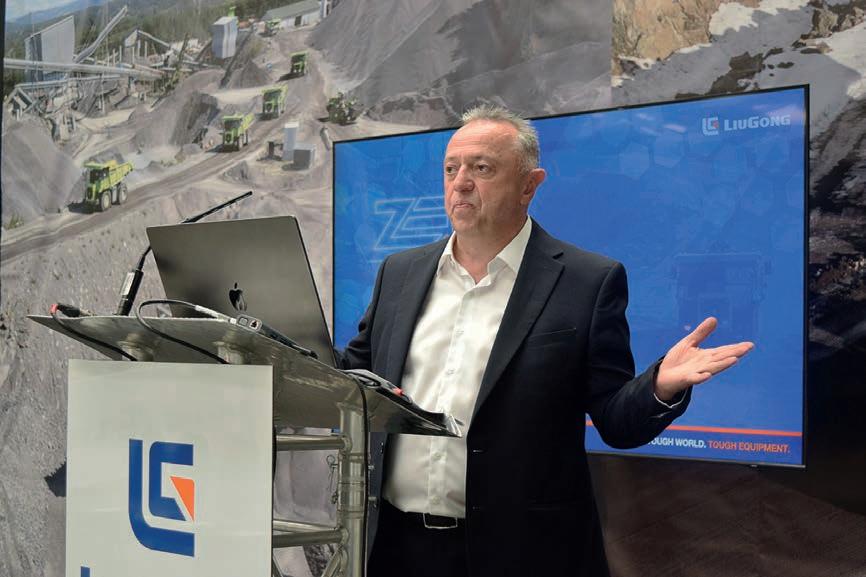
network to delivering electric solutions, our focus is on building lasting partnerships and supporting sustainable growth.”
UK technology. Now they don’t want to go back into the diesel area.”
Images: LiuGong
Hosting the event in Portsmouth, the home of LiuGong UK, served as a powerful symbol of the company’s long-term con dence in and commitment to the British market. Company leaders reaf rmed their ambition to expand UK dealer coverage, enhance regional service capabilities, and deliver electric solutions tailored to local customer needs.
“The UK is a key market for LiuGong,” Thornewell said. “We’ve built real momentum over the past few years, and our continued investment re ects our belief in its long-term potential. From growing our dealer
The event served as a platform to deepen partnerships and formalise forward-looking agreements. Holcim UK head of plant, engineering and asset maintenance Paul Mitchinson shared the company’s experience trialling LiuGong BEV machines.
“The experience we’ve had with the LiuGong machines has been very good,” Mitchinson said. “We put the bigger machine, the 870HE, into one of our south-west quarries, Callow, where the operators fully embraced the new
He recognised LiuGong’s support in con guring equipment to the operator’s needs. Holcim is in a position to nalise an order to a 20 electric wheeled loaders, pending nal approval from HQ, with extra units under consideration beyond 2025.
“I think the behavioural shift in the business is a big change,” Mitchinson said.
“The product itself is a very robust and powerful unit and will be key to supporting our carbon reduction programme.”
A signing ceremony also marked several key developments reinforcing LiuGong’s growing momentum in the UK. This included the formalisation of a new dealer agreement with Dragon Plant Sales (Wales). LiuGong also recently announced a new partnership with Lloyd Ltd, now covering north-west England and Scotland.
As LiuGong continues to roll out its strategic roadmap, UK operations will remain at the forefront, delivering global reach, full solutions, and intelligence-led technologies through its electric platform.
“This event was about setting a clear direction for the future, for LiuGong as a company and for the dealers and customers we support,” Dale said. “It gave stakeholders a comprehensive look behind the scenes, from our parts distribution centre to our technical and service support platforms.
“We’re con dent in our strategy, proud of our progress, and committed to growing our presence across the UK and Europe. With the right people, partners and products in place, we’re pioneering a smarter, more sustainable future for the construction industry.” AB
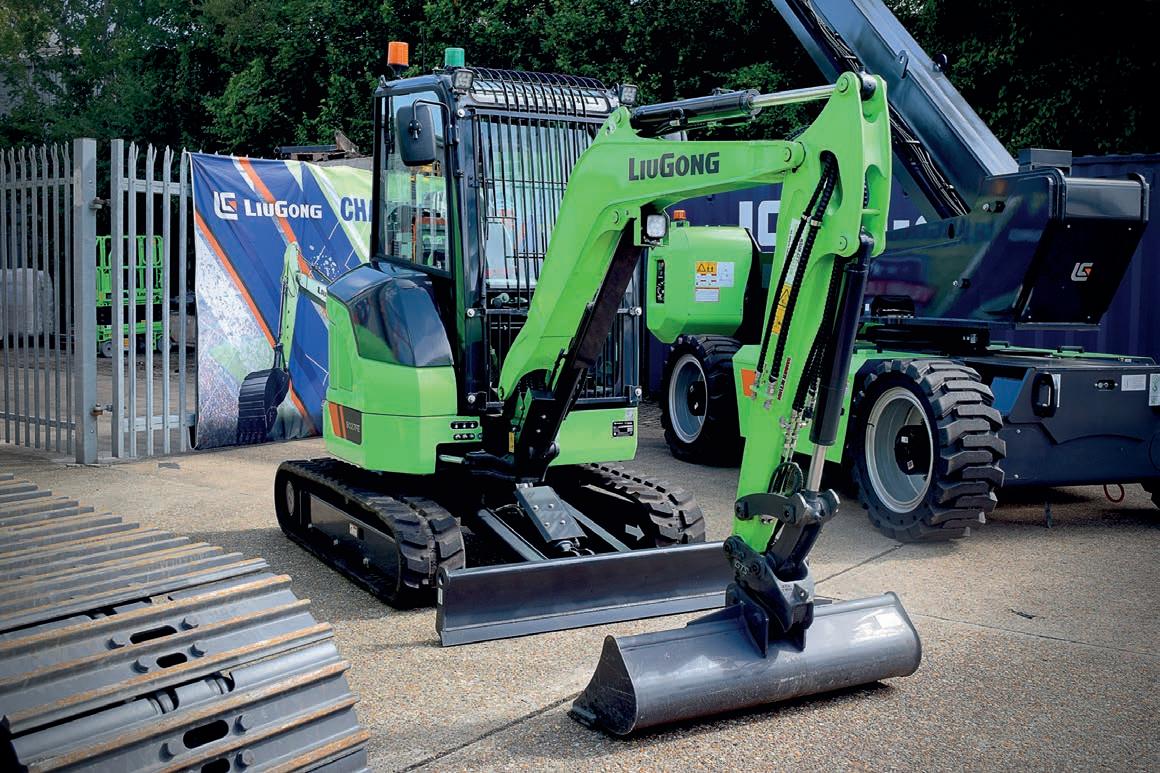
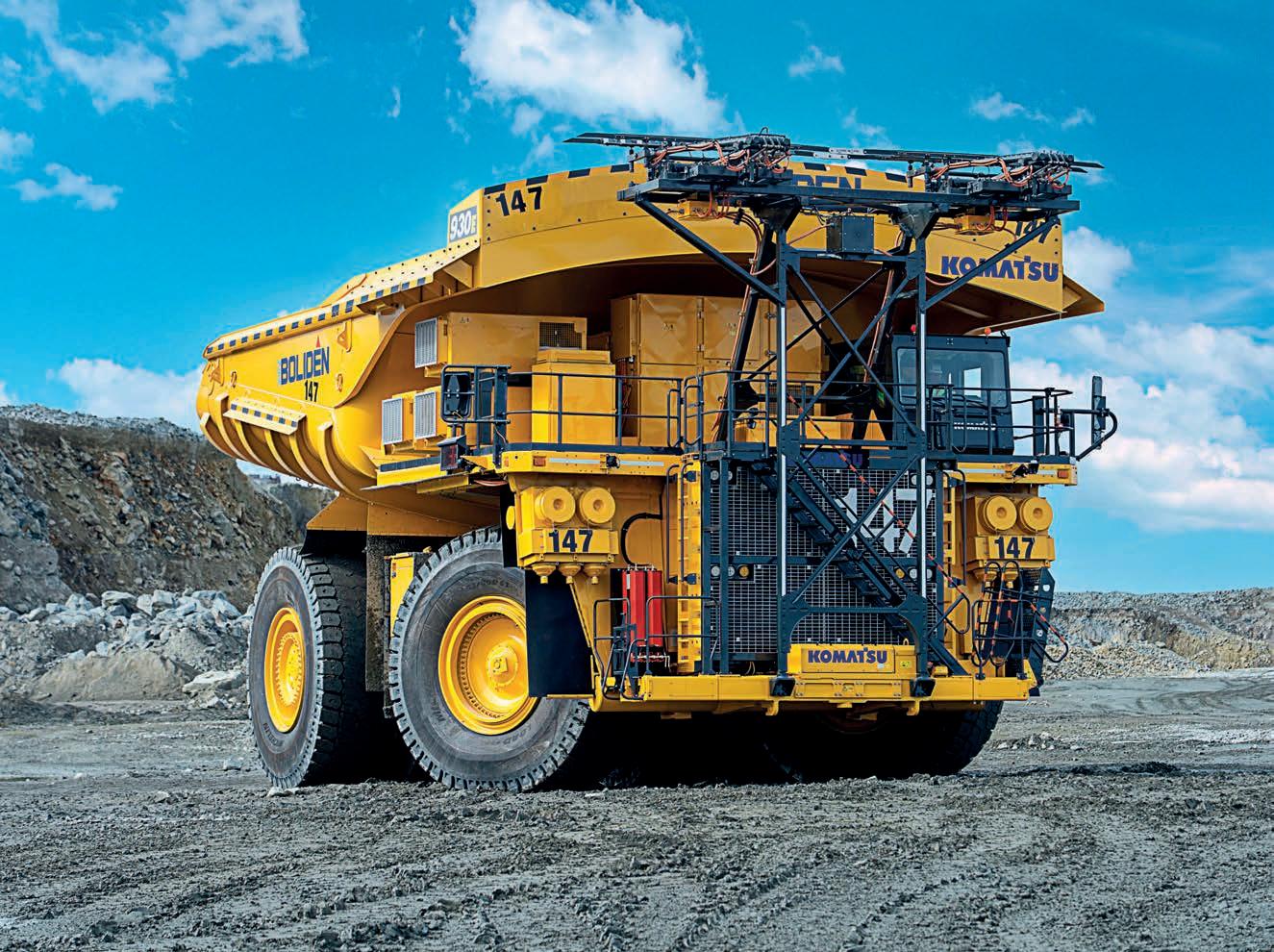

Hauler rebuilds are an increasingly popular option for aggregate producers, while the value of job-site demonstrations is clear for one leading manufacturer.
Volvo Construction Equipment (Volvo CE) dealer Babcock has completed its rst articulated hauler rebuild in South Africa. Speaking after the milestone was reached, Volvo CE service market manager for Africa Anders Eriksson explained why more eet owners across Africa are turning to machine rebuilds as a smart, sustainable way to maximise value and embrace the circular economy.
“Earlier this year, in South Africa, our dealer Babcock completed its rst full rebuild of a Volvo A40G articulated hauler, stripping the machine to the chassis and building it back to Volvo standard with a new powertrain. It’s a signi cant step – not just for Babcock, but for the many contractors and eet operators across Africa who are starting to look at their machines differently,” Eriksson said.
“Instead of asking, ‘when should I replace this?’, more and more customers are asking, ‘How much more can I get from it?’
“And, increasingly, the answer is,‘quite a lot’, especially with a Volvo-certi ed rebuild.”
Eriksson noted that the rebuild process is about protecting an original investment. You already own the asset. You know its history. And with a rebuild, you can restore it
to a high-performing, reliable state, without the nancial burden of buying new or even used equipment.
“For our customers across Africa, that’s an appealing proposition,” he said. “It lowers your total cost of ownership, reduces downtime, and helps you get more value from every machine in your eet. Rebuilt machines typically bene t from lower depreciation, more favourable insurance costs and, thanks to the known history, more predictable operations.
“For many businesses, especially in today’s economic climate, that can make a serious difference.”
Asked about the right time to rebuild, Eriksson said there is no single answer.
“The decision depends on the application, the environment and the maintenance history of the machine. But, in general, we see machines become eligible for rebuild between 10,000 and 20,000 operating hours,” he said. “Before any rebuild, our trained Volvo technicians carry out a detailed health check of the machine. From there, we work closely with the customer to recommend the right scope of work, whether that’s a powertrain overhaul or a full-scale rebuild with structural restoration, a renewed cab, and retro tted upgrades.
“With proper planning and scheduling, a typical rebuild takes around 12 weeks. We ensure all components and parts are ordered in advance, so there are no surprises or delays once the machine is in the workshop.”
Eriksson said there are some common misconceptions regarding machine rebuilds.
“When completed to Volvo factoryapproved standards, rebuilt machines deliver excellent productivity and uptime,” he said.
“You’re not extending a machine’s life by simply xing or replacing a few components; you’re proactively restoring it to top performance – and often upgrading it in the process.
“Just as importantly, rebuilds reduce the risk of unplanned failures. When a rebuild is complete, customers have peace of mind. The machine is known, serviced and backed by a warranty on all major components. And because the rebuild is planned, site teams can schedule around the downtime instead of reacting to it.”
Eriksson said environmental bene ts of rebuilds are also gaining attention, not just in Europe, but also in Africa. By reusing large structural components and restoring major systems, rebuilds dramatically reduce the energy, raw materials, and transport emissions associated with new equipment.

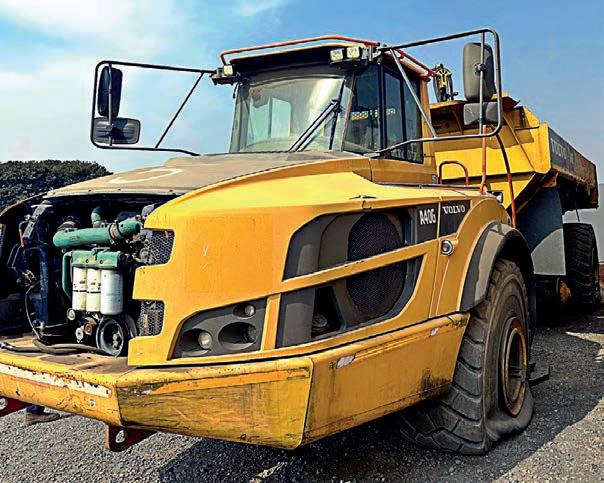
“To give just one example: rebuilding a used engine saves around 56 per cent in CO2 emissions compared to producing a new one. For a transmission, that gure is closer to 60 per cent. And when you consider how much copper, aluminium and bronze is built into every large machine, the resource ef ciency of a rebuild becomes even more compelling,” he said. “This matters for customers facing increasing pressure to report on sustainability performance or align with ESG [environmental, social and governance] goals, particularly in mining, infrastructure and public-sector projects.”
Eriksson said Volvo CE is seeing increased interest in rebuilds throughout Africa and the Middle East. Articulated haulers, wheeled loaders and large excavators are especially well suited for rebuilds – not only because of their durability but because the cost of full replacement can be signi cant.
“What’s even more encouraging is that many customers who try a rebuild once come back,” he said. “They see the bene t –nancially, operationally and environmentally – and begin to integrate rebuilds as a standard part of eet management strategy.
“With trusted Volvo dealers like Babcock now delivering rebuilds locally, customers in South Africa and beyond can access this service closer to home, with full transparency and support. And we’re proud to support this shift, because when a machine still has more to give – and the right partner is there to help extend its life – rebuilding isn’t just an option; it’s the right thing to do.”
Power-agnostic hauling
Komatsu, in collaboration with Boliden, has started eld trials for the rst diesel trolley truck in its new series. The Komatsu Power Agnostic 930E truck was of cially deployed on April 23 at Boliden’s Aitik mine in Gallivare, Sweden, marking a major step forward in the journey toward decarbonising surface mining operations.
Unveiled at MINExpo 2024 in Las Vegas, the Power Agnostic 930E haul truck garnered signi cant attention for its modular, future-
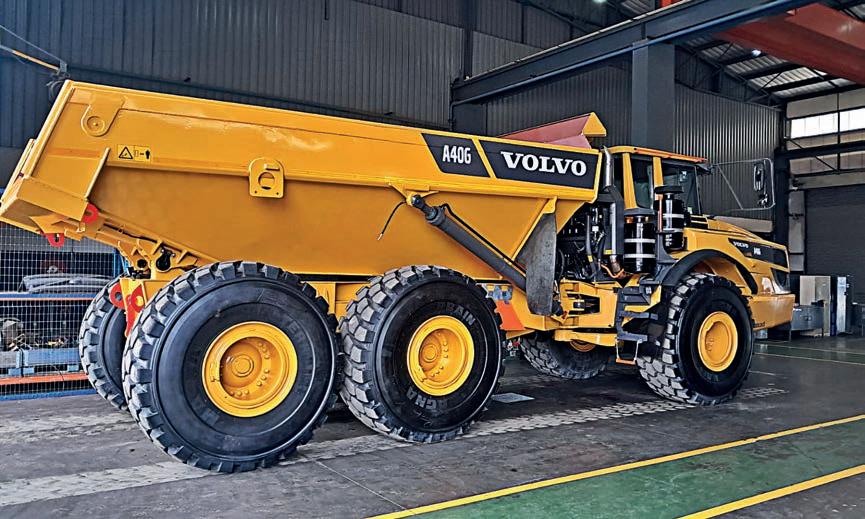
forward design. The truck displayed on the show oor was earmarked for Boliden’s Aitik copper mine, marking the rst truck to undergo site testing. Now operating at one of Europe’s largest and most productive openpit copper mines, this next-generation haul truck is set to undergo a 12-month eld trial.
Built on Komatsu’s new modular platform, the Power Agnostic 930E offers exibility and future-proo ng. The power-agnostic platform enables customers to begin with diesel power and later transition to alternative energy sources such as battery-electric or hydrogen fuel cell technology, depending on their operational needs, technology readiness, and pace of decarbonisation efforts. The integration of diesel trolley assist functionality further enhances performance by reducing fuel consumption and emissions, while paving the way for an electri ed mine.
“Integrating the Power Agnostic 930E into our eet re ects Boliden’s ambition to be at the forefront of sustainable mining,” Boliden senior project manager Jonas Ranggard said.
“Partnering with Komatsu on this pilot helps us explore innovative solutions that align
The Komatsu Power Agnostic 930E haul truck garnered significant attention for its modular, futureforward design.
LEFT: Machine rebuilds can bring older equipment into a condition that is as good as, if not better, than when it was new.
RIGHT: The first articulated hauler rebuild completed by Babcock in South Africa.
with our climate goals while continuing to deliver productivity and performance. We see great potential in this technology and look forward to where it can lead us next.”
As a founding member of Komatsu’s Greenhouse Gas Alliance, Boliden is reinforcing its commitment to a sustainable future. The upcoming trial will enable Komatsu and Boliden to gather detailed operational insights and lessons to advance haulage decarbonisation efforts further.
“This is more than just a technical achievement; it’s a meaningful step forward in our joint commitment towards zeroemission mining,” Komatsu Europe senior mining manager Jeroen De Roeck said. “By commissioning the rst diesel trolley truck in our Power Agnostic series at Boliden’s Aitik Mine, we are turning vision into reality. Our partnership with Boliden is a shining example
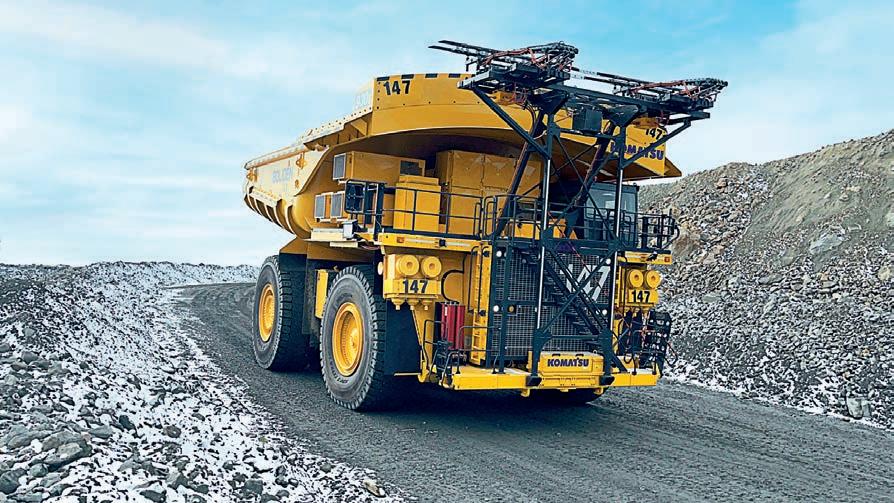
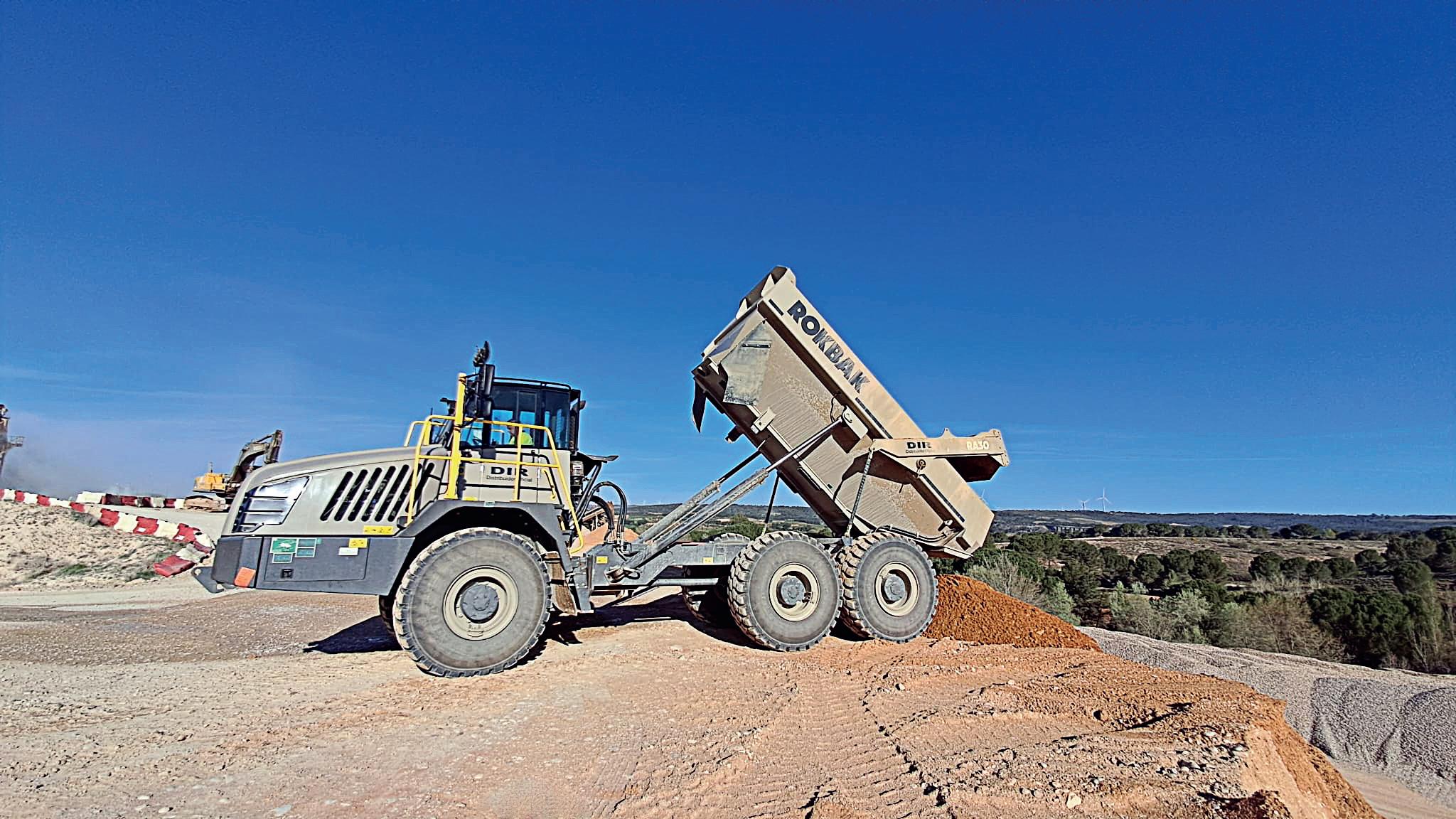
of how collaboration can drive sustainable innovation in mining.”
The lessons from this eld trial will play a critical role in guiding future advancements in Komatsu’s power-agnostic line-up. This will support the companies’ shared ambition to decarbonise mining operations and drive progress toward a lower-emission future.
Rokbak reins on Spanish plains
By showing the Rokbak RA30 articulated hauler in action on rough terrain, heavy equipment dealer DIR has sparked growing demand among construction and quarrying rms in Spain, proving that performance, not promises, sells trucks.
When construction and quarrying companies look for new equipment, they want more than technical speci cations – they want proof. This focus on tangible results is precisely what motivated DIR, Rokbak’s recently appointed dealer for Spain and Portugal, to take a bold, hands-on approach: bring the Rokbak RA30 articulated dump truck (ADT) directly to the region’s toughest job sites and let the hauler speak for itself.
“We wanted to respond to a growing need in the Spanish market for reliable, highperformance articulated haulers,” DIR chief executive of cer David Iglesias said.
“Customers want to see trucks in real job-site conditions, not just specs on paper. With the RA30, we knew we had something worth showing.”
DIR’s demonstration programme was anything but theoretical. The team selected challenging earthmoving and quarry sites, environments where productivity, manoeuvrability and durability are pushed to the limit. Steep inclines, loose aggregate and muddy, uneven terrain were all part of the test. The 28-tonne RA30 consistently maintained traction and stability, loaded
or unloaded, and did so without a single performance-related issue.
“Customers consistently pointed out the comfort of the cab, the smooth ride and the intuitive controls,” David said. “But, above all, they appreciated the hauling power and how well it handled dif cult ground. It’s a truck that just keeps going.”
DIR didn’t shy away from direct competition. In several demonstrations, the RA30 was tested side-by-side with other leading ADTs. Customers observed that Rokbak matched or outperformed competitors, particularly in operator comfort, simplicity and fuel use. The value-for-money ratio was clear and, for many, decisive.
“In terms of fuel consumption, the RA30 impressed,” David said. “Real-world data showed better-than-expected results compared to previous-generation haulers and some current competitors. This was one of the key decision factors for customers.”
Feedback from operators and technicians was equally positive regarding maintenance. The RA30’s design prioritises accessibility and straightforward daily checks, with no unnecessary complexity.
“Technicians found everything easy to access and praised the clarity of the daily checks,” David said. “The design is clearly made with real-world service in mind.”
A signi cant factor in building customer con dence has been Rokbak’s membership of the Volvo Group.
“Rokbak’s connection to the Volvo Group signi cantly boosts customer trust,” David said. “It reassures buyers that this is not just another hauler, but one backed by a global name in reliability and after-sales support.”
Perhaps the most telling outcome of DIR’s demo initiative is the conversion of sceptics. Several customers who were initially hesitant made the purchase decision
after seeing the RA30 operate live on their own sites.
“One client said, ‘I needed to see it in my pit, with my material – and it delivered,’” David said.
The market’s response has been swift and positive. The demo unit itself was sold before all planned trials were even completed, a clear sign of growing trust in the product and brand.
Awareness and interest in Rokbak are said to have increased substantially as a result of these hands-on experiences.
“Based on feedback, the RA30 now stands as one of the most competitive articulated haulers in our market segment. It’s no longer the ‘newcomer’, it’s a real option for serious work,” David said.
Looking ahead, DIR is preparing to introduce the larger 38-tonne RA40 demo unit, targeting quarrying, mining and large infrastructure projects. Expectations are high that this model will open new opportunities for Rokbak in Spain.
To companies unfamiliar with Rokbak or hesitant to move away from more established brands, David offers simple advice.
“Come see the truck in action. Talk to customers who have it,” he said. “Rokbak offers performance, reliability and support. Plus, it’s backed by Volvo. Give it a chance.”
Rokbak regional sales manager for EMEA Paul Culliford echoed that sentiment.
“At Rokbak, we believe in earning trust the hard way – by showing up, working alongside our customers and delivering on our promises,” he said.
“The success of our partnership with DIR and the enthusiastic response to our demo programme in Spain prove that when customers see Rokbak in action, they see a hauler that’s as down-to-earth and dependable as the people who run it.” AB










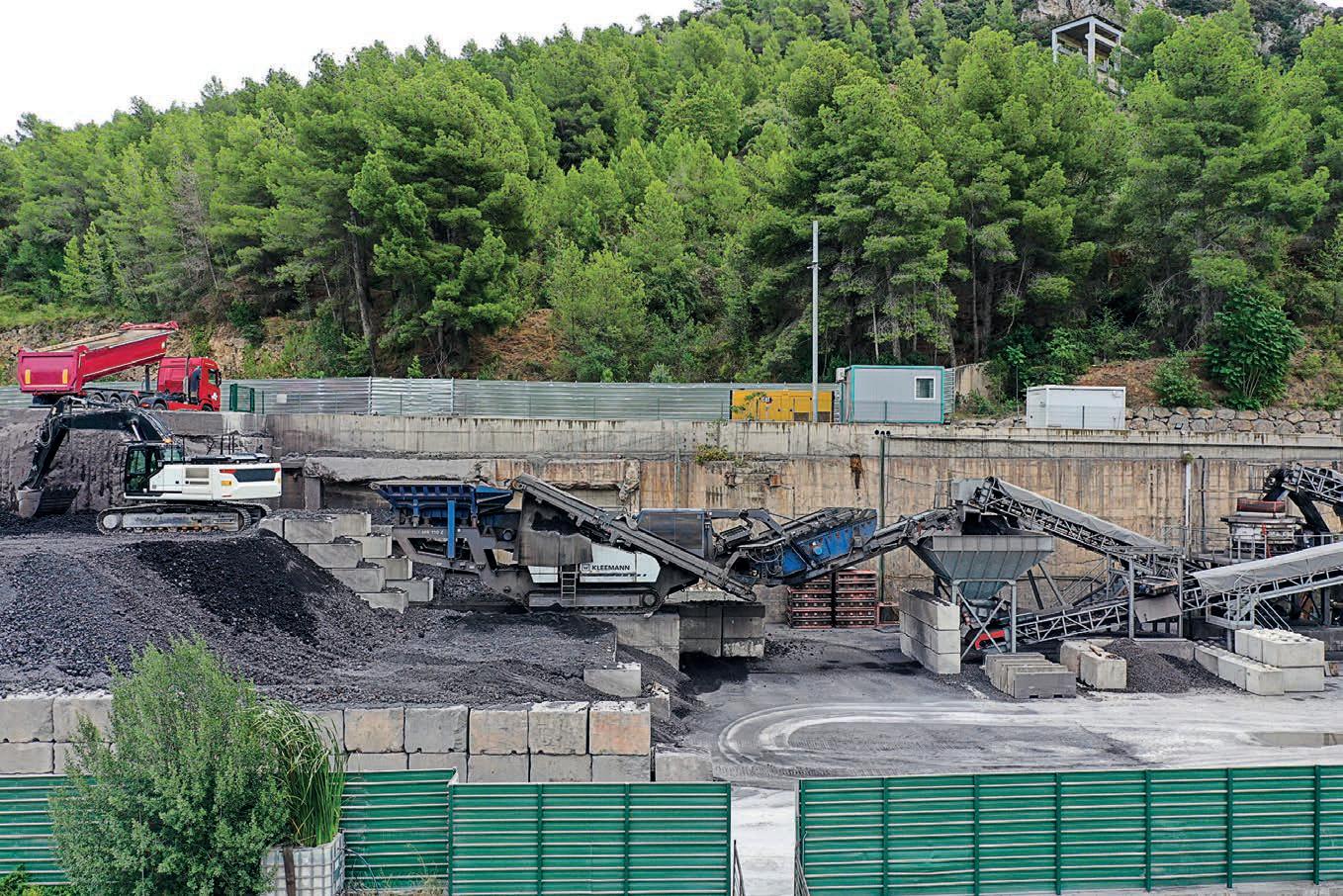
From demonstrated results for customers to expanding distribution networks and new appointments, the crushing and screening sector is full of new updates.
In 2010, Spain was a hive of activity. Rafael Nadal claimed Wimbledon, Spain conquered the world in the FIFA World Cup, and Barcelona was no exception as the city celebrated Barcelona FC becoming Spanish champions once again in LaLiga.
It was also the year that ADEC Global was founded as a waste materials processing company, specialising in construction materials and eventually incorporating steelworks materials.
“We convert waste materials that used to end up in land lls into valuable products,” ADEC Global operations manager Maria Vazquez said.
In the subsequent decade and a half, ADEC Global has become a major name in Spain’s recycling sector, in part due to the support of Kleemann, a company with expertise in processing highly abrasive slag.
ADEC Global processes around 500,000 tonnes of material, which includes a signi cant amount of black slag contaminated with steel. The company owns 11 Kleemann plants, including a MOBIREX MR 130 PRO, which supports its quarrying services to produce aggregates for the concrete and cement industry.
At the heart of the ADEC Global is the impact crusher MOBIREX MR 110 EVO2 and coarse screening plant MOBISCREEN MSS 802 EVO. This particular plant has been at ADEC Global since 2018 and has notched more than 10,000 operational hours. This combination works to process slag into asphalt while ensuring the separated iron components can be returned to foundries.
ADEC Global worked closely with Kleemann and local Kleemann dealer EMSA to tailor an ideal solution suited to the recycling application.
“Together with Kleemann and EMSA, our local contacts for Kleemann plants, we have developed an ideal process to tackle this demanding task,” ADEC Global managing director and founding partner Fernando Hernandez said.
“Wear parts were a real challenge: how could the impact bars withstand the abrasive material and achieve a long service life without breaking? How could we make the process safer? In the end, a solution was found in close collaboration with Kleemann that is economically viable despite the challenging material.”
The performance of the MOBIREX MR 110 EVO2 and MOBISCREEN MSS 802
EVO has impressed many of the ADEC Global employees.
“There are very few machines out there that can withstand this extremely abrasive material,” ADEC Global machinery and logistics manager Oscar Hernandez said.
“The slag contains iron deposits that are broken down during the crushing process. Even then, the Kleemann impact crusher remains steadfast. I don’t know of any other plant that can handle that.”
This Kleemann plant is capable of processing feed material up to 200mm and producing up to 200 tonnes per hour at maximum capacity. The plant is also equipped with a magnetic separator, which splits the metal from the slag in the processing stage, and an overload system, which protects the crusher when material or foreign objects jam the crusher. This is coupled with low fuel consumption, with the Kleemann plant consuming 19 litres per hour.
“The plants we had in the past consumed signi cantly more than that. Here, the dualpower drive gives us the option of operating


the plant with electricity in the future, which means zero CO2 emissions locally,” Hernandez said.
“Without this high-performance impact crusher, the entire process wouldn’t work.”
Metso broadens footprint
Metso has expanded its presence within the construction, aggregate and contractor sectors of the Caribbean and Latin American markets.
The original equipment manufacturer (OEM) has signed a distribution agreement with Millennium Machinery Parts and Service Corp.
The agreement will see Millennium represent the Metso line of products in key territories, including the Bahamas, Turks and Caicos, British Virgin Islands, US Virgin Islands, Dominica, Granada, St. Lucia, Bonaire, Aruba, Curacao, Trinidad and Tobago, Suriname, Guyana, French Guyana, Ecuador and Panama.
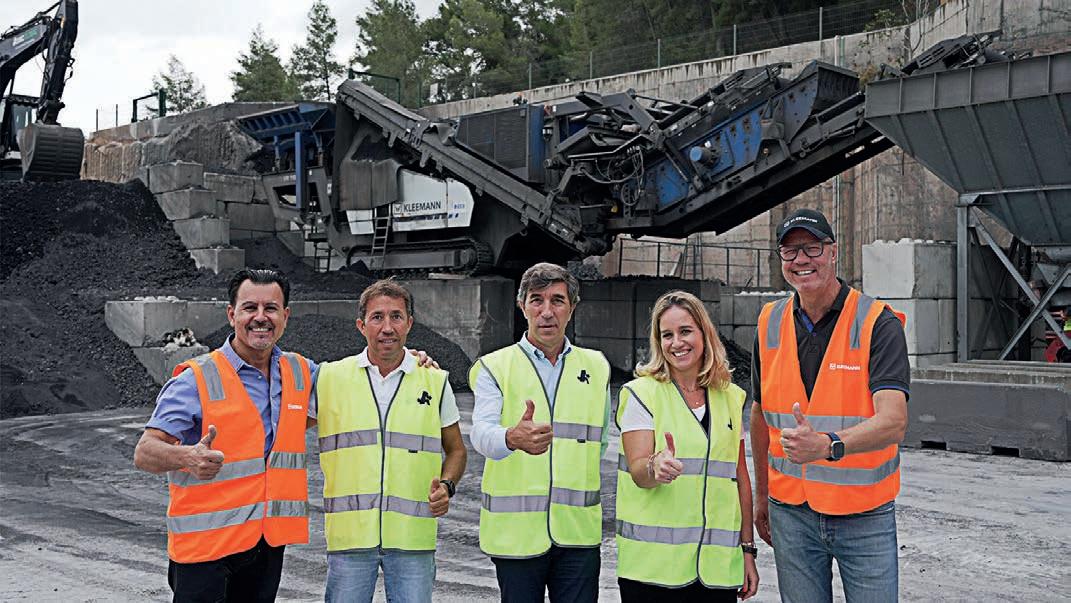
“We are proud to welcome Millennium as part of our distribution network,” Metso director of distributor management and organisation (South America region) Federico Villalba said. “Millennium brings extensive knowledge and expertise in the market.
“With a strong focus on providing dedicated customer support and tailored solutions, we are con dent they will deliver the added value of our products to all customers. This partnership marks an exciting step in expanding our support to our customers.”
Millennium Machinery Parts and Service Corp president Robert Valdes believes the partnership will bene t customers with enhanced support and a broader range of tailored equipment and services.
“We are very proud to announce the addition of the Metso line of products for the construction, aggregate and contractor business segments,” Valdes said.
“We will be supporting sales for new and used machinery as well as technical support, spare parts and wear items.
“This partnership enables us to offer our customers access to top-tier products and technologies, combined with our local expertise and commitment to service excellence.”
This is one of several key dealer announcements Metso has con rmed in recent times, including ICM Solutions’ move into Arizona in the US.
ICM Solutions acquired the crushing business from Empire Southwest, which meant its authorised distribution sales and service territory with Metso now includes Arizona alongside Utah, southern Idaho, Nevada, and northern California. It follows ICM Solutions’ acquisition of Compass Equipment in April to bolster its presence in the western US.
Metso vice president of Americas distribution management Steve Cianci said the strategic collaboration marks a signi cant step in strengthening Metso’s distributor network.
“We are thrilled to see ICM Solutions’ continued investment and commitment to the Metso brand by expanding their operations and in uence into the Western United States,” he said. “This acquisition strengthens our partnership and enhances our ability to deliver exceptional service to our customers across a broader territory.”
The announcement means ICM Solutions will be responsible for supporting industrial, crushing, and mining customers throughout Arizona.
“ICM is thrilled to add Arizona to its existing Metso territory. We are committed to a seamless transition for Empire Southwest customers and will maintain the highest level of standards these customers have come to expect,” ICM president Scott Gardner said.
“This acquisition allows us to deepen our relationships with customers in Arizona and provide even greater value through ICM’s resources, expertise and dedication.”
Superior Industries adds leadership Superior Industries has con rmed Kristin Sweeney will join the US-headquartered manufacturer and supplier as its director of sales for the company’s turnkey plant and construction management division.
Sweeney has had an extensive career, with more than 18 years in the aggregates sector, including roles in engineering, operations and sales. Her background includes positions with US Aggregates, Pennsy Supply, and Oldcastle, where she managed multi-million-dollar projects.
Sweeney’s appointment marks the continued expansion of Superior Industries’ construction management division. The company has invested heavily in this area to support dry bulk producers and material handlers across every project stage.
The construction management division at Superior Industries has supported customers across all stages of complex project processes, including initial design and engineering through fabrication, construction and start-up.
Superior Industries president Jason Adams said Sweeney will bring valuable experience to the team.
“Kristin has walked in the boots of our customers,” he said. “Her unique blend of
operations, engineering and sales experience means producers gain a partner who understands their challenges and can deliver projects that perform reliably.”
Great Britain calling for MAGNA
Terex’s newest brand, MAGNA, has unveiled its new distributor for Great Britain as it continues to expand its presence in the global aggregates sector.
Blue Machinery has signed a distributor agreement with MAGNA, which will see Blue Scotland, Blue Central and Blue Southern represent the brand’s product range in their territories. Additionally, Blue Spares has also been named as the “authorised supplier of genuine MAGNA OEM parts”.
“We are thrilled to appoint Blue Machinery as our distributor for Great Britain, and rst in Europe,” MAGNA business line director Neil McIlwaine said. “The group has displayed over many years an unrivalled level of support to material processing customers, most notably in the crushing, screening and conveying industries.
“MAGNA will bene t from regional expertise in both sales and support, ensuring our end users have the best service and support available when required. With a comprehensive product portfolio aimed at larger volumes and higher throughputs, Blue Machinery will help us deliver solutions to this segment of the market.”
MAGNA is Terex’s range for high-capacity crushing and screening equipment, designed especially for customers who work with larger volumes or output levels. The range includes large-format crushers, jaw, cone and impactors, and screening solutions ranging from horizontal screens, trommel screens, scalping screens, and more.
“We are delighted to further strengthen our relationship with Terex through the distribution of the new MAGNA range,” Blue Scotland managing director Austin Carey said. “This marks an exciting new chapter in our collaboration and allows us to provide our customers with access to a truly premium line of high-capacity equipment.
“We’re excited to introduce customers across Great Britain to the MAGNA range ... showcasing its capabilities in highperformance material processing.” AB
Companies are increasingly investing in drill rigs and rockbreakers within the quarrying and aggregates sector with positive results.
Collins Earthworks has earned its reputation as a capable operator on some of the biggest and most challenging earthmoving projects in the UK.
A fundamental part of its recent success has been the 2023 purchase of the Ball Eye Quarry, near Cromford in the Peak District in Derbyshire. The famed quarry was once a hive for the extraction of lead, uorite, baryte and limestone, but had fallen by the wayside when it was abandoned in 2014.
“The purchase of the Ball Eye quarry was of strategic importance for us. Owning a quarry gives us the opportunity both
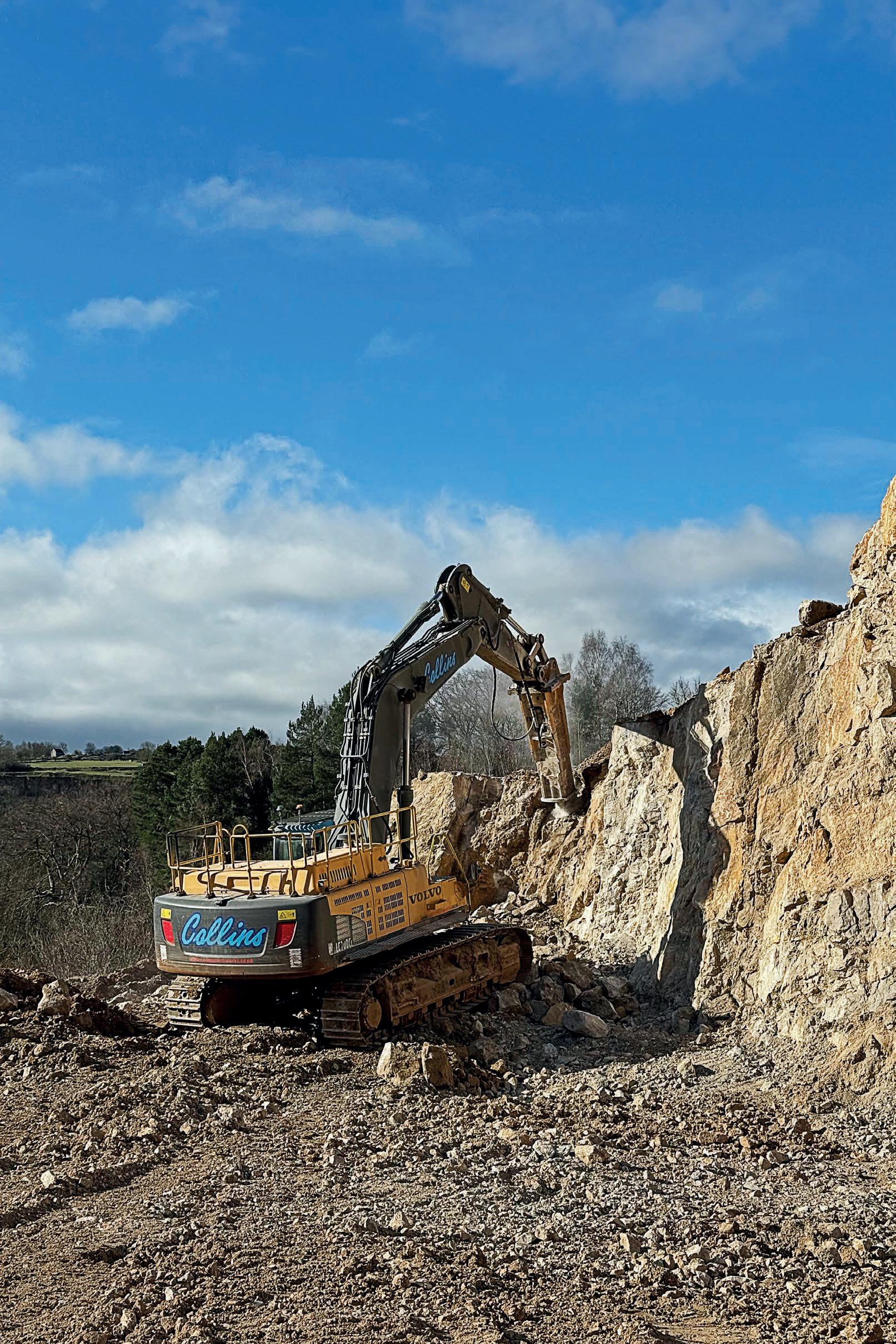
to obtain high-quality aggregates for our projects and to supply them to our customers through the transport division,” Collins Earthworks chief executive of cer David Collins said.
The UK-based operator was determined to restart operations at the quarry. Since taking it over under Collins Earthworks, the quarry has become known for its high-quality limestone aggregates.
The company has taken a sustainable approach to developing the quarry including investing in a eet of Volvo FMX electric vehicles, off-grid rapid charging stations and numerous other initiatives.
The UK-based producer has also invested in a portfolio of Indeco demolition hammers from long-standing distributor Derek Fitzgerald Plant in Leicestershire. Collins
Earthworks’ portfolio includes a range of Indeco demolition hammers ranging from small HP 621/700 versions to the medium and large HP 1500, HP 2500, HP 5000 and HP 7000 models, up to the giant HP 12000.
A key feature of the Indeco hammers is the automatic variable blow technology that adjusts the power and the frequency of the blow to match the material’s hardness.
The HP 12000 has been in constant use at Ball Eye Quarry since it arrived.

The largest Indeco demolition hammer plays a key role in primary and secondary pulverising of limestone at the quarry while mounted on a Volvo EC700 excavator. Collins Earthworks has estimated that the hammer works for around eight hours a day on about 1700–2000m³ of material.
“We are very happy with our HP 12000. It works non-stop with no problems at all. No hammer from any other manufacturer compares to it in terms of power and production capacity,”Collins said. “It amazes me that every rock quarry in Britain doesn’t have one.
“We now have a eet of Indeco equipment, and we are very satis ed with its performance at the various worksites.
“They have proved to be hard-wearing and ef cient with low maintenance requirements, which means less time lost in repairs and more time dedicated to productive work. When assessing demolition equipment, we look for machinery that can ensure high productivity with minimum downtime – and Indeco meets these expectations.”
Bulls eye for Luck Stone
Epiroc engaged Luck Stone to launch the SmartROC D65 drill rig in the US aggregate market, which the manufacturer has heralded as a rst for the worldwide quarry sector.
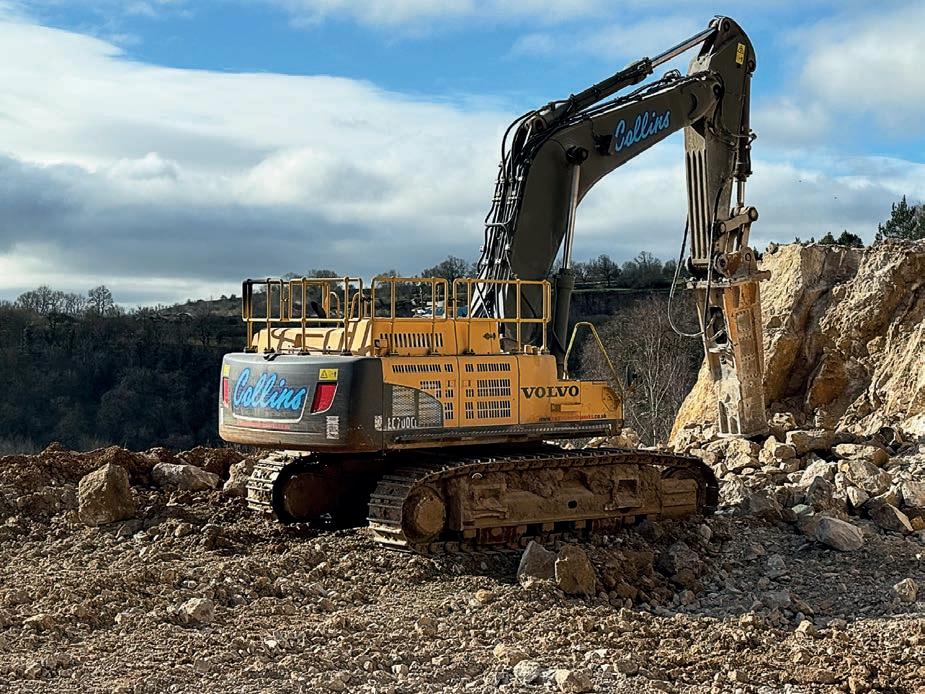
The two companies, in partnership with James River Equipment, will work together long-term in the project, which will include local service, training and technical support.
Luck Stone director of engineering Chuck Stilson said the company is committed to investing in autonomous technology.
“Our philosophy has always been about doing the work in the best possible way,” he said. “Partnering with Epiroc on autonomous drilling aligns perfectly with that vision.
“We’re not only improving productivity and safety, we’re providing new opportunities for our associates and rethinking what’s possible in aggregates.
Epiroc and Luck Stone will share data from the performance of the SmartROC D65 MKII, which both said will deliver broader insights for the industry relating to automation.
Established in 1923 by Charles Luck Jr, the Luck Stone, part of Luck Companies,
has several operating locations, including Virginia, North Carolina, South Carolina and Georgia. In recent times, Luck Stone has been a proven adopter of autonomous technology, including autonomous plants and autonomous haulage systems (AHS).
Earlier in the year, Luck Stone marked one million tonnes hauled autonomously at its Bull Run Quarry in Virginia. Bull Run Quarry was one of the rst in the aggregates sector to deploy Caterpillar’s autonomous Cat 777 trucks with a full autonomy technology stack and site integration services.
At the announcement, Luck Companies president and chief executive of cer Charlie Luck said the milestone reaf rmed the company’s belief in autonomous technology.
“This autonomous journey with Caterpillar has been one of the most powerful and
The HP 12000 plays a key role at Ball Eye Quarry.
transformative projects in our 100-year history. What once felt like a dream at our Bull Run site is now a reality, thanks to the trust, collaboration and shared commitment between our teams,” he said.
“Reaching the one-million-tonnes-hauled milestone has engaged every part of our operation, from training and mine planning to operating ef ciency and teamwork, proving that this technology can work, and work well, in a quarry environment. Most importantly, it’s creating opportunities for our associates to grow, lead and be part of something groundbreaking.
“This project is an example of what’s possible when people, purpose and progress come together.”

Now, in partnership with Epiroc and James River Equipment, Luck Stone has expanded its autonomous technology.
The SmartROC D65 MKII features Epiroc’s advanced automation technology, which is capable of supporting complete drill patterns without an operator in the cab. It is compliant with Global Mining Guidelines Group Level 4 standards for fully autonomous equipment.
The SmartROC D65 MKII drill rig is capable of operating under remote supervision through Epiroc’s Common Automation Panel and Link Open Autonomy (LinkOA) platform. The platform also provides data integration and eet management.
“Luck Stone’s leadership and commitment demonstrate that autonomy in quarries isn’t future vision, it’s current reality,” Epiroc USA business line manager Ron Hankins said.
“Our partnership is not about a proof-ofconcept; it’s about meaningful operational gains that the next generation of drilling will bring in the US.” AB
RJ McLeod has taken delivery of a new order for 16 machines from Develon, formerly Doosan Construction Equipment.
One of Scotland’s largest privately owned civil engineering and building contractors has con rmed a major investment in its eet with the support of Develon.
The new equipment has been supplied by Castle Douglas-based James Gordon Ltd (Gordons), the authorised dealer for the whole of Scotland for Develon. The order comprises 12 new Develon DA30-7 articulated dump trucks (ADTs), along with six crawler excavators, including four DX225LC-7 models, a DX300LC-7, and a DX300SLR-7 super longreach machine.
Acting as both replacement and eet expansion units, the new Develon equipment has joined RJ McLeod’s in-house plant and transport eet, part of the company’s sizable in-house resources, which employ around 450 staff members.
“For more than 70 years, RJ McLeod has excelled in delivering solutions for clients, often in logistically demanding locations,” RJ McLeod company director Jamie Corser said.
“It is essential that the machinery we use is of the highest quality, and we chose Develon because our research showed that this brand of machinery provides the reliability, productivity, lower emissions and reduced running costs that we need.”
The DA30-7 is one of three models in the ADT range from Develon, comprising the DA30-7 and DA45-7 6X6 models, complemented by a new 4X4 version of the DA45-7. The DA30-7 6X6 model has a payload of 28 tonnes and is powered by the Scania

for its operations.
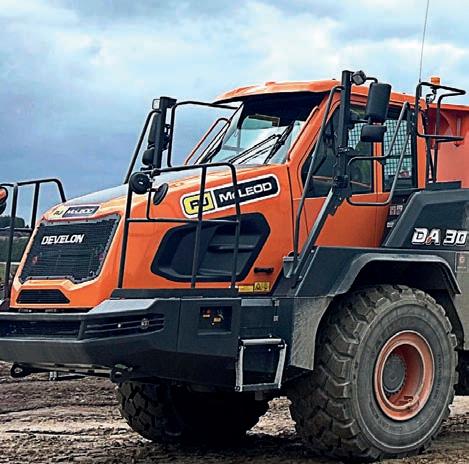
Stage V-compliant DC09 9L diesel engine, which provides 276kW of power.
The DA30-7 and DA45-7 6X6 models feature an articulation hinge positioned behind the turning ring, providing equal weight distribution to the front axle, even during maximum steer articulation. This, combined with a free-swinging rear tandem bogie, helps to ensure an equal distribution of weight to each wheel, as well as permanent six-wheel contact and drive, providing equal power distribution and strong performance, particularly on all types of terrain. Collectively, the forward turning point, the unique tandem bogie and the sloping rear frame result in highlevel capabilities in rough and soft terrain.
“We’re delighted to take delivery of these new machines, which are the rst stage of a signi cant investment in our expanding eet,”RJ McLeod plant yard manager Righa Gauld said.
RJ McLeod undertakes contracts throughout Scotland and northern England across a broad spectrum of civil engineering disciplines, with resources spread across Scotland, including the Western and Northern Isles. Specialist areas include work in the energy, roads and structures, marine, infrastructure, streetscaping, waste and ood prevention industries.
Roderick John McLeod created RJ McLeod in October 1951. ‘RJ’, as he was affectionately known, is remembered for his ability
to get the best from all who worked for him, and this, along with his business acumen, was instrumental in creating the successful company still ourishing today.
In June 2024, RJ McLeod was acquired by OCU Group, which continues to support the company’s future growth.
Established in 1865, Gordons is a premier distributor of agricultural and construction equipment in Scotland. With six strategically placed depots, the company is committed to providing a fast and ef cient local service for machinery, attachments and, most importantly, the best possible after-sales support. Gordons is now solely responsible for sales and servicing of the Develon crawler, wheeled and mini/midi excavator, wheeled loader, articulated dump truck, dozer and attachment ranges in Scotland and Cumbria in England.
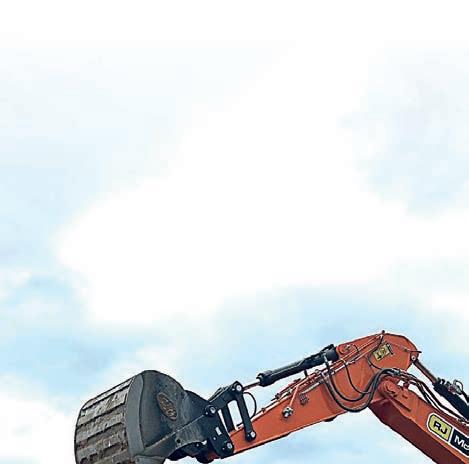
Gordons’ customers bene t from a superb on-site service network, covering everything from emergency repairs to routine maintenance. The company’s factorytrained engineers have extensive hands-on experience in the repair and servicing of all types of plant and machinery.
Develon is one of the world’s leading construction, quarry and mining equipment manufacturers, offering a broad selection of products including crawler and wheeled excavators (with operating weights from 1–100 tonnes), wheeled loaders (covering capacities from 1.9–6.4m3), articulated dump trucks (with maximum payloads up to 41 tonnes), compact wheeled loaders (from 3.5–5 tonnes), dozers (up to 15 tonnes) and products with alternative power sources. AB
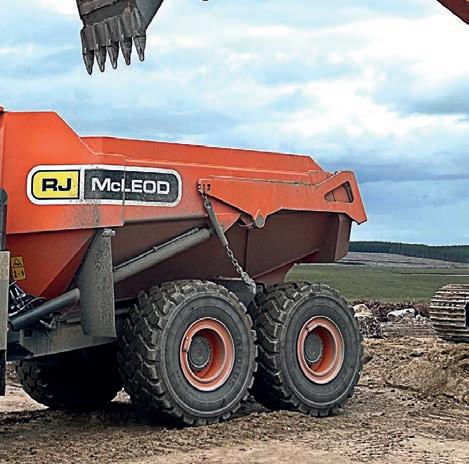

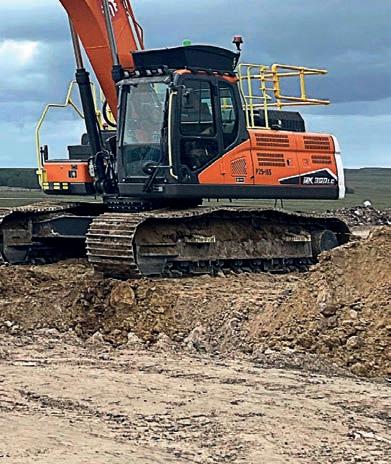



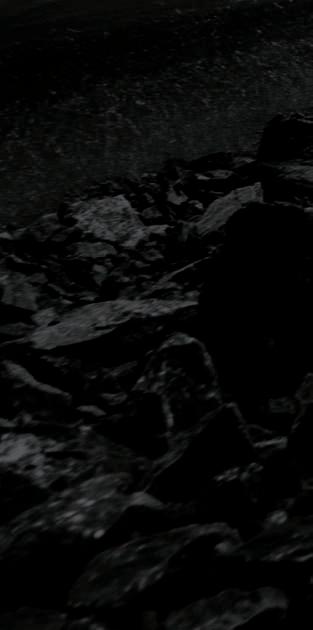




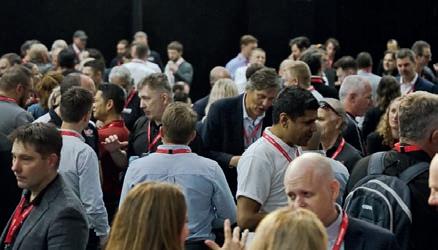

















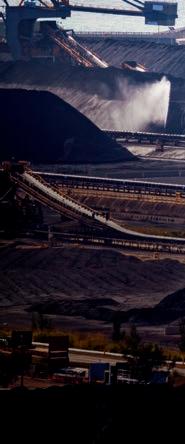


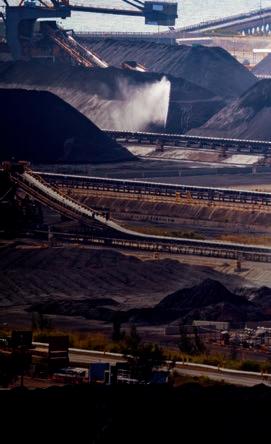
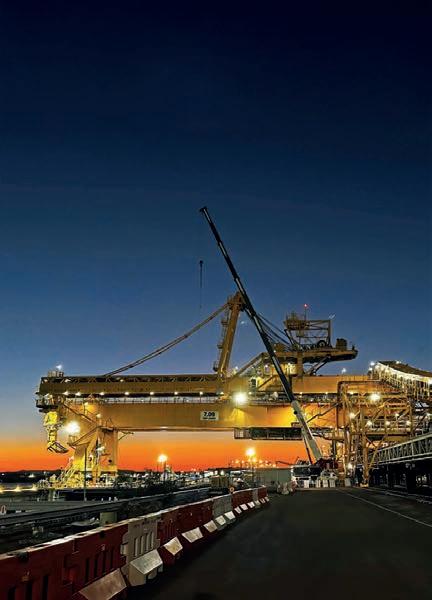
















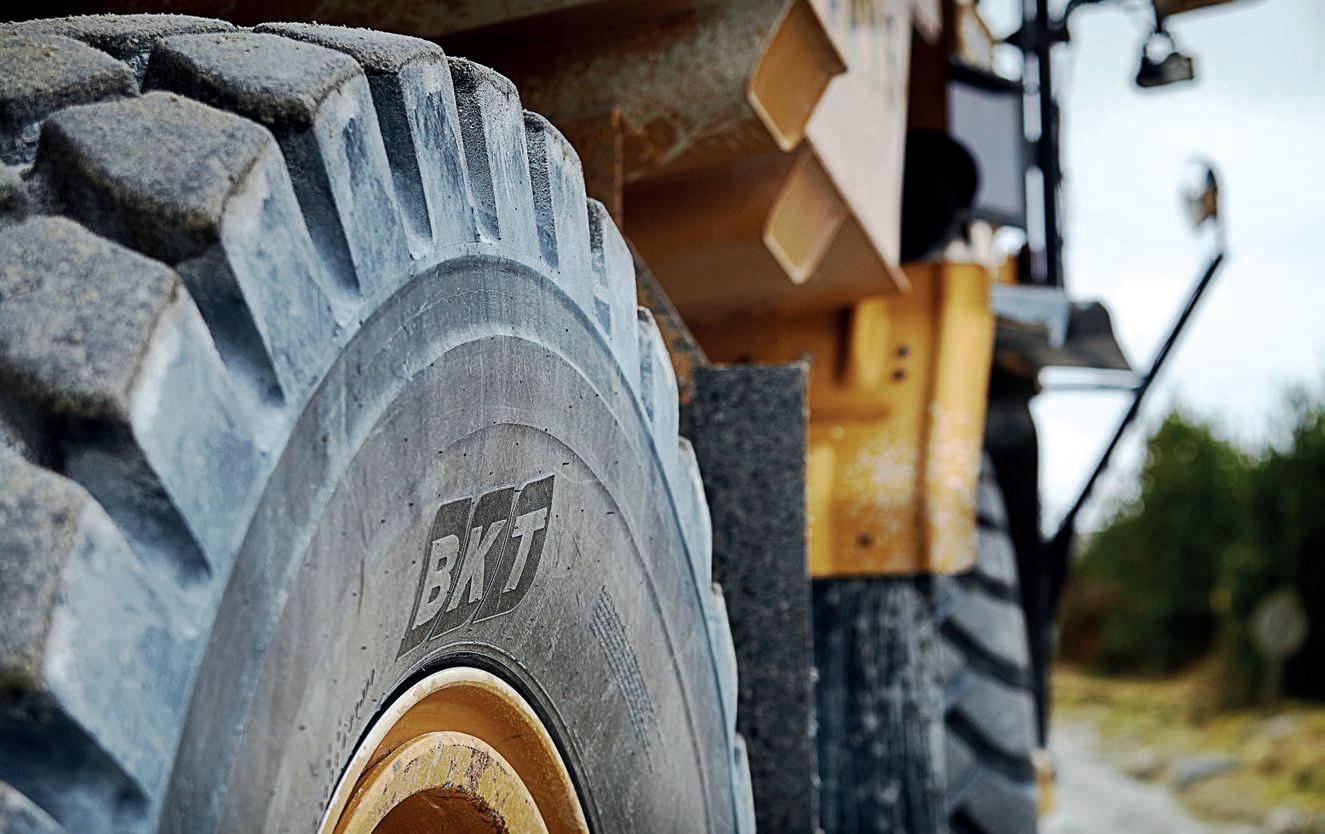

A leading figure in the global o -the-road tyre industry has provided an optimistic sales outlook for a quarrying machine market area that is increasingly embracing sustainability.
BKT (Balkrishna Industries) eld engineering director Piero Torassa said that throughout the 2024–25 nancial year, BKT consolidated its position in the mining and quarrying off-the-road (OTR) tyre segment, which represents a strategic pillar for the company’s growth.
“The year ended with a positive result in terms of both volume and pro tability, con rming the soundness of the path taken and the company’s ability to meet the needs of a highly challenging industry. Overall, for the 2024–25 nancial year, the OTR sector accounted for almost 37 per cent of the company’s total sales,” Torassa said.
“Major factors that contributed to these results include the expansion of manufacturing capacity, with new production lines dedicated to large-sized OTR tyres, and intensive research and development [R&D] efforts aimed at ensuring that products are increasingly high-performing, durable and safe, with a particular focus on developing advanced compounds and enhanced tread design.
“Other factors include eld performance tests and the development of tailored products for extremely challenging conditions, as well as a growing focus on sustainability and innovation. These two drivers guide the development of more ef cient processes with a lower environmental impact.”
Looking ahead to 2026, Torassa offered a positive outlook. He said global demand for tyres in mining and quarrying activities
continues to grow, driven by expanding extraction activities and infrastructure projects.
“BKT’s response to this growth is continuous investments in research and development, focusing on technological innovation and advanced solutions, such as sensors for performance monitoring,” he said.
Torassa said BKT’s geographic expansion strategy aims to strengthen the company’s presence in key markets, such as North America and Europe, while the Asia-Paci c region is also generating increasing demand for tyres.
“BKT’s next goals will focus on sustainability by developing more ef cient and environmentally friendly tyres, and on supporting global infrastructure growth, particularly in emerging markets, as a lever to further stimulate demand,” he said,
For the mining and quarrying industry, which typically involves highly complex operations, BKT has speci cally designed a highly specialised tyre range to meet the speci c needs of heavy equipment, such as rigid dump trucks and loaders. In these environments, where traction, stability and resistance are crucial for safety and ef ciency, the EARTHMAX tyre range, with its diverse patterns, is designed to meet even the most demanding applications.
EARTHMAX SR 45 H2 is an all-steel radial tyre suited to all operations requiring exceptional traction and stability. The E-4 tread depth increases durability, while the tread pattern reduces vibrations, improving operator comfort.
The all-steel structure with multi-layer belts helps to ensures resistance to cuts and punctures, as well as an extended lifecycle. The tyre is available in several compounds: standard, cut-resistant, or for long-haul cycles. EARTHMAX SR 459 is an all-steel radial tyre for rigid dump trucks operating in open-pit mines and quarries. Its symmetrical design facilitates the mounting process.
Engineered for durability, EARTHMAX SR 459 features extra deep tread, the deepest among all BKT tyres of the same size. In addition, the multi-ply steel belts offer superior protection against impacts and rock penetration. The tread depth is designed to provide optimal casing protection without compromising tonne-kilometres-per-hour (TKPH) values, promoting a long tyre life. The closed pattern with multiple lugs maximises ground contact, providing strong handling and stability, as well as operator comfort. Ultimately, BKT said, EARTHMAX SR 459 stands out for its claimed excellent traction on any terrain, even on muddy surfaces.
BKT’s EARTHMAX SR 46 is designed for rocky and abrasive environments. This tyre is said to offer excellent resistance to cuts and tears along with a longer life cycle thanks to its all-steel casing and belts. According to BKT, the tread, featuring block lugs and a longitudinal groove, delivers increased productivity and performance.
Latest BKT innovations include the EARTHMAX SR 47 TP, an all-steel radial tyre for rigid dump trucks speci cally designed for extreme conditions that require maximum traction and puncture resistance. The deep E-4 tread allows for a long lifecycle even on long hauls, reducing downtime. Ideal for muddy or slippery terrain, it is available in standard or cut-resistant compound.
BKT Europe has recently appointed Paolo Mantovani as head of original equipment manufacturer (OEM), industrial and OTR Europe, and said the move is a “strategic milestone” that accelerates the business’ journey to become a top-tier global player in the OEM market.
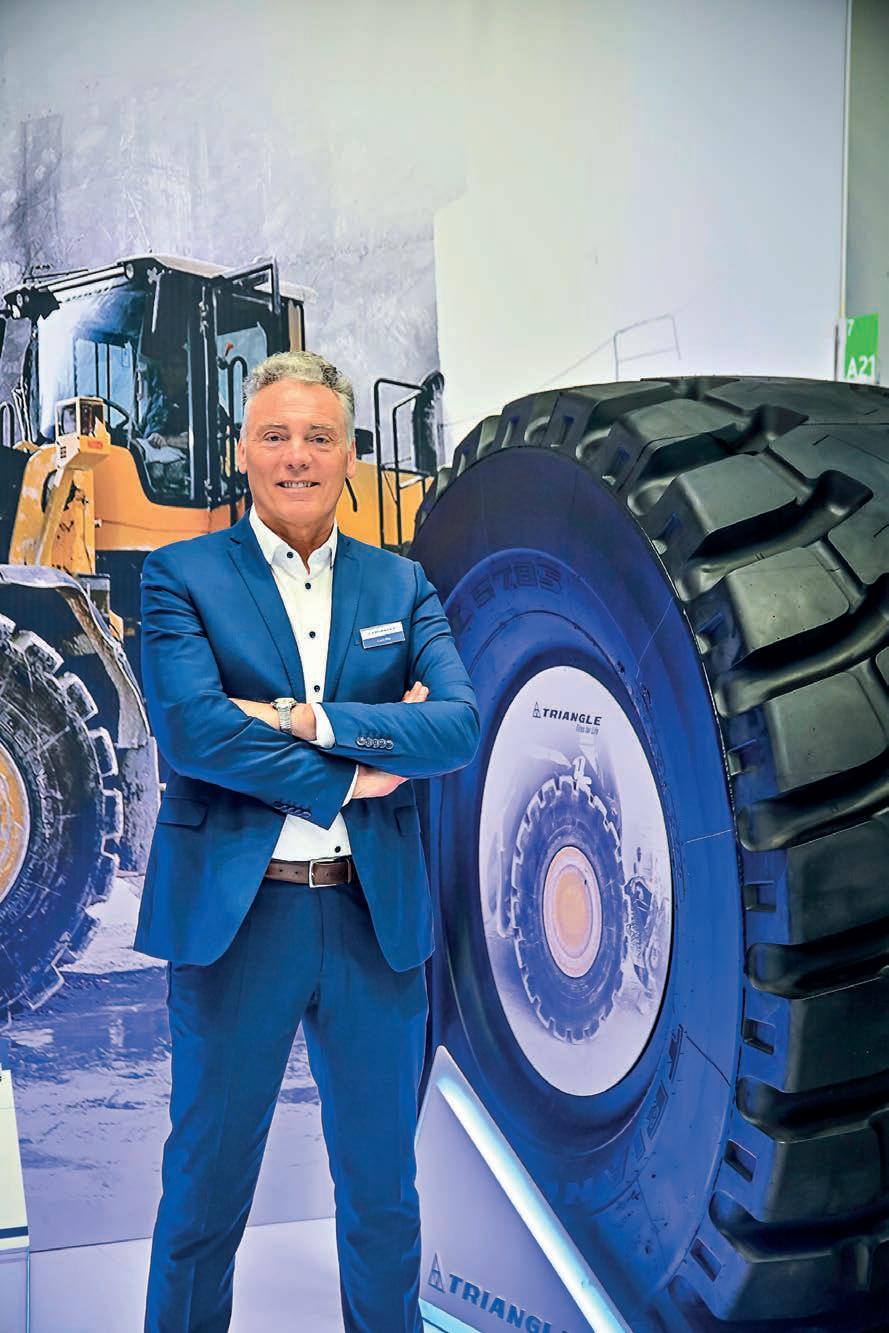
With more than 15 years of commercial and strategic experience across the tyre industry, Mantovani has held key roles in the passenger, truck, retread and off-road segments throughout Europe. His strong business acumen and deep understanding of OEM requirements will, according to BKT, be instrumental in driving the company’s growth and expansion in the industrial and OTR sectors across its key markets.
Following its successful participation at bauma 2025 in Munich, Germany, where it showcased agship OTR products and its new Tyre Pressure Monitoring System (TPMS), Triangle Tyre is unveiling additional OTR products in the second half of 2025.
“We are seeing tangible improvements in tyre life and site productivity thanks to a focused strategic approach to tyre management,” Triangle Tyre OTR director Europe Luca Mai said. “End users are enjoying the bene ts of changes in tyre policy that have extended the lifespan of tyres on their machines, signi cantly boosting productivity at their sites.
“These new products are a direct response to our customers’ need for durable, high-performance solutions that reduce downtime and operating costs in harsh and demanding environments."
Recognised as one of China’s largest tyre manufacturers and, according to Triangle Tyre, to be the world’s fourth-largest OTR tyre producer, Triangle delivers solutions for quarrying, mining, construction, port and industrial sectors. Its tyres are trusted by industry giants such as Caterpillar, Hyundai, Sany, CNH, and many OEMs.
The second half of 2025 will see Triangle introduce two new sizes – 23.5R25 and 29.5R25 – to its TB516 PRO E3/L3 range.
This non-directional tread pattern is designed for machines operating on sand and aggregate surfaces, offering a doublemarking option suitable for loaders and articulated dump trucks.
Also joining the range is the new TL538 PRO E4/L4, available in sizes 23.5R25, 26.5R25 and 29.5R25. Compared to the TB516 and TB516 PRO E3/L3, the E4/ L4 version features larger tread blocks, greater tread depth, and enhanced carcass protection. It delivers a deep-tread rock pattern and technology aimed at maximising durability, traction and overall performance in challenging environments.
In the L5 segment, the TL559S range will see the addition of 17.5R25 and 18.00R25 sizes. These tyres are designed with an extradeep tread, damage-resistant buttressed shoulders and sidewalls, and heavy-duty casing construction for greater longevity. Their cut-resistant rubber compounds and radial design help to ensure a smooth ride in abrasive conditions.
For quarry operations, Triangle is introducing the 18.00R25 size in the TB516 PRO range for rigid dump trucks. This tyre features a 150-level tread depth for improved traction and wear resistance in harsh working conditions.
Triangle is also expanding its Giant/Jumbo OTR tyre range by introducing a new generation of products for mining rigid dump trucks (RDTs). New additions include the 27.00R49 TB599 PRO, 46/90R57 and 50/80R57 TB599 A PLUS, and the 46/90R57 TB999A. These OTR tyres are especially recommended for (TKPH) operations. They are designed to t RDTs with payloads of up to 300 tonnes, such as those used in coal and copper mines, and oil sands operations worldwide.
Engineered for ultra-high durability, these new giant tyres feature innovations in tread patterns, rubber compounds, steel cord construction, advanced materials, and structural engineering. They are said to offer enhanced durability, more aggressive tread designs, improved heat dissipation, and the ability to carry larger payloads.
“Demand for premium OTR solutions keeps growing worldwide,” Mai said. “Our investment in cutting-edge products ensures that we can serve customers with a complete, high-quality range backed by expert service and support.”
Established in 1976, Triangle Tyre has signi cantly accelerated its global presence since its 2016 listing on the Shanghai Stock Exchange. Its distribution network spans more than 180 countries, with sales and technical service branches in China, Russia, the US, India, Singapore, Dubai, Panama and Australia, in addition to its Milan of ce serving the European market. The company operates a large manufacturing facility in Huasheng, Shandong Province, producing around 400,000 OTR tyres annually.
Into an AI era
Magna Tyres, an OTR, industrial and truck tyre manufacturer, has launched a new arti cial intelligence (AI)-powered chatbot on its website. This powerful tool is available 24 hours a day, seven days a week, offering instant assistance to customers and prospects worldwide in any language.
The chatbot represents a signi cant step forward in Magna Tyres’ customer service strategy, ensuring visitors receive fast, consistent, and helpful responses, regardless of their time zone, location or language. AB

Volvo R60 rigid haulers at work in a quarry.


Volvo Construction Equipment has been rolling out its new digital service, Volvo Site Operations, in many key markets following its European launch earlier this year. Aggregates Business looks at the opportunities the new platform o ers quarry and aggregates operators.
Volvo CE site solutions manager Jeroen Snoeck is excited about how Volvo Site Operations can help elevate the operations of the company’s quarrying and mining customers to new heights.
He told Aggregates Business that the solution was piloted at Swedish and German quarrying customer sites, along with other industry customer sites, from early 2024 before its of cial launch at bauma 2025 in Munich, Germany, in April. Now rmly embedded at those quarry pilot customer sites, Volvo Site Operations is also being initially made available to quarrying and mining customers in European and Oceania markets.
“Our current solution is Volvo Connected Map and Performance Indicator, which uses data from the Volvo Co-Pilot platforms [Dig Assist, Haul Assist, and Load Assist], but we also wanted to get the data from the non-Volvo machines, and Volvo Co-Pilot was not built for that. Customers needed and wanted to get the entire picture,” Snoeck said.
“As well as seeing machines going from A to B, quarrying customers wanted to start managing their material ows and stockpiles. As well as Volvo CE and other brands’ loaders and haulers on a quarry site, Volvo Site Operations integrates data from crushers and screeners, conveyors and silos. All those units can measure material volumes, and we wanted to bring all that tonnage information together to enable customers to leverage the data into actionable insights.”
With Volvo Site Operations, machine operators are provided with an intuitive tablet that collects geo-position, load ticket and other data. This information is then integrated with machine and productivity data gathered through a cloud-based solution, consolidating everything into a single, cohesive view. Site managers can monitor machine performance, track material ow and assess CO2 emissions and productivity across each process, enabling them to pinpoint areas for improvement.
Measuring critical parameters in the production ow, Volvo Site Operations offers
valuable insights to streamline tasks and optimise material movement. This can result in claimed productivity increases of 10–20 per cent. Production dashboards share key information on material movements and fuel consumption, removing the need for paperbased tracking and guesswork.
The service alerts operators in real-time to potential faulty dumps, helping to avoid
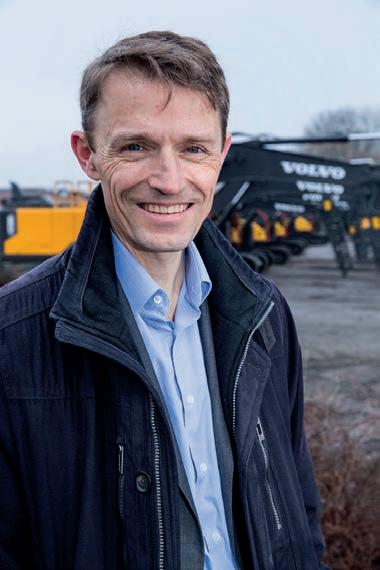
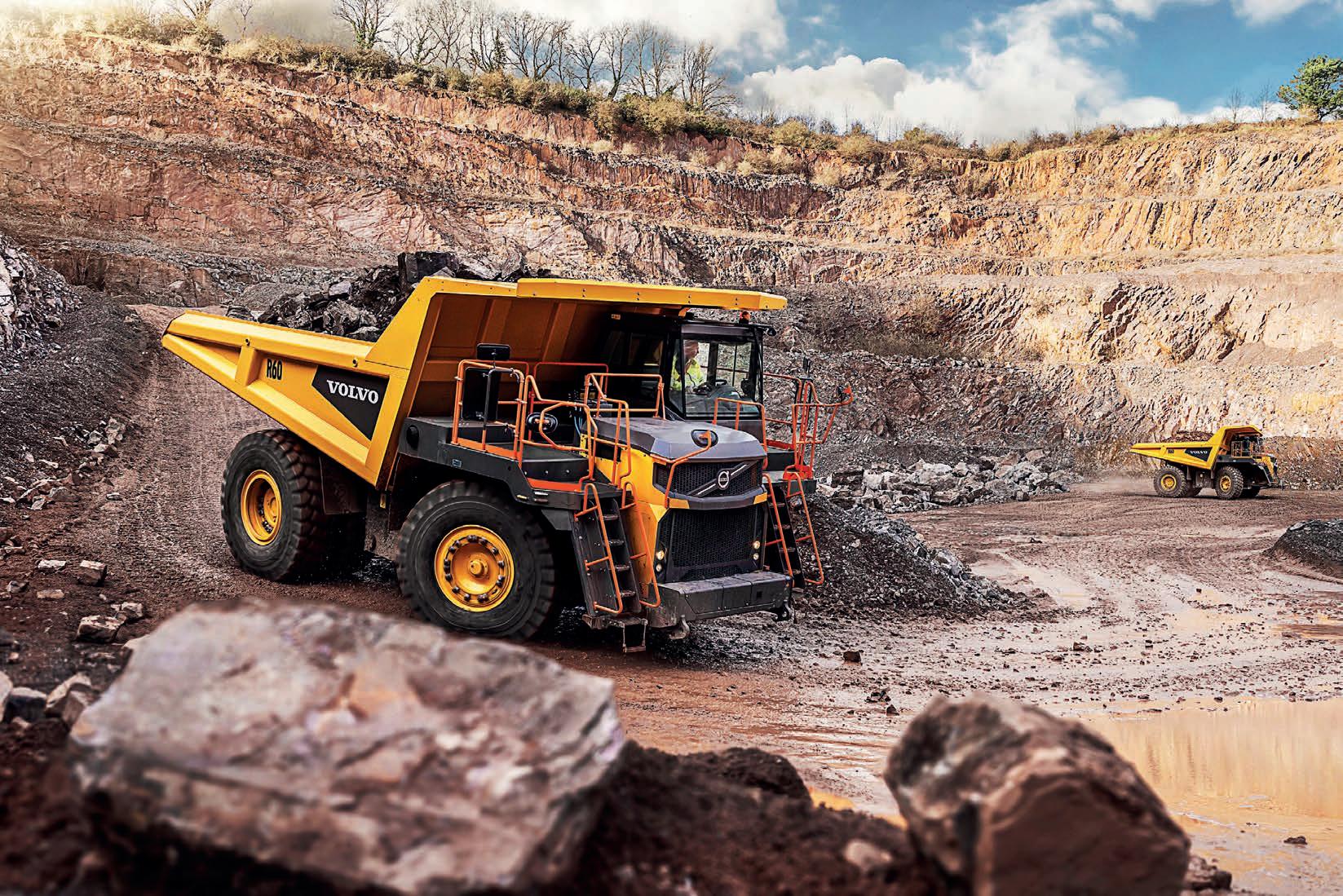
costly mistakes and rework. By automating data collection and reporting, administrative burdens can be reduced by up to 80 per cent, according to Volvo CE, simplifying processes, saving time and improving accuracy.
Snoeck said through advanced geo-fencing and asset positioning, Volvo Site Operations enables the real-time mapped tracking of machines and assets across worksites, enhancing situational awareness and supporting operators in making safer decisions.
Alerts notify operators of approaching vehicles, speeding and unauthorised entry zones. Instant communication of important site changes, like speed limits and restricted zones, helps prevent potential hazards. By improving visibility across the job site for operators, site management and visitors, the latter through a smartphone visitor app used by, among others, engineers arriving on-site to carry out machine maintenance and servicing, Volvo Site Operations elevates safety standards.
Volvo CE has estimated that Volvo Site Operations could enable potential fuel savings and CO2 emission reductions of between 10–15 per cent. The map, together with real-time positioning, helps optimise traf c conditions, reduce queues and waiting times to improve productivity while lowering fuel consumption. Accurate CO2 emission measurements from all machines and assets provide insights for eet optimisation. By leveraging data, actionable steps can be taken today to reduce emissions signi cantly.
“Most OEMs have signed up to the AEMP 2.0 standard, which allows us to get data from 120 different brands of machinery. But for the real-time production data, we work with third parties, like Loadrite and Tamtron, that provide weighing systems, and we integrate their APIs [application programming
interfaces] and clouds with our clouds,” Snoeck said.
“Volvo Site Operations is available in two levels: Site Operations Start and Site Operations Advanced.
“The rst level enables machine operators to view the location of other machines on their work site, offering better site safety and coordination. To start accessing and using data from Volvo CE and other machines, you require the Advanced package, and that is charged per asset. We don’t charge visitors for using the visitor app.”
Snoeck said each installation of Volvo Site Operations at a quarrying or mining customer site is not a case of “ icking a switch and it works”, but more of a close collaboration with the customer and their Volvo CE dealer.
“It takes around three to four months to get everyone to buy into it,” he said.
“We work with customers and let them tell us exactly what they are looking for. That’s how we ended up including silos and crushers in the system, given their criticality to material ow.”
Snoeck said Volvo Site Operations can be integrated into a quarry customer’s work site.
“We start by having a meeting where we don’t say much but instead listen to the customer describe their operation. From that, we might identify a key issue or pain points,” he said.
“We come to the next meeting with a proposal saying, ‘what if we implemented it [Volvo Site Operations] like this?’ If the customer likes this, we will go into more detail with one of our engineers and one of theirs about how we’ll set it up. The customer may want to test the solution with just two
or three machines to see how it works before expanding it across their eet.”
Snoeck said Volvo Site Operations has been designed for easy usability.
“You do have to specify material type if there is more than one material in a zone, so a loader operator can identify which they should be loading,” he said.
“If there is only one material type to load from a speci c zone, the system will automatically work with that.”
Snoeck said Volvo Site Operations can also be used to inform a loader operator or haul truck driver about their daily tasks and areas of operation.
“It may be that the site manager has asked an excavator operator to work on several material ows, and the operator can pick the ow he wants to start with. The system will recognise if the excavator operator is digging in the right ows, or if a truck is dumping in the right zone,” he said.
Based on customer feedback, Snoeck said Volvo Site Operations may be further enhanced at some stage by integrating each quarrying and mining customer’s planning systems, enabling them to better direct and monitor load and haul machine operators.
Snoeck said Volvo Site Operations has the potential to grow in key quarrying and aggregates markets.
“I think that the system suits sophisticated markets, such as Europe, Oceania and also North America,” he said.
“It is dif cult to roadmap its take-up. It is down to customer demand.” AB
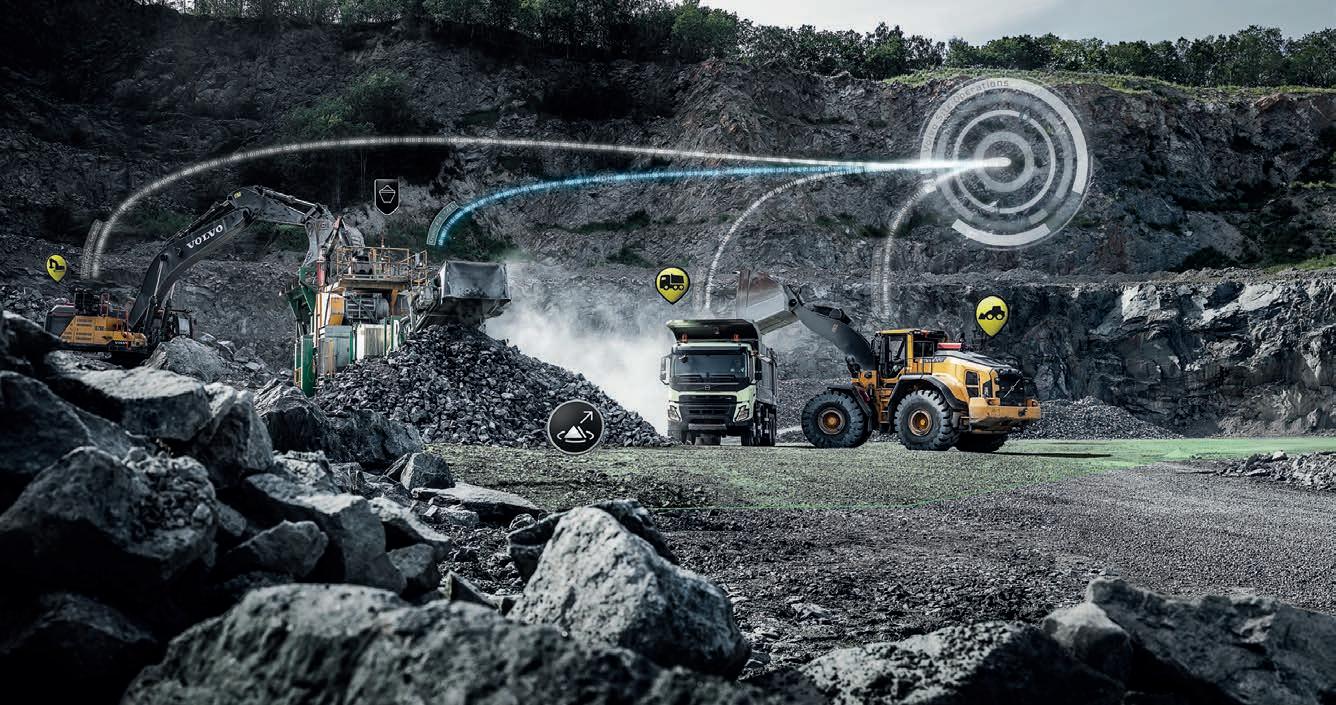


Registrations are open for CONEXPO-CON/AGG 2026, which will be held in Las Vegas, Nevada, in March next year.
Anticipation of CONEXPO-CON/ AGG 2026 continues to build as the major trade show has of cially begun taking registrations.
The show is set to return to Las Vegas, Nevada, from March 3–7, 2026. The show will focus on the major sectors within the construction sector, including the latest equipment, innovations and technologies.
“CONEXPO-CON/AGG is far more than an industry event; it’s the crucible where the future of construction is forged,” CONEXPO-CON/AGG show chair and LBX Company president and chief executive of cer Eric Sauvage said. “For exhibitors, this is a rare and invaluable opportunity to connect directly with thousands of decisionmakers, showcase state-of-the art products to an international audience and gain rsthand insight into the evolving needs of the marketplace.”
“The world’s leading innovators unveil their latest breakthroughs, create meaningful partnerships, and shape the direction of our industry for years to come.
“CONEXPO-CON/AGG is truly an unrivalled platform to demonstrate cutting-edge technology, engage with the brightest minds, and build enduring momentum for lasting success.”
New attractions
Held just every three years CONEXPO-CON/ AGG is a major event for construction industry professionals from all over the world. It showcases the latest equipment, products, services and technologies, along with industry-leading education.
“Attending CONEXPO-CON/AGG provides valuable exposure to any potential new and improved safety-related solutions and resources that can be shared, applied and
implemented in our business,” Payne and Dolan Inc aggregates manager Spencer Johnson said.
“There is a wide array of equipment, manufacturers, products, technology, education and people, and the show is very large, allowing for ample opportunity to explore speci c interests.”
Next year’s iteration will include several innovative additions to the line-up, including the Ground Breakers keynote stage and specialised workshops. This stage will serve as a central forum to spotlight the construction industry’s global in uence. Highlighting emerging factors in construction technology and methodology, will see discussion about key public policies and their implications, as well as solutions for the workforce, including labour shortages. Other key discussion points will include sustainability practices and mental health in the construction sector.
The Women in Construction: EmpowerHER Workshop will be a dedicated event designed to champion the aspirations of women throughout the industry. The workshop will provide networking opportunities and sponsorships that advance women-led construction projects. It will also include panels and keynote addresses from leading industry professionals.
The Small Business Workshop will empower the backbone of the industry and acknowledge the indispensable contribution of small businesses with the workshop crafted to address their unique obstacles. Attendees will be able to take part in networking opportunities and learn about actionable strategies and resources to support their business growth. The workshop has sponsorship options to support smaller enterprises.
CONEXPO-CON/AGG will return to Las Vegas in 2026.
The Shop Talks and Walks Workshop provides practical solutions for everyday operational challenges faced in the sector. This maintenance-centric workshop equips participants with hands-on solutions for daily operational challenges.
“CONEXPO-CON/AGG 2026 is more than a gathering; it’s the launchpad for the next era of construction,” CONEXPO-CON/AGG show director Dana Wuesthoff said.
“This is where construction industry leaders, innovators and visionaries converge to rewrite what’s possible. From groundbreaking technologies to lasting partnerships, every moment at the show is designed to inspire progress, spark new ideas, and propel the construction industry forward.”
CONEXPO-CON/AGG has also created a new cost-effective way for attendees to experience the Las Vegas-based event next year. People can use the code NEWS30 until December 5, 2025 for discounted pricing.
The show will offer early registrants priority access to limited-capacity workshops, hands-on experiences, and exclusive education sessions.
“If you move dirt, lay pipe or build infrastructure, this is your show. Period,” D2 Contracting owner Dylan Mercier said. “Don’t waste time wondering if it’s worth it.
“At CONEXPO-CON/AGG, you’re not sitting in a conference room listening to buzzwords you’re hands-on with machines, tech, and people who do the work.
“One trip out to Vegas could change how you bid jobs, build crews, and run your entire operation. You’ll leave with ideas and connections that will put you miles ahead.” AB
Registrations for the show are available via conexpoconagg.com
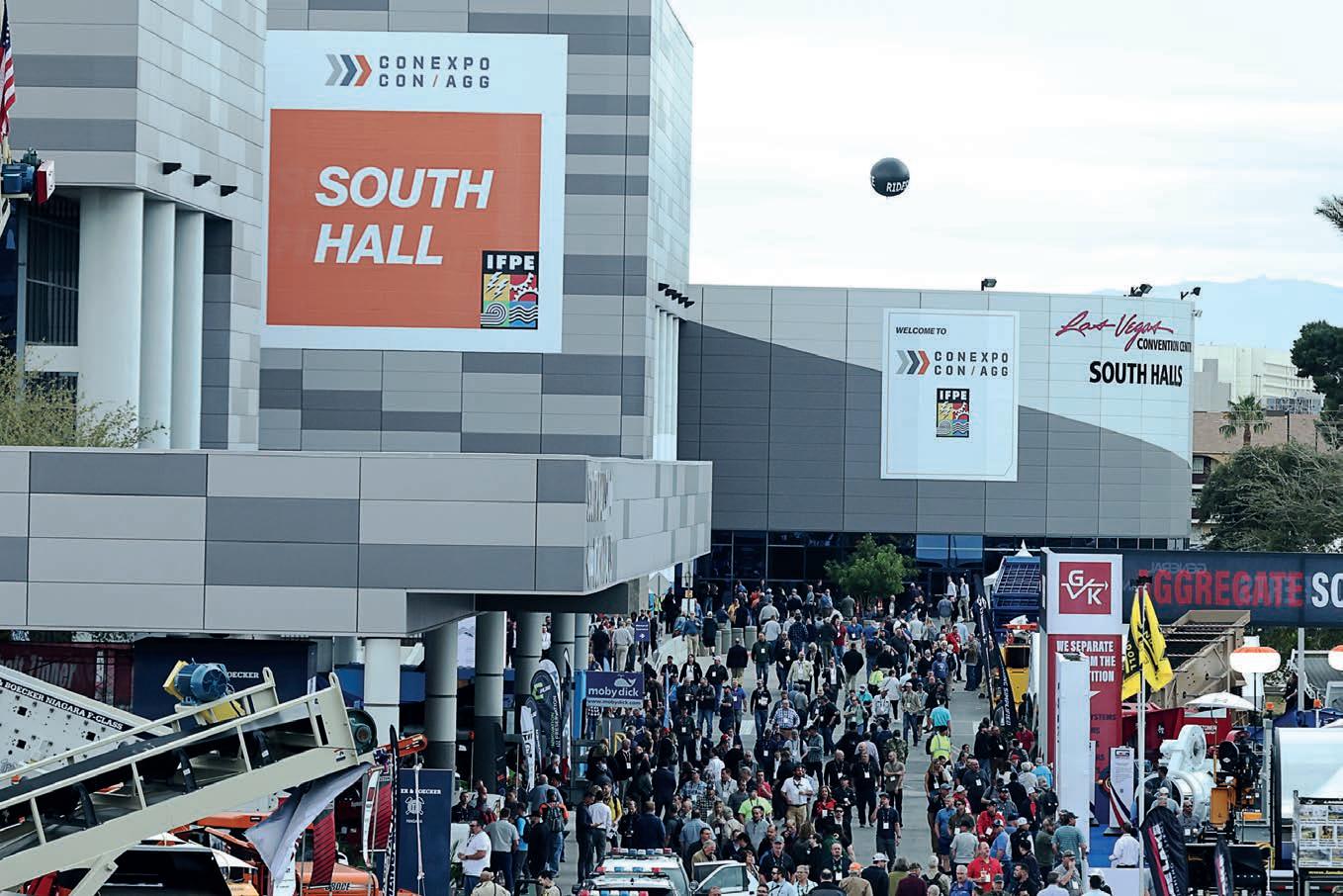






























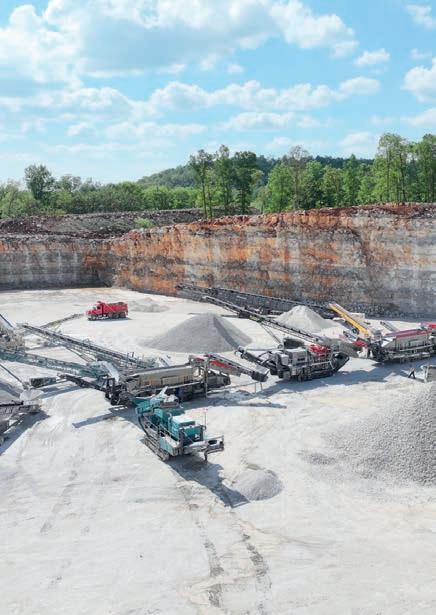






































MARCH 2026
3–7
CONEXPO CON/AGG
Show producer: Association of Equipment Manufacturers
Show owners: Association of Equipment Manufacturers, National Stone, Sand and Gravel Association, National Ready Mixed Concrete Association
Tel: +1 (866) 236 0442
1–4
National Stone, Sand and Gravel Association Annual Convention 2026
Organiser: National Stone, Sand and Gravel Association (NSSGA)
Tel: (703) 525-8788

MAY 2026
6-9
SaMoTer 2026 (International Construction Machinery Exhibition)
Organisers: Veronafiere in partnership with UNACEA and CECE
Tel: +39 045 11176091
JUNE 2026
23–25
Hillhead 2026
Organiser: QMJ Group
Tel: +44 (0) 115 945 4367
JULY 2026
1–2
PNG Expo
Organiser: Prime Creative Media
Tel: +61 (3) 9690 8766
SEPTEMBER 2026
2–5
steinexpo
Organiser: GEOPLAN GmbH
Tel: +49 72 29 606 0



